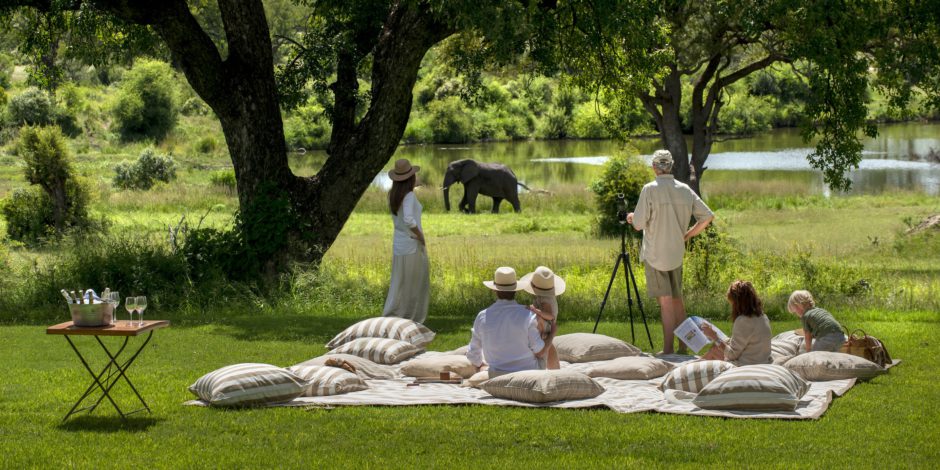Africa’s so incredible and vast that you have to see it multiple times – and from different perspectives! Experiencing a Big 5 safari in real life stirs you deeply, and seeing these world-renowned creatures in their natural habitat is a true treat. I still remember my first time, gazing up in awe at the wrinkles of an elephant towering over me, blinking slowly with those long lashes as we drifted past on a boat. And, of course, getting full-body goosebumps when a lion stared right into my soul as it walked right past our game drive vehicle. Seeing these creatures will change your life, and even more so when experiencing the Big 5 from land, water and sky. Here’s how and where…

Experiencing the Big 5 from water will float your boat, Image Credit: Lolebei Safari Camp
We Like The Big 5, And We Cannot Lie
The Big 5 consists of the lion, leopard, rhino, elephant, and African buffalo, which are Africa’s most famous large animals. There are many reasons why they made this short list, and experiencing the Big 5’s sheer size and strength is something you’ll always remember.
Each of these wildlife species have their own charms, which makes ticking all five off your list is such a treat! In Africa, there are certain locations that are best for viewing the Big 5, whether from land, water, or even sky! And as the World’s Most Awarded Safari Company, we know these places better than, well, an elephant knows its trunk!
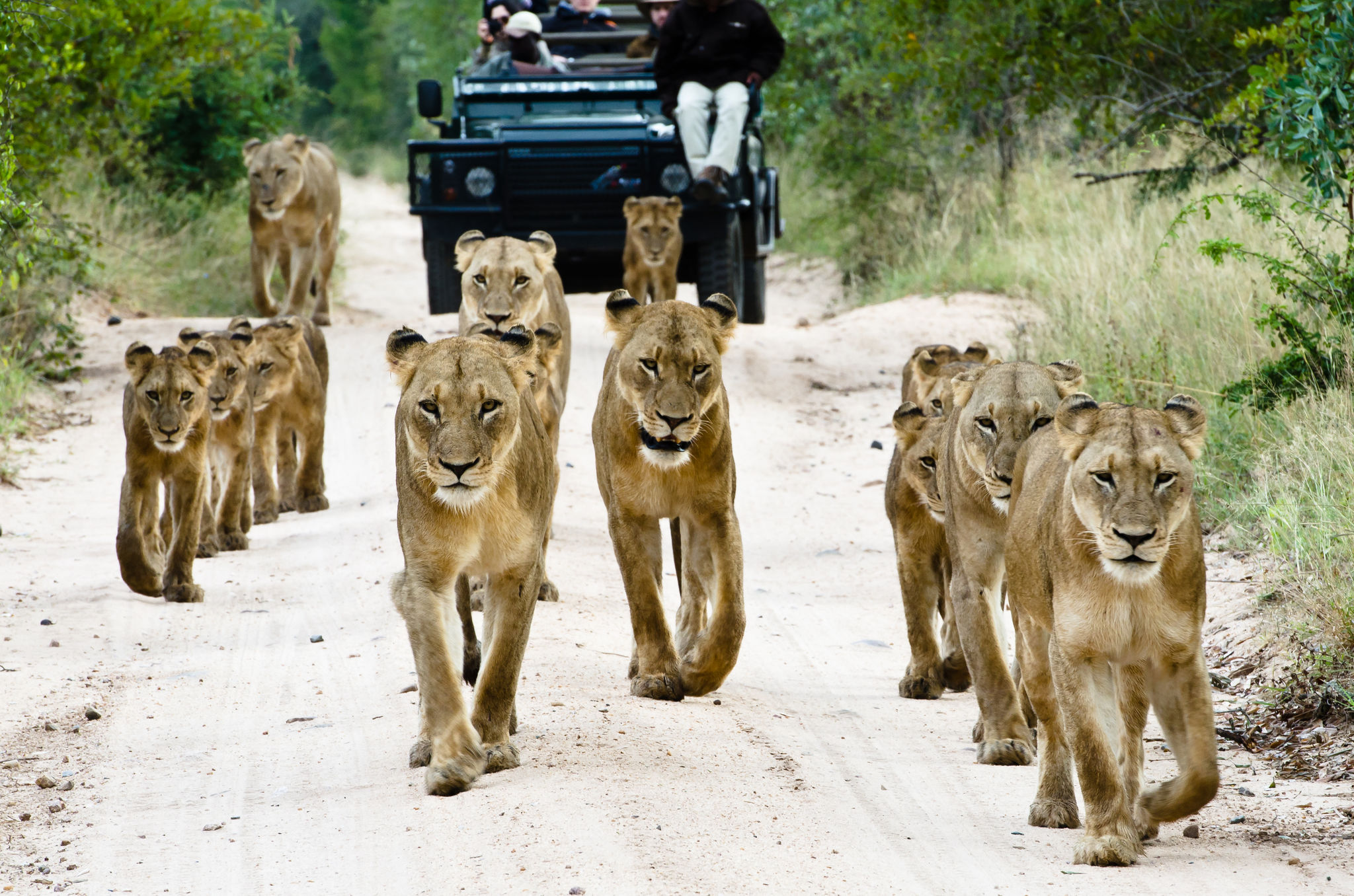
I always shiver in wonder and respect when I meet a lion
Where to See The Big 5 from Land
The classic safari entails heading out in an open 4×4 game drive vehicle to look for wildlife. Most lodges offer twice-daily game drives, one in the early morning and another in the late afternoon, when wildlife is most active. You’ll stop for a coffee or sundowner break, which is a highlight on its own!

Just imagine following in the footsteps of leopards
If you stay at certain luxury lodges, like those in private game reserves, you can also enjoy night game drives. This means you stay out after dark to see the nocturnal animals. This is a personal favourite of mine, as it feels like you’re looking through the peephole of another world since few people see them as they hide under the cloak of night.

Night game drives are always an exciting experience, Image Credit: Wilderness
One of the most widely known Big 5 safari destinations in Africa and one of our most requested destinations is the Kruger National Park in South Africa.
But amidst these wild landscapes teeming with wondrous wildlife , you also get some of the best luxury lodges in the world. The Greater Kruger is home to many private concessions, where you can opt for a more private or even exclusive-use option.

Our real-life unicorn, the rhino
Get Even Closer to The Ground on a Walking Safari
When staying in a private reserve, you also get to take part in special activities like walking safaris, where you take on the African bush on foot! Yes, just you and your hiking boots, following your guide in a single file as a whole new world opens up. These are my favourite safari memories, and I’ve done quite a few! It just never gets old as you notice all the tiny details and connections you might’ve missed otherwise.
Furthermore, walking free through the bush makes you feel immensely powerful yet extremely vulnerable at the same time, a delightful juxtaposition of emotions.
If you want the very best Big 5 walking safari, we also highly recommend the birthplace of this activity, South Luangwa National Park in Zambia.
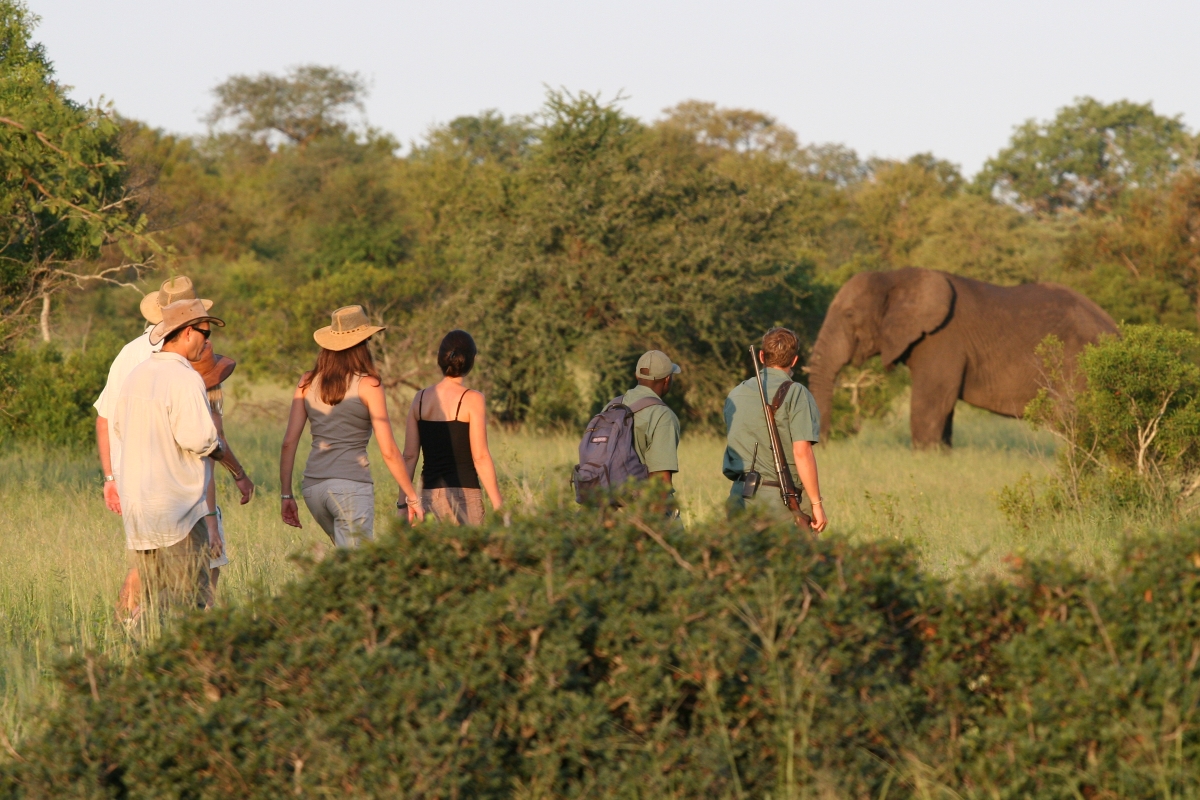
Walking safaris in Africa provide the perfect way to view nature at eye level, Image Credit: Rhino Walking Safaris
Seeing The Big 5 from Water
There’s something magical about silently gliding along water and meeting the eyes of wildlife lapping up the water from the riverbank. It moves you, just like the water does.
Botswana is by far our most popular water-based safari destination, home to both the Okavango Delta and Chobe River. I especially love going on a mokoro safari, a traditional canoe reminiscent of the gondolas in Venice. Because you’re sitting lower than on a boat, you feel closer to the animals and can take truly spectacular photos!
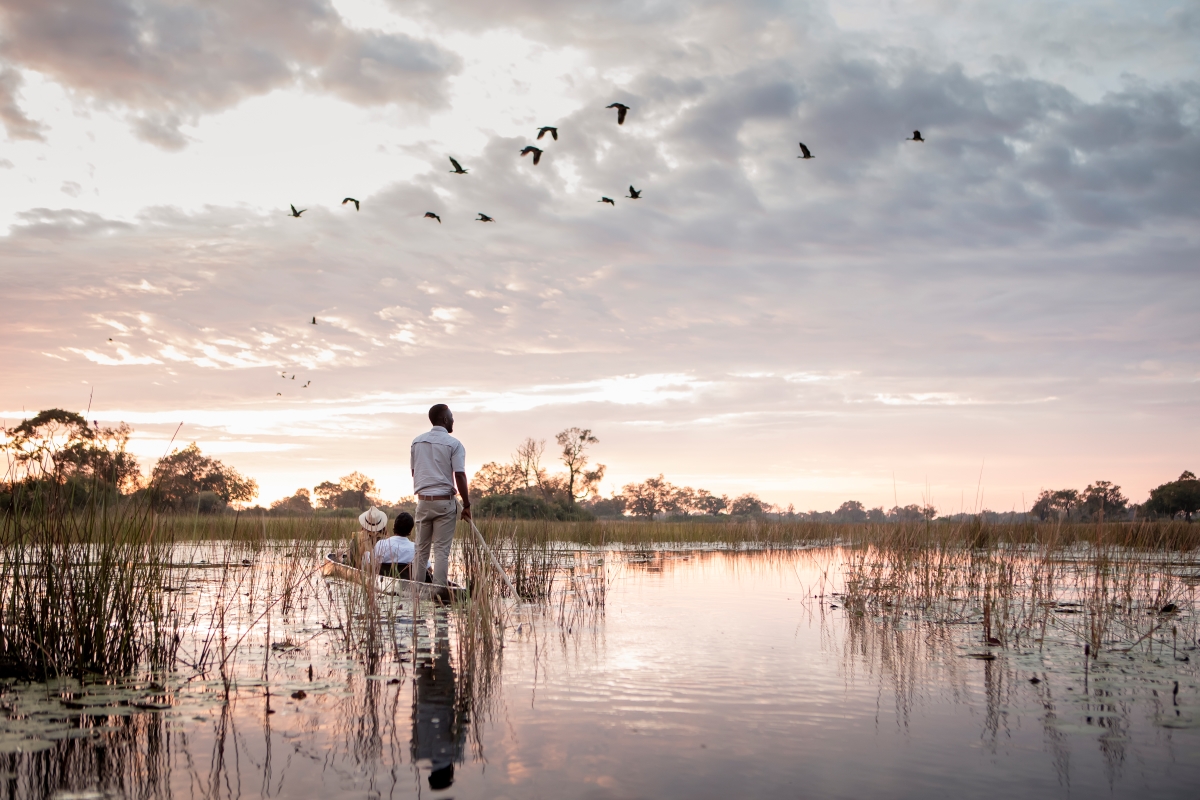
A whole new world, a a dazzling place I never knew, Image Credit: Wilderness Vumbura Plains
That being said, if you’re a true wildlife photography enthusiast, amateur or pro, there are some lodges that offer cruises on specially-adapted boats to help you get the perfect, stabilised and crystal-clear captures. The Chobe River region is renowned for its photo safaris, as well as for being the “Land of the Gentle Giants”, so expect fantastic elephant sightings!
Other recommended destinations for water safaris are Zimbabwe and Zambia, both sharing access to the Zambezi River. Feeding the renowned Victoria Falls, it’s the fourth-longest river in Africa and largest flowing river in Africa that flows into the Indian Ocean. It’s big, it’s beautiful and it’s got views of the Big 5! There are many excellent lodges located right on the riverbank.

Explore the riverbanks, islands and channels on a comfortable river cruise, Image Credit: Chiawa Camp
And Now: Experiencing The Big 5 From The Sky
Take your safari to new heights (literally!) by going on a hot air balloon ride. This is exactly as dreamy as it sounds, and often ends with a bubbly breakfast under a tree in the middle of the savannah. Now this is the kind of life you were meant to live, right?
The best places to see the Big 5 from a hot air balloon are in East Africa‘s Serengeti National Park in Tanzania and the Maasai Mara National Reserve in Kenya.
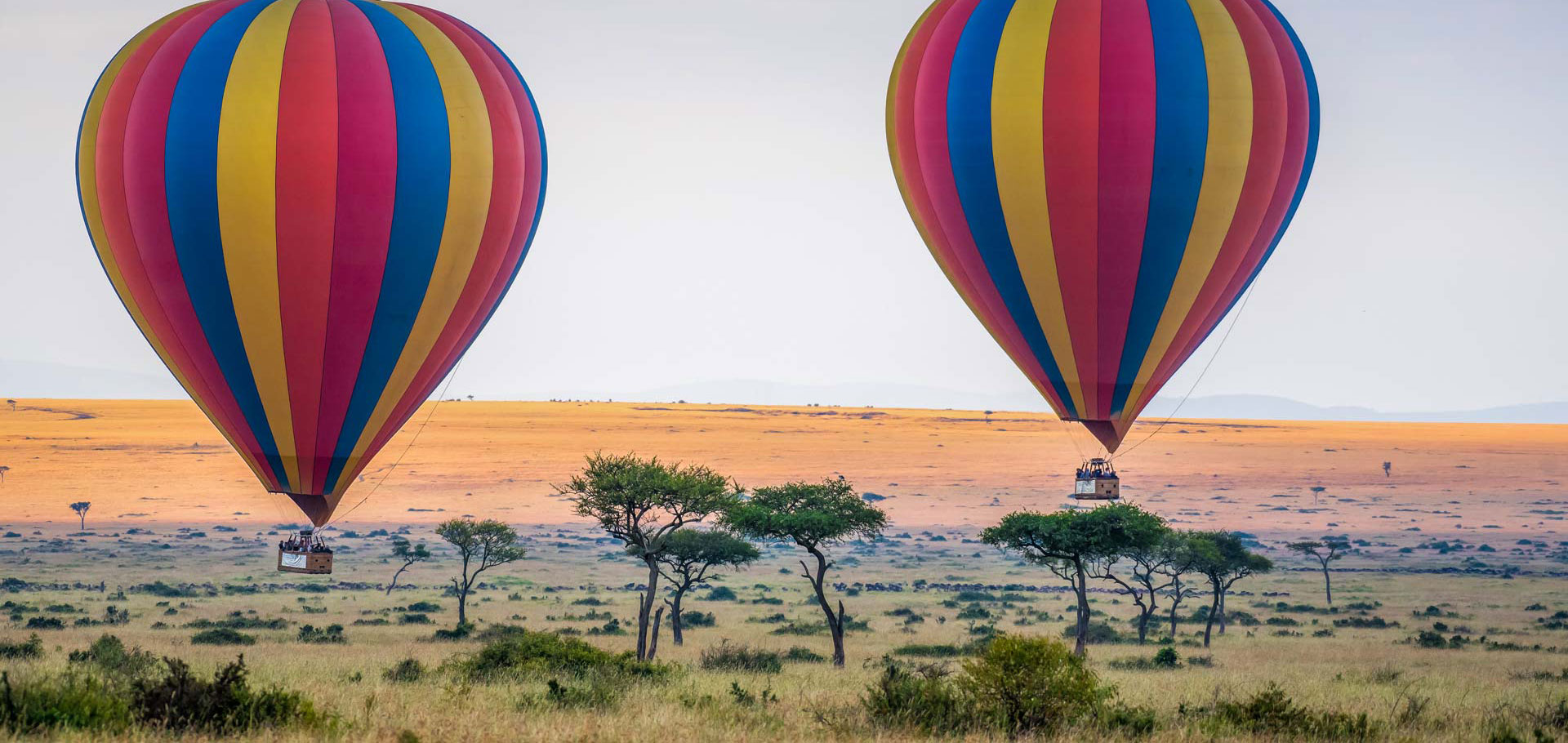
A hot air balloon safari in East Africa is one of the most romantic experiences
But it’s not only the Big 5 that steal the show… These countries are also where the Great Wildebeest Migration puts on its annual show! However, please note that you need to plan far in advance and get expert advice as they don’t stay in the same place for long. But don’t worry, our Travel Experts have the right people on speed dial to help you get a front-row seat.
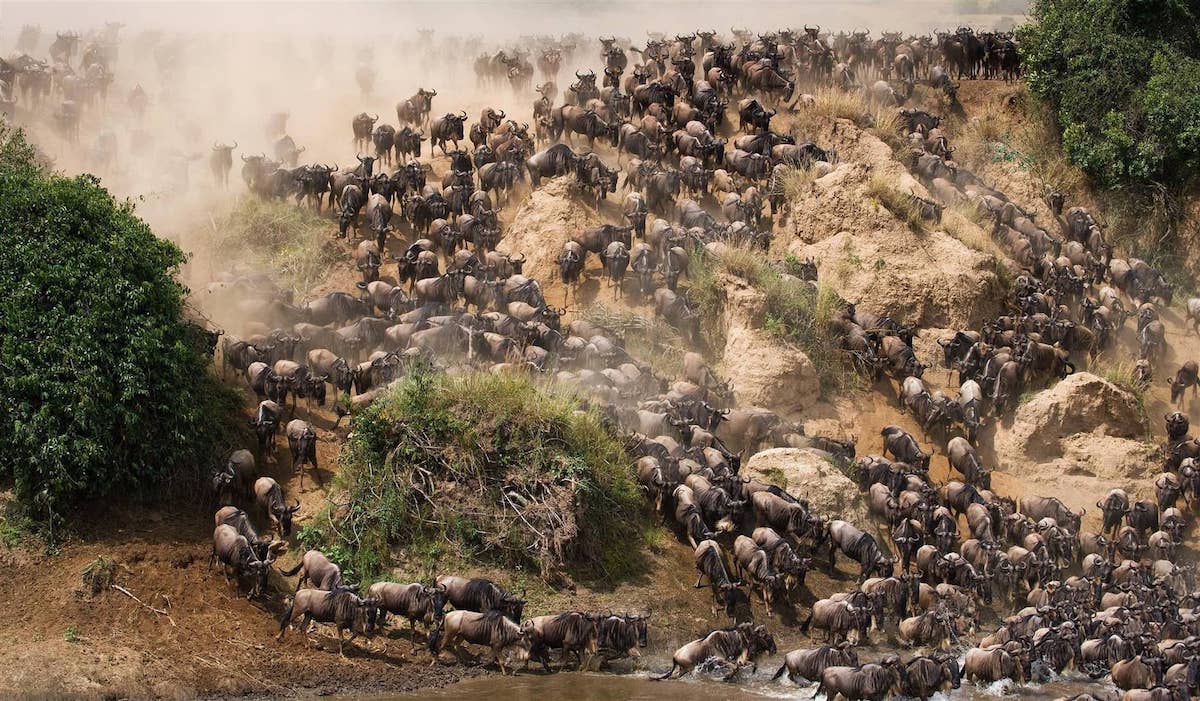
Seeing the Great Migration from the sky will give you a full picture of the masses of wildlife
Experiencing The Big 5 is a Few Clicks Away
So now you know your Big 5 better than your ABCs, and you also have an idea of where to go! However, Africa has more to offer than just the Big 5. Yes, there are many, many more fascinating animals and experiences we can recommend to you.
Just a word of warning: you might never want to go anywhere but Africa for your holidays after experiencing it once. But the good news is that we know our continent better than anyone else and will tailor-make a highly personalised adventure that will blow your safari socks off!
The first step? Reach out to our Travel Experts, who’ll get to know you a bit better before recommending the safari you could not even have conjured in your wildest dreams. Go on, try it. See you in Africa!
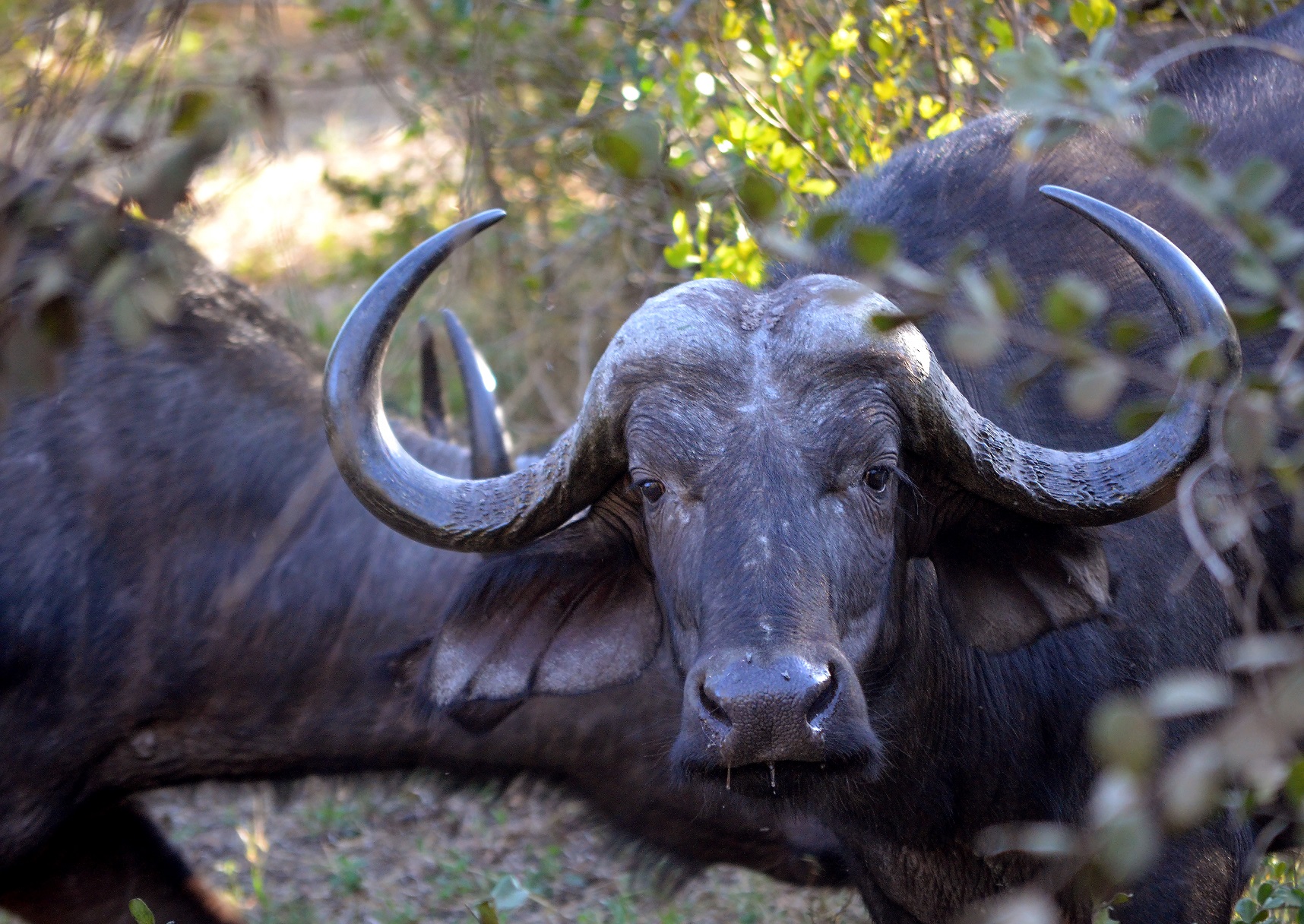
A buffalo is known for its temper and impressive horns, Image Credit: Tania de Kock
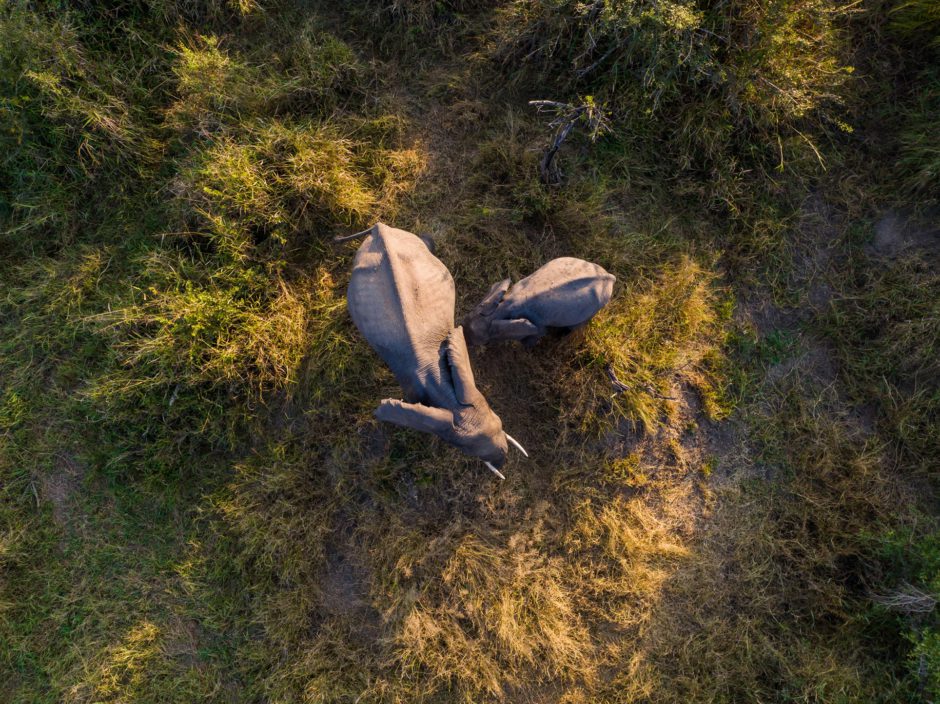
As though led by an invisible conductor, the dawn chorus gains strength as the birds of Hwange National Park welcome the sunrise with a song. Spanning an impressive 14,600 km² of untamed wilderness, Hwange (pronounced “wh-ungee”) is Zimbabwe‘s largest (and oldest) national park and home to over 400 bird species. But it offers more than feathery creatures, with some unbelievable wildlife sightings, making this an underrated safari destination in Africa. Join me on a journey of all the reasons Hwange remains one of my favourite safari destinations…
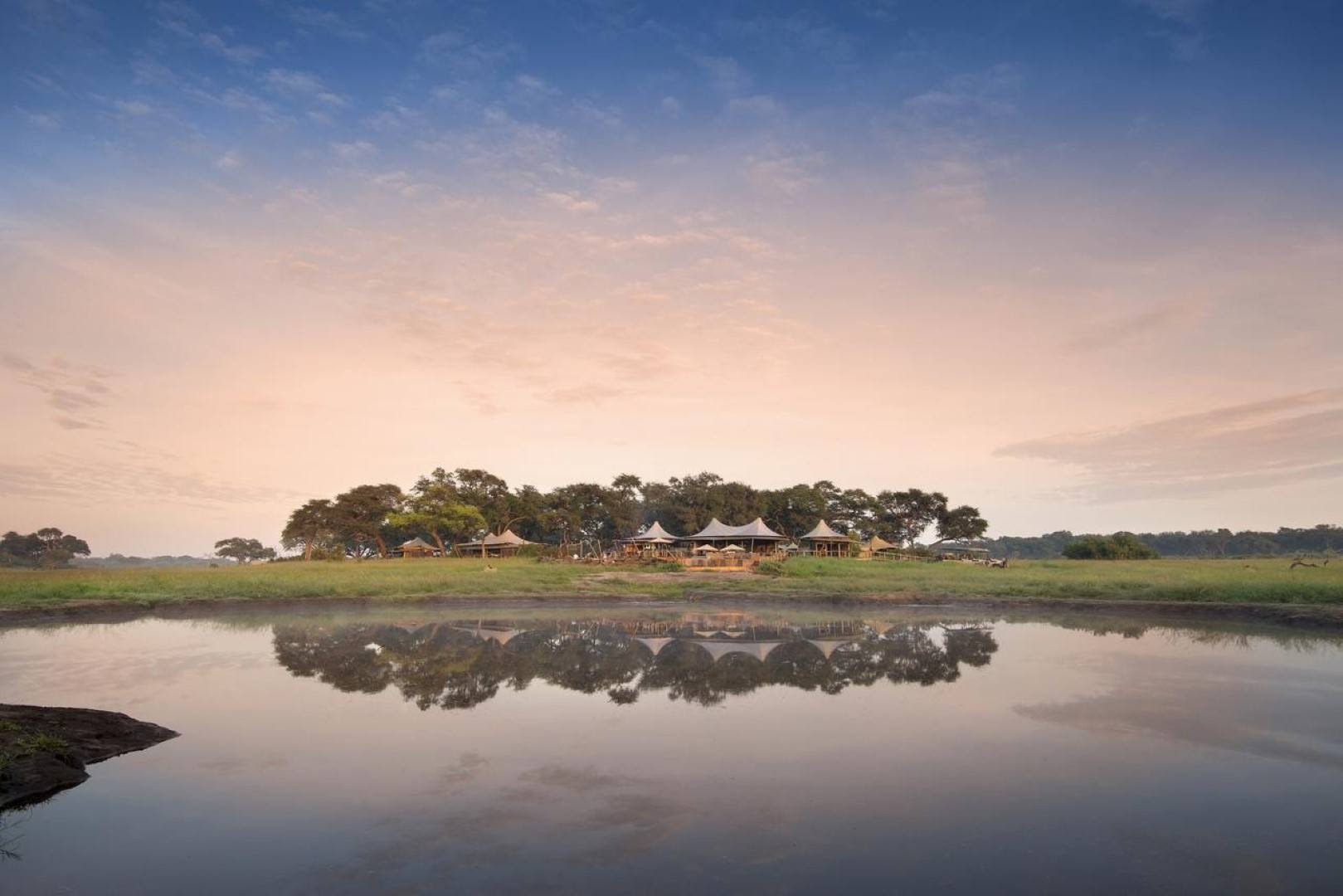
Hwange National Park is a birder’s paradise, Image Credit: Somalisa Camp
How Hwange National Park Stuns
Hwange is a Big 5 safari destination and one of the largest elephant sanctuaries in the world, so you’ll have plenty of opportunities to observe these magnificent creatures in the wild. But beyond the Big 5, the resident predators include cheetahs, hyenas, and a large African wild dog population.
However, from my personal experience, it’s not always the wildlife species you see on safari that stand out. Sometimes, it’s the dew glistening on the bush, the sip of Amarula liqueur coffee as the sun takes its first peek over the horizon, and the way you’re welcomed warmly back to the lodge after a game drive. Hwange National Park delivers this and then some. It’s a place you feel in your bones rather than just visiting.
It’s why our Travel Experts continually recommend it as a Zimbabwe safari destination for those guests who want to connect intimately with the wilderness.

Night game drives give you insight into nocturnal species, Image Credit: Wilderness
Hwange Highlights
As much as we love simply soaking in the natural surroundings, you want to ensure the safari destination you visit has enough to keep you entertained. And, boy, will Hwange bring its A-game.
With plenty of interesting and unique activities available in and around Hwange National Park, here are my top activities to get the most out of your African wildlife safari.
Game Drives
Each game drive offers a unique experience as your expert guide and tracker venture into the various landscapes that make up the national park, including the Kalahari desert, acacia woodlands, teak forests, and grasslands. It’s incredible to discover how the different habitats attract particular types of wildlife, which depend on them for food and shelter.
Plus, did you know that you can take the whole family along, even the little ones? Some game lodges offer child-friendly programs to ensure everyone has a blast.

Game drives are always a treat at Hwange National Park, Image Credit: African Bush Camps
Walking Safari and Horseback Safari
Beyond the standard twice-daily game drives, Hwange National Park offers intimate walking and horseback safaris. Once again, you’ll be led by experienced guides, but this time without the hum of the vehicle. Whether you choose your own two feet or the gentle gallop of a horse, you’ll get a different look into what makes Hwange special.
This is by far my favourite way to experience the African bush. Stop to watch the tiny ant lion catch its prey, learn about the meaning of the animal spoor before stepping over it and breathe in the natural perfumes of various plants.

Walk among wildlife for a life-changing safari
Bird-Watching
Hwange is a twitcher’s paradise, with numerous bird species to identify and observe. Even as a novice, I loved spending moments in the quiet, learning about the unique characteristics while trying to spot them through the binoculars. I enjoyed marvelling at the interplay between the birds as they worked together to build a nest or competed for the same prey.

Capture all the feathery action on camera, Image Credit: Dave Gale
Victoria Falls Day Trip
You simply cannot visit Zimbabwe without seeing Victoria Falls in person! With about an hour’s drive between Hwange and Victoria Falls, you can easily combine your safari with a visit to the famous “Smoke that Thunders”. Speak to our Travel Experts to arrange this outing with your lodge.

Visiting Victoria Falls is a must, seeing it from the sky is even better
Bumbusi National Monument
Take a step back into history by visiting the Bumbusi National Monument in Hwange National Park, where you can see the remains of colossal sandstone buildings from the eighteenth and nineteenth centuries.

Learn more about the area’s history, Image Credit: Bumbusi Wilderness Camp
My Favourite Places to Stay in Hwange National Park
There are many accommodations in Hwange National Park; however, these are a few of my tried-and-tested favourites.
1. Somalisa Camp
Beyond the beautifully furnished tents, I fell in love with Somalisa Camp’s expansive deck, where I spent lazy afternoons reading, only to be interrupted by an inquisitive elephant or two.
Due to its prime position on the Kennedy Vlei floodplain, there’s plenty to sit and stare at and many other wildlife vistors greeting you. It really feels immersive, with the surroundings being the hero instead of the camp itself. Although it’s pretty spectacular in itself and eco-friendly too, with a fully solar power farm and water purity system that allows the camp to recycle 80% of its water used. These efforts have not gone unnoticed, as it has been awarded the first GOLD Green Tourism Certification in Zimbabwe.
Another favourite of mine is the copper bathtub and outdoor shower, as well as the star tent, where you can arrange for a sleepout under the stars.
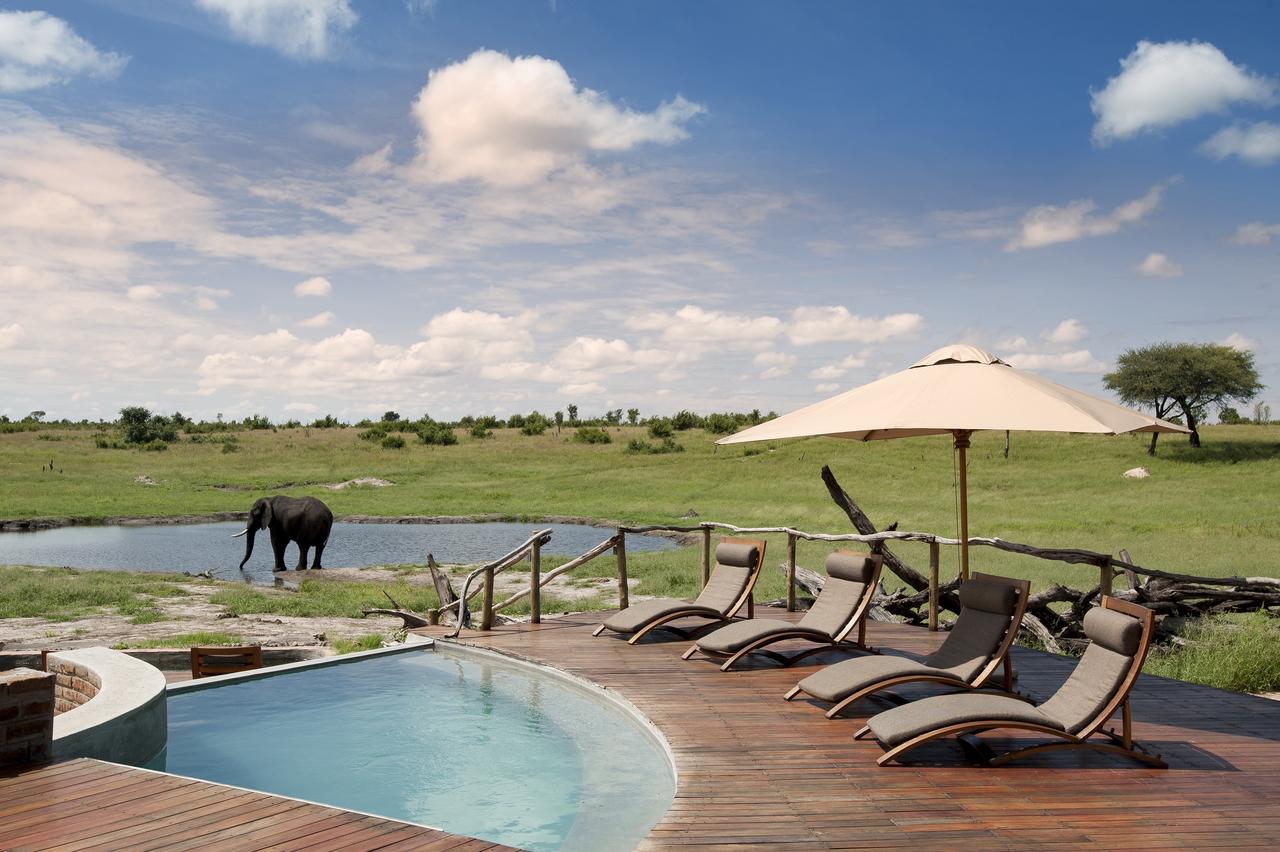
Watch herds of elephant drink from a nearby waterhole while cooling off, Image Credit: Somalisa Camp
Highlights
- Their Elephant Pool was named after its gentle giants frequent visitors
- Intimate, accommodating a maximum of 14 guests at a time
- Sleepout experience can be arranged for an additional cost
Who’s it for?
Eco-warriors and travellers are looking for a hideout to bond with their nearest family and friends. Please note that children over the age of 12 years old are welcome but walking safaris are only for those older than 16 years old.
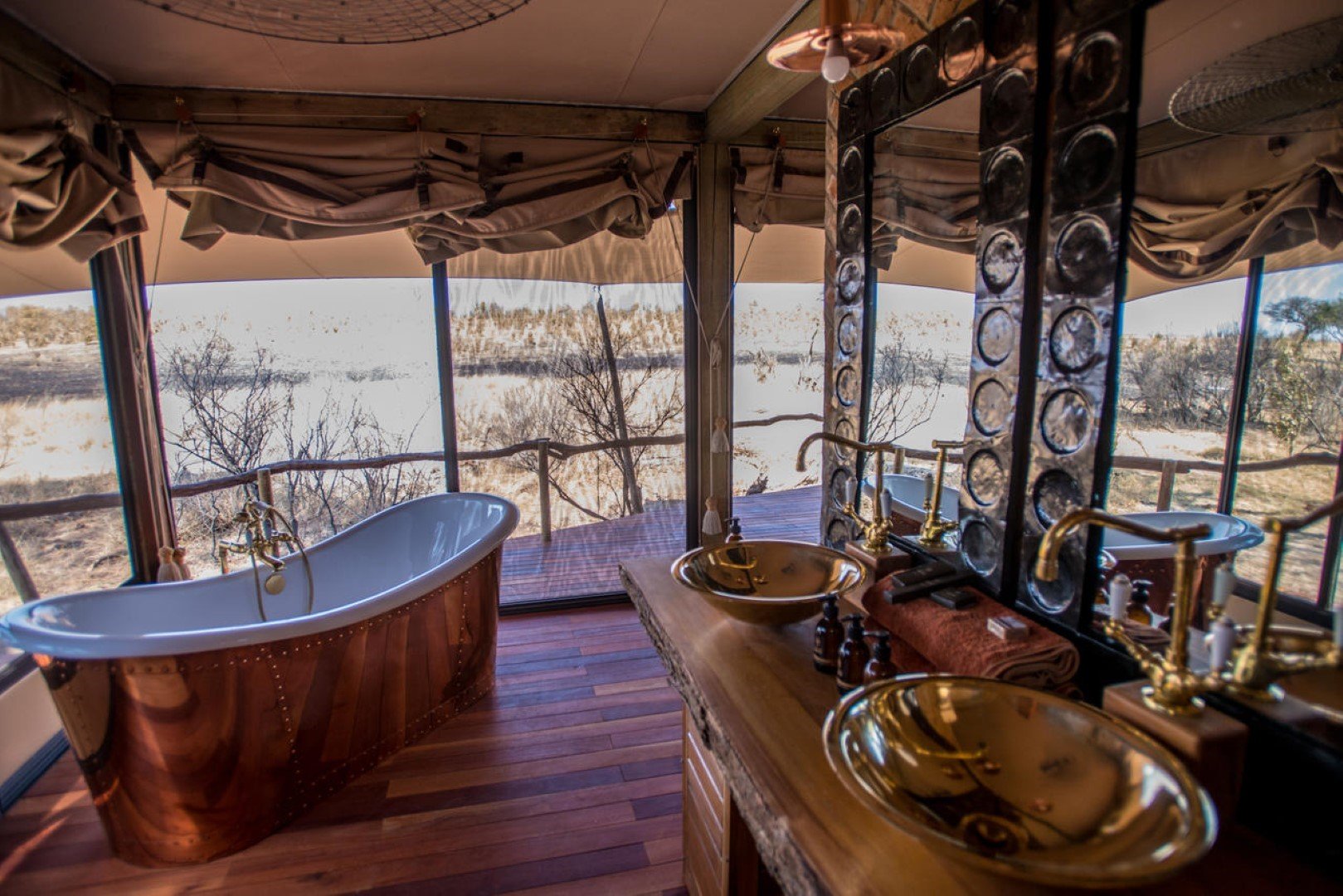
Bath with a view, Image Credit: Somalisa Camp
2. The Hide Safari Camp
The Hide Safari Camp is located in a private concession in Hwange National Park. It has everything you could need or want on your African safari, including an underground tunnel leading to a hide overlooking a popular waterhole! Its reputation as the “Best Tented Safari Camp in Zimbabwe” means you can rest assured you’re in good (no, the best) hands.
From sunrise to sunset, the little moments stand out at The Hide Safari Camp, with a team magically making everything happen behind the scenes. This setting is especially great for wildlife photographers as you’ll get unique angles from its namesake hide.
But you don’t even have to leave your tent to admire the wildlife, as elephants and other species are known to gather at the water hole the camp overlooks.
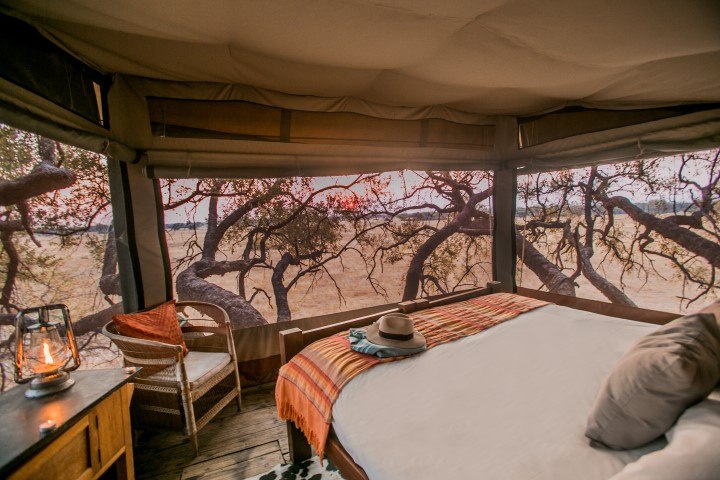
Spend a night at the Dove’s Nest for a sleepout experience, Image Credit: The Hide
Highlights
- Underground deck-to-waterhole tunnel for excellent close-up game viewing
- Located on a private concession for a more exclusive experience
- Consistently awarded for its high standard in luxury safari accommodation and experiences
Who’s it for?
It’s perfect for budding or pro wildlife photographers, safari enthusiasts, and romantic getaways like a honeymoon (in particular, their Dove’s Nest sleepout experience).

Get the best views of the wildlife from the camp’s famous hide
3. Verney’s Camp
I enjoyed the simplicity of this lodge, offering a very authentic safari experience without sacrificing quality and comfort. As it’s located in a private concession, I loved being able to go out on night game drives to witness the nocturnal species.
The area is incredibly rich in wildlife, with migratory elephant, buffalo and antelope herds frequenting Verney’s Pan, which in turn attracts predators, in particular a pack of African wild dogs and hers of lions. You can just imagine the action that ensues!
For families looking for an eco-friendly, immersive safari experience in a private concession, you can’t go wrong with Verney’s Camp.

Verney’s Camp welcomes children of all ages, Image Credit: Machaba Safaris
Highlights
Who’s it for?
Welcoming children of all ages, Verney’s Camp is perfect for your next family holiday.
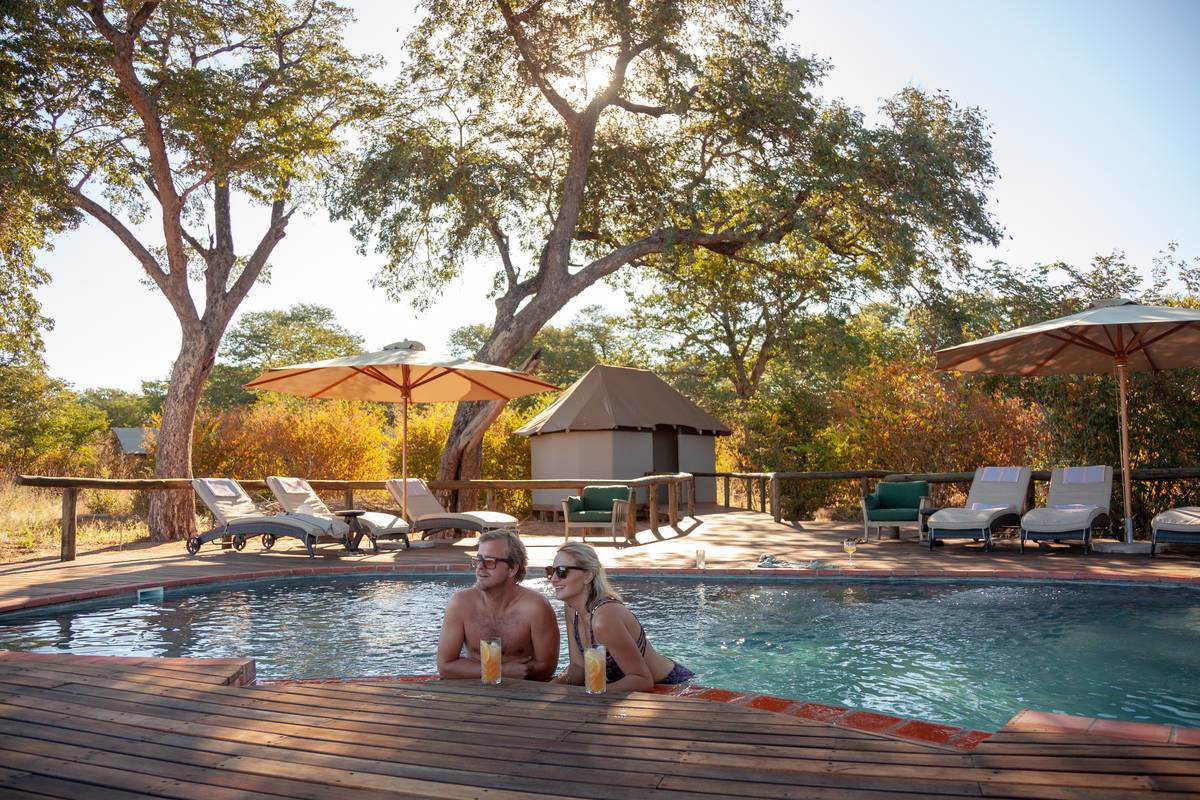
Soak up the sun and the views at Verney’s Camp, Image Credit: Machaba Safaris
Ready to Experience Hwange National Park Yourself?
I cannot recommend a safari in Hwange National Park enough! Are you ready to embark on an adventure of your own? Whether it’s a milestone celebration, family vacation, or you’re just looking for an excuse to escape, Hwange is an excellent choice. And why stop there? Our Travel Experts will recommend other destinations you can add on to your dream African safari!
Contact our Travel Experts, and let’s start planning your tailor-made African holiday!
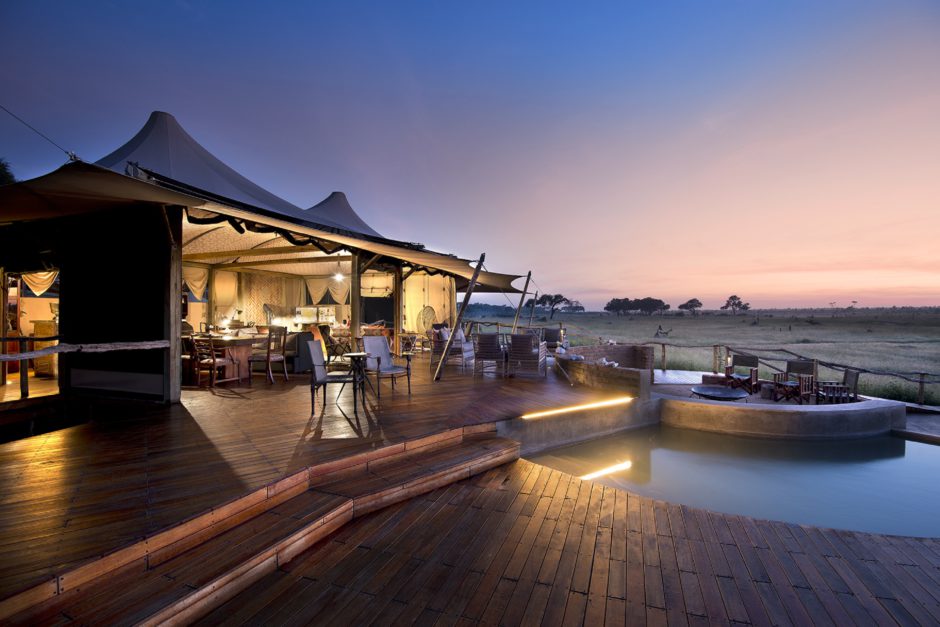
A Zimbabwean safari is akin to a hidden treasure – known to those who seek it yet concealed to the casual observer. It stands as the underdog of African safaris, much like the underestimated character in a bestselling novel. While many flock to world-famous (and rightly so!) destinations like Kruger National Park, Zimbabwe patiently awaits its moment, poised to amaze those who uncover its secrets. With the expert guidance of our Travel Expert, Sam, we unpack why Zimbabwe is a safari gem…

Zimbabwe’s exclusivity makes for an unforgettable safari, Image Credit: Nyamatusi Camp
Why Zimbabwe is a Safari Gem
So, what exactly is it about Zimbabwe that has left such a lasting impression on Sam, someone who’s been all over Africa for countless exciting safari adventures?
“The fact that it’s so remote makes Zimbabwe stand out. If you do a safari in Hwange and Mana Pools, or even the Kariba area, it’s very quiet, and there are generally far fewer vehicles. You also often get the opportunity to get out of the vehicle, do some proper walking, and get up close to animals. You don’t tend to fight for sightings with other guests. You can go a whole game drive without seeing another vehicle.” – Sam

You’ll feel as if you are the only people in the park, Image Credit: Somalisa Camp
“I love Zimbabwe. I absolutely absolutely love it! It’s very close to my heart because every time I’ve been to Zimbabwe, regardless of the hotel, camp, or destination I stayed at, it has always delivered something amazing. The people are very friendly. It’s not inauthentic, it’s not overhyped, it’s real. It’s calming, it speaks to you, it’s real Africa.” – Sam
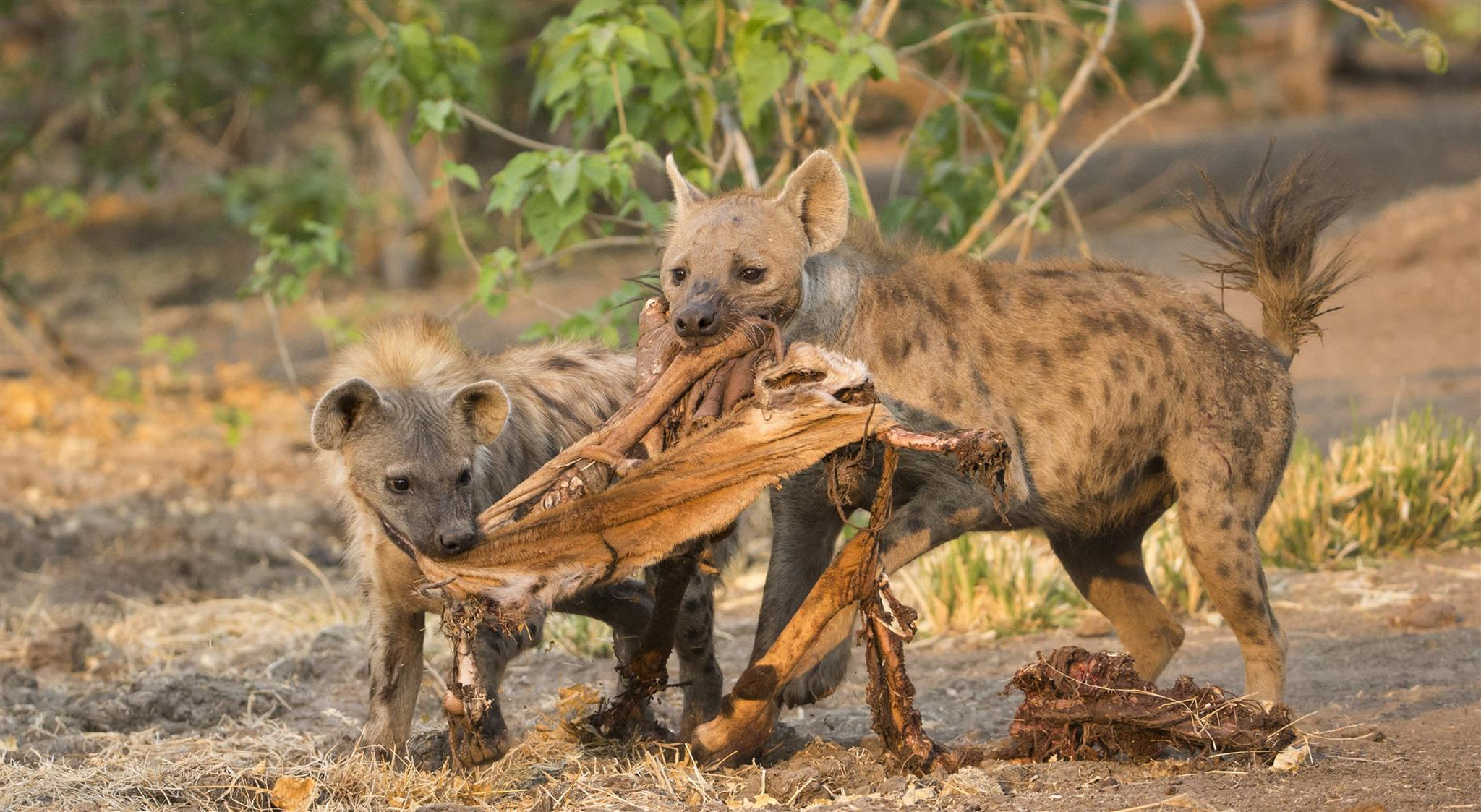
Expect the unexpected when on a Zimbabwean safari
Addressing The Elephant in The Pool
One of the incredible things Zimbabwe always delivers on is elephants! You’ll have your fair share of elephant sightings when visiting the country.
“For me, elephants come to mind when I think of Zimbabwe, only because I’ve had the most insane elephant sightings and interactions. Every time, it has been elephant central. I know they say Botswana is the land of elephants, but I think Zimbabwe is the land of elephants, as I’ve seen the most incredible huge tuskers in Hwange.” – Sam

A bull elephant making his presence known in Hwange National Park
One such memorable Hwange National Park elephant sighting happened while Sam was enjoying a dip in the pool at Somalisa Camp.
“It’s not just something you see on Instagram – this happened to me, on the night I stayed there. They had a swimming pool, and the elephants would come every day, and they would all just drink out of the pool. Young, old, big, small, all the ellies would just drink out of this pool. We literally saw they were drinking out of the one side, and I was sitting on the other side of the pool, and there were like six of us just sitting there watching, taking photos, hearing the slurping. It was insane, absolutely insane.” – Sam
In fact, thirsty elephants have become such regular visitors to the outdoor pool at Somalisa that a second pool had to be built – reserved solely for humans to enjoy!
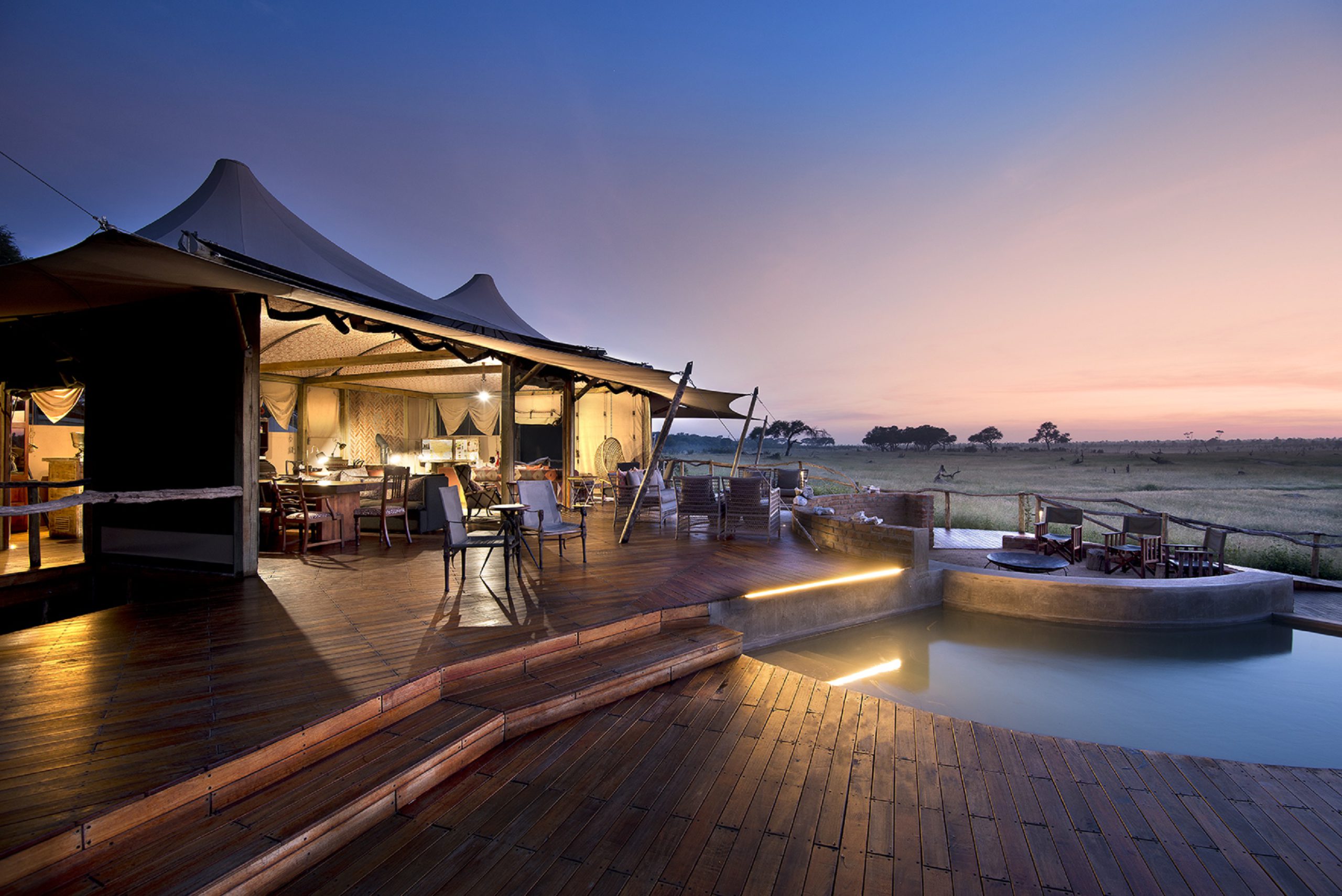
Take a dip and watch as herds of elephants pass by!
They Let The Dogs Out
Sam’s contagious enthusiasm for Zimbabwe is truly captivating. As I listened to her speak, I found my own excitement and curiosity beginning to flourish. Being naturally inquisitive, I couldn’t resist asking about one of her most unforgettable experiences, which turned out to be encountering African wild dogs, one of the most elusive animals to try and spot on safari, in Mana Pools National Park.
“We were doing a safari walk, and we happened to see some. We crouched down and sat there and watched them for almost an hour just interacting. And because they were so close, they were literally on the other side of a dry riverbed; we didn’t bother them, and they didn’t bother us. There was no one around us. No vehicles, no noise, no anything, just us on foot and these animals, and it was the most incredible sighting.” – Sam

Get up close to one of Africa’s most elusive species
Book Your Zimbabwean Safari Now!
So, there you have it! Straight from someone who’s been to Zimbabwe (multipe times!), and loved it. Zimbabwe is calling your name and has so much to offer.
Take a page out of Sam’s safari book and add Zimbabwe to the top of your travel itinerary to experience the magic of an authentic and exclusive safari.
Reach out to our Travel Experts today, and let’s craft your perfect itinerary!

Africa’s landscapes look different throughout the year, and the world’s largest waterfall is no exception. Therefore, knowing when is the best time to visit Victoria Falls in Zimbabwe or Zambia is important to ensure you make the most of your visit to this UNESCO World Heritage Site. We break down each season with their many highlights to guide you.

The best time to visit Victoria Falls depends on what you want to do, Image Credit: Sanctuary Sussi & Chuma
The Best Time to Visit Victoria Falls per Season
Also known locally as “Mosi-oa-Tunya”, meaning “The Smoke That Thunders”, Victoria Falls is a year-round destination, with each season bringing its own unique flavour. The main seasons are broken up into high water season, low water season, summer, winter, and peak safari season, with some seasons overlapping.
The best time to visit Victoria Falls if you want to see it at its most impressive is between February and May, as the summer rains have turned it into a cascading spectacle, visible and audible from far away.
When deciding when to visit Victoria Falls, you have to keep in mind that some activities, like swimming in Devil’s Pool, visiting Livingstone Island, and white water rafting, are seasonal as they’re only possible when the water levels are lower. And although there’s the best time for most activities, you should not discount those in-between seasons that are not as popular as they can offer a “sweet spot” of great benefits like better availability, lower rates, and a less crowded experience.
To help guide you, here’s an overview of each season and what to expect. However, if you book your tailored luxury Victoria Falls safari with us, our Travel Experts will recommend the best time to visit Victoria Falls for what you want to do and see.
February to July: High Water Season
At this time of year, “The Smoke That Thunders” really comes to life as Victoria Falls is at its fullest. Therefore, it’s considered the best time to visit Victoria Falls if you want to see it in all its grandeur. When you visit Victoria Falls National Park (Zimbabwean side), you can admire it from 16 different viewpoints. Just know that you could get soaked by the mist (your guide will give you a rain jacket), but that just adds another layer of fun to the experience!
The Zambezi River feeding this grand waterfall is also in full flood, so boat safaris will be a highlight of your trip, as well as game viewing at some of the best game reserves in Zimbabwe and Zambia. We highly recommend you go on both a sunrise and sunset river cruise on the Zambezi River, as each offers unique experiences.
You can expect fairly temperate weather, with cool mornings that warm up as the day progresses and cooling down again in the evenings. Please note that from around February, water rafting, as well as access to Devil’s Pool and Livingstone Island, are closed for the high water season. You can read more about what it’s like to visit during the high water season in my blog about my recent stay at Old Drift Lodge here.
Highlights
- Victoria Falls is at its fullest, giving you the full experience of its grandeur – you will get soaked!
- It’s the best time for helicopter flights to enjoy a bird’s-eye view
- Sunrise and sunset boat safaris are fantastic during this time
Ideal for
Seeing Victoria Falls and the Zambezi River in full flood.
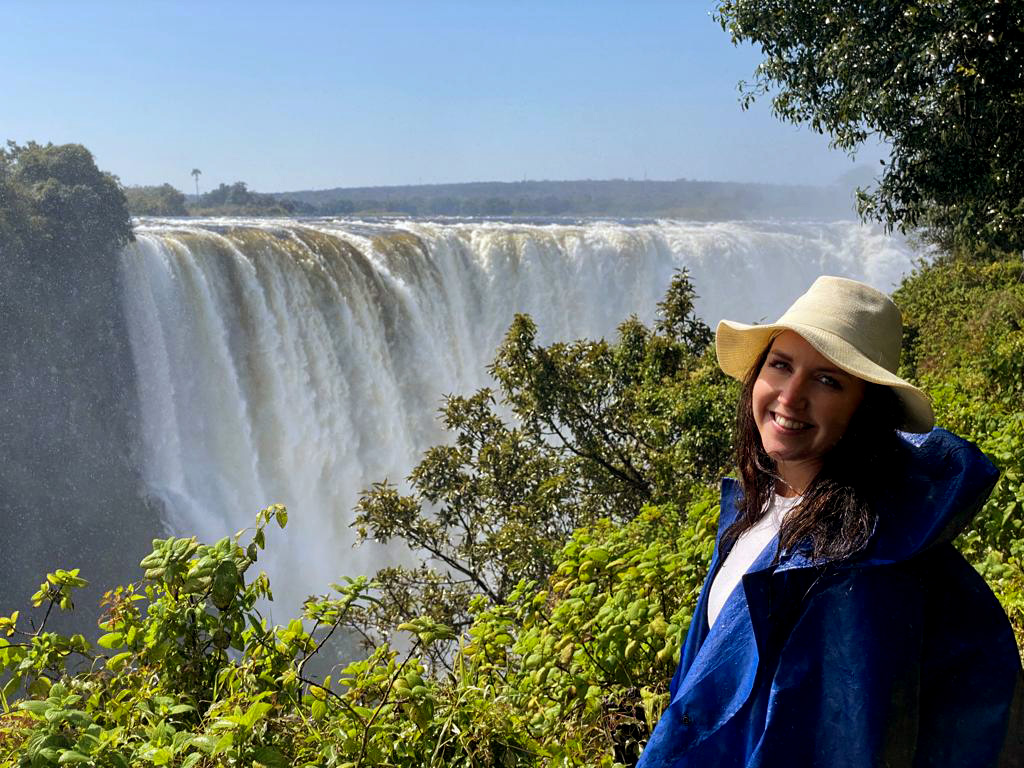
When I visited Victoria Falls in the high water season, Image Credit: Katharina Mandy
August to January: Low Water Season
This is the best time to admire Victoria Falls from up close, as the mist is lower, so you’ll still feel it but won’t get drenched. You can also see the geological formations usually hidden under the gushing water.
The low water season is also the perfect time to experience why Victoria Falls is nicknamed “Africa’s Adventure Capital”. This is the time to enjoy those seasonal activities – white water rafting, swimming in Devil’s Pool, and visiting Livingstone Island! White rafting is best from November to December as the Zambezi River is at its lowest.
This is also a great time to enjoy bungee jumping, zip-lining and gorge swinging (although they’re year-round activities) as the weather is not so hot. Migratory birds also start arriving in the area around November, making it a great time for birdwatching.
Highlights
- White water rafting, as this activity is only possible when the water levels are lower
- Swimming in Devil’s Pool on the Zambian’s side (if you’re staying in Zimbabwe, you can take a day trip across)
- Visiting Livingstone Island, as it opens again due to the lower water levels
Ideal for
Adrenaline seekers looking for the most exhilarating activities.
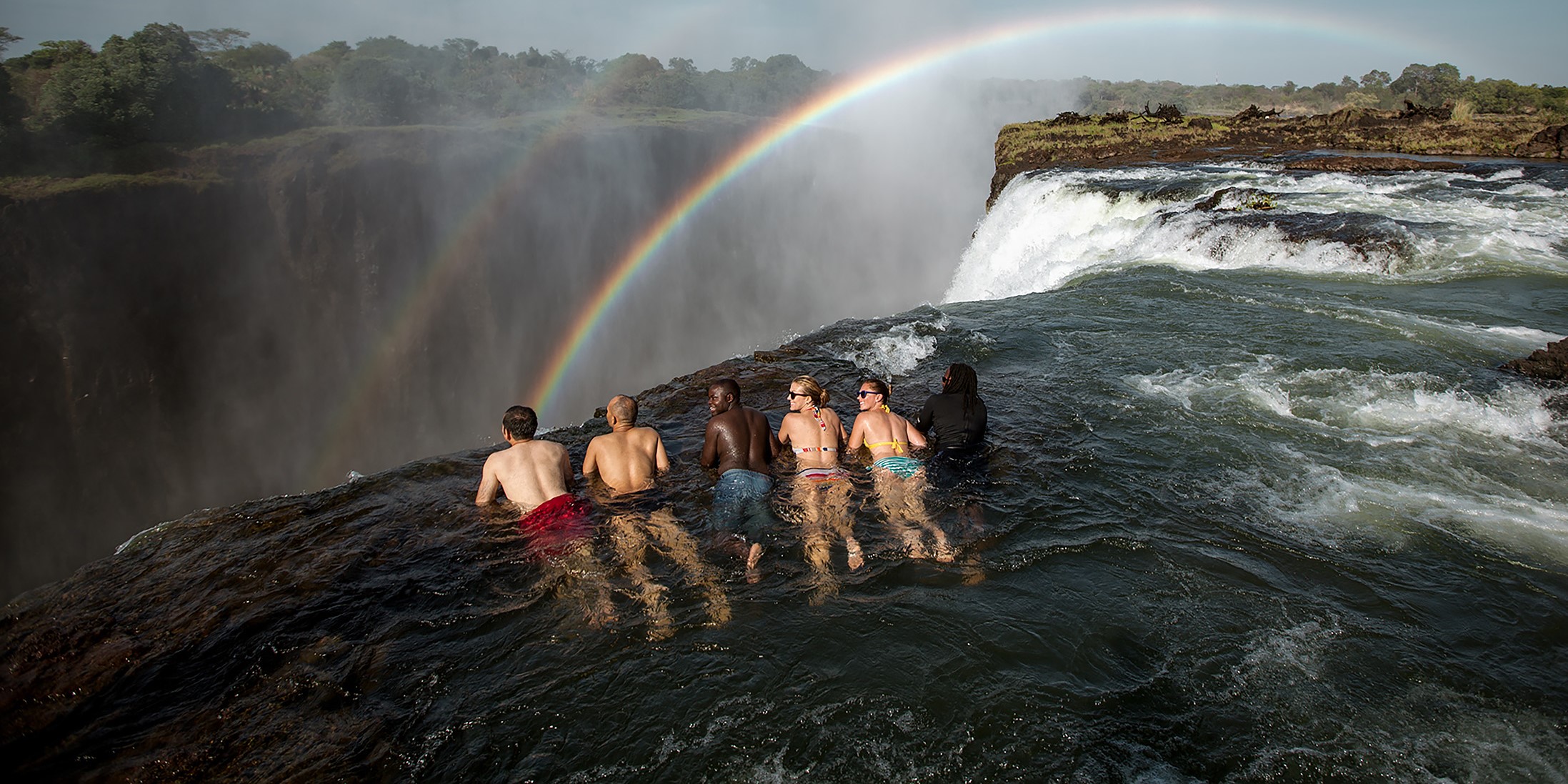
A group on the edge of Devil’s Pool, Image Credit: Livingstone Island
October to April: Wet Summer Season
Feeling hot, hot, hot! If you visit Victoria Falls during summer, you can expect warm, humid conditions (around 30°C during the day), as well as some afternoon thunderstorms. However, these storms help cool down the weather and result in stunning sunsets.
If you love lazing by the pool, the summer season is for you. Just be sure to pack extra sunblock! However, if you’re not a fan of heat and humidity, we don’t recommend visiting in October and November, as these are the hottest months in Victoria Falls. Some safari destinations like Mana Pools National Park in Zimbabwe also close during the wet summer season, with many camps being inaccessible during this time.
The Zambezi River is known for its freshwater sport fishing, in particular, the tigerfish and tilapia. Although it’s a year-round activity, tiger fishing is best during summer at the Lower Zambezi National Park. Also, bird lovers will enjoy spotting the many resident and migrant species all around.
Highlights
- Summer is considered the best season for birding, as resident and migrant species are prevalent
- You’ll love the sunrise and sunset boat cruises on the Zambezi River with colourful skies
- Tiger fishing on the Lower Zambezi River is at its best
Ideal for
Making use of your riverside plunge pool, bird-watching and tigerfishing.

It’s pool day every day when you visit Victoria Falls in summer, Image Credit: Victoria Falls River Lodge
May to October: Dry Winter Season
As the dry winter season creeps in and the temperatures drop a bit, this is considered to be the perfect time to experience Victoria Falls if you’re not a fan of the heat. But winter in Victoria Falls is not what you’re probably used to, with rather temperate, conditions and long, sunny days of around 20°C.
Winter is also considered the best time for safaris in Zimbabwe and Zambia because the bush is sparse, and wildlife gathers around scattered waterholes and riverbanks.
If you’re lucky, you can see a remarkable sight, namely Victoria Falls’ mysterious lunar rainbow, also called the moonbow. The best time to visit Victoria Falls to see this moonbow is from June to August. However, please note that it depends on various factors like clear skies, a full moon, not too much spray from Victoria Falls, and more.
Highlights
- Expect great game viewing at the many surrounding national parks and in neighbouring Botswana
- You could see the incredible lunar rainbow between June and August
- White water rafting and swimming in the famous Devil’s Pools – water levels dependent
Ideal for
Seeing the lunar rainbow and for the best wildlife viewing.
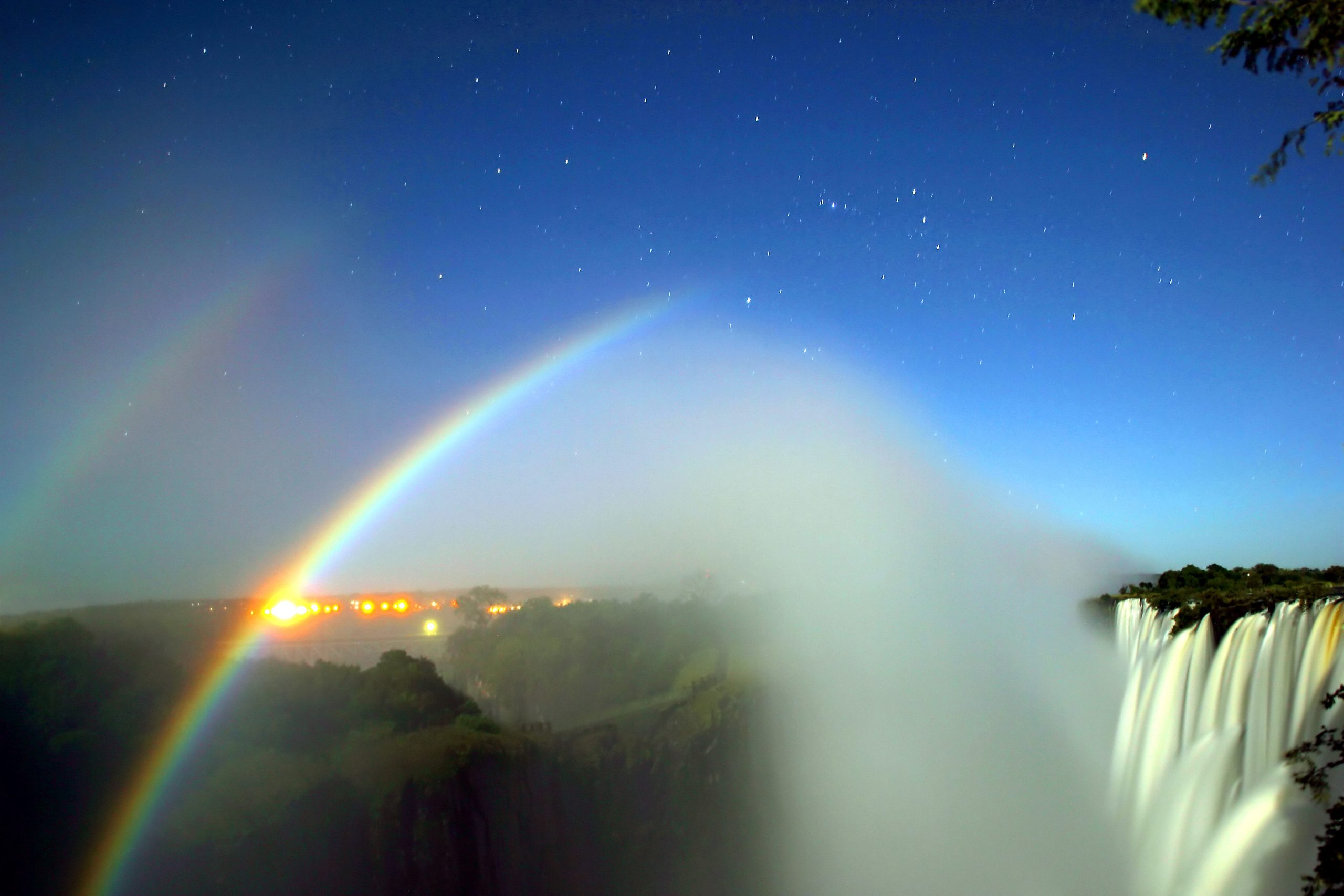
The lunar rainbow at Victoria Falls is a special treat to see
June to October: Peak Safari Season
The peak safari season coincides with winter and the low water season. Therefore, the best time to visit Victoria Falls if you want to combine the thrill of Victoria Falls with the excitement of a safari is from June to October.
As this is the drier season, the vegetation is more sparse, making it an excellent time for game viewing. You can often see large herds of elephants and buffalo coming to the riverbanks to drink, as well as plenty of wildlife gathering around scattered waterholes.
Zimbabwe and Zambia are both home to world-renowned game reserves. In Zimbabwe, Mana Pools National Park is a must, with four oxbow pools attracting a myriad of wildlife. We also recommend a Big 5 safari in Hwange National Park, one of our continent’s biggest conservation areas. On the other hand, Zambia’s South Luangwa National Park is best for a walking safari, whereas Kafue National Park is the second-biggest national park in the world. There are plenty of other safari destinations our Travel Experts can recommend to you, too.
Highlights
- Enjoy Big 5 game drives, boat safaris, canoe safaris, walking safaris, horseback safaris, and more
- As this is the low water season, white water rafting is at its best (usually between July and September)
- Follow in Dr David Livingstone’s footsteps as you tour Livingstone Island (Zambian side)
Ideal for
The best game viewing and white-water rafting opportunities.

Golden hour on safari makes for great photographs, Image Credit: Tania de Kock
So, When is The Best Time to Visit Victoria Falls?
The best time to visit Victoria Falls is from May to October, but really depends on what you want to do, as it offers so many activities year-round.
We frequently visit Victoria Falls and have experienced it throughout all its seasons. And as the world’s most awarded safari company, we know our continent better than anyone else, using our first-hand experience to tailor personalised luxury safaris.
So, if you’re ready to see not only Victoria Falls but our continent’s many, many other wonders in person, reach out to our Travel Experts, and let’s start planning!
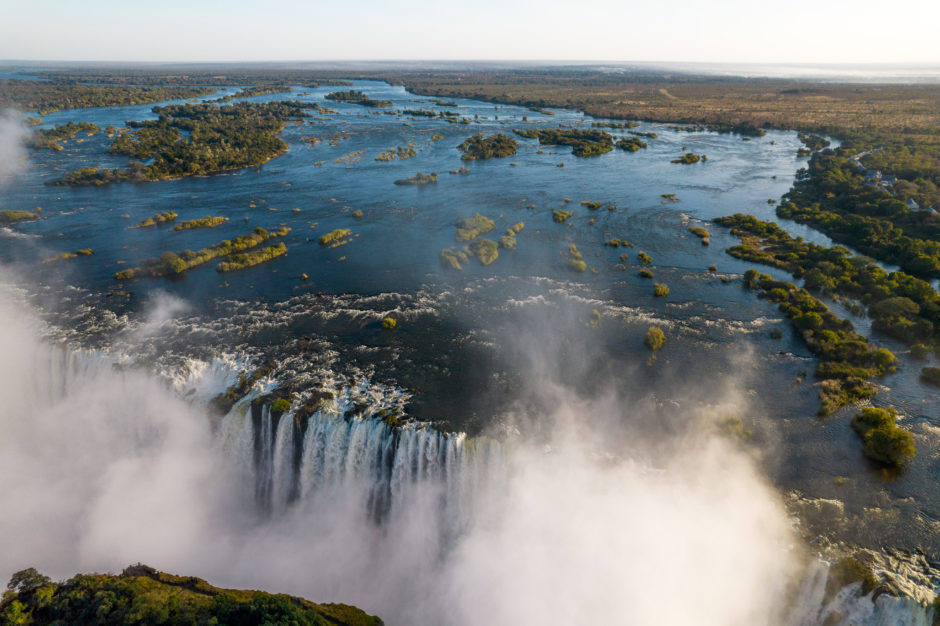
23 Feb, 2024 | Admin | No Comments
Brian and Maggie’s Escapade of Experiences Across Four African Countries

In a land where each sunrise heralds new adventures, and every sunset whispers a world of possibilities, Brian and Maggie set out on a journey through four African countries. This expedition, expertly curated by their Rhino Africa travel consultant, Janine Gous, was a series of carefully selected experiences, each one building on the last, culminating in an unforgettable climax.

Brian and Maggie enjoying the summit of Table Mountain, Image Credit: Brian Jones
1. South Africa – Soweto Strolls and Time Travel
Their African saga began in Johannesburg, South Africa, where culture and history collided on a tour through the streets of Soweto Township and within the walls of the Apartheid Museum.
The intrigue of the past paved the way for the wonders ahead – provoking the question: “What other secrets did Africa have in store?” With every need seamlessly catered for, their anticipation for the unexpected grew.
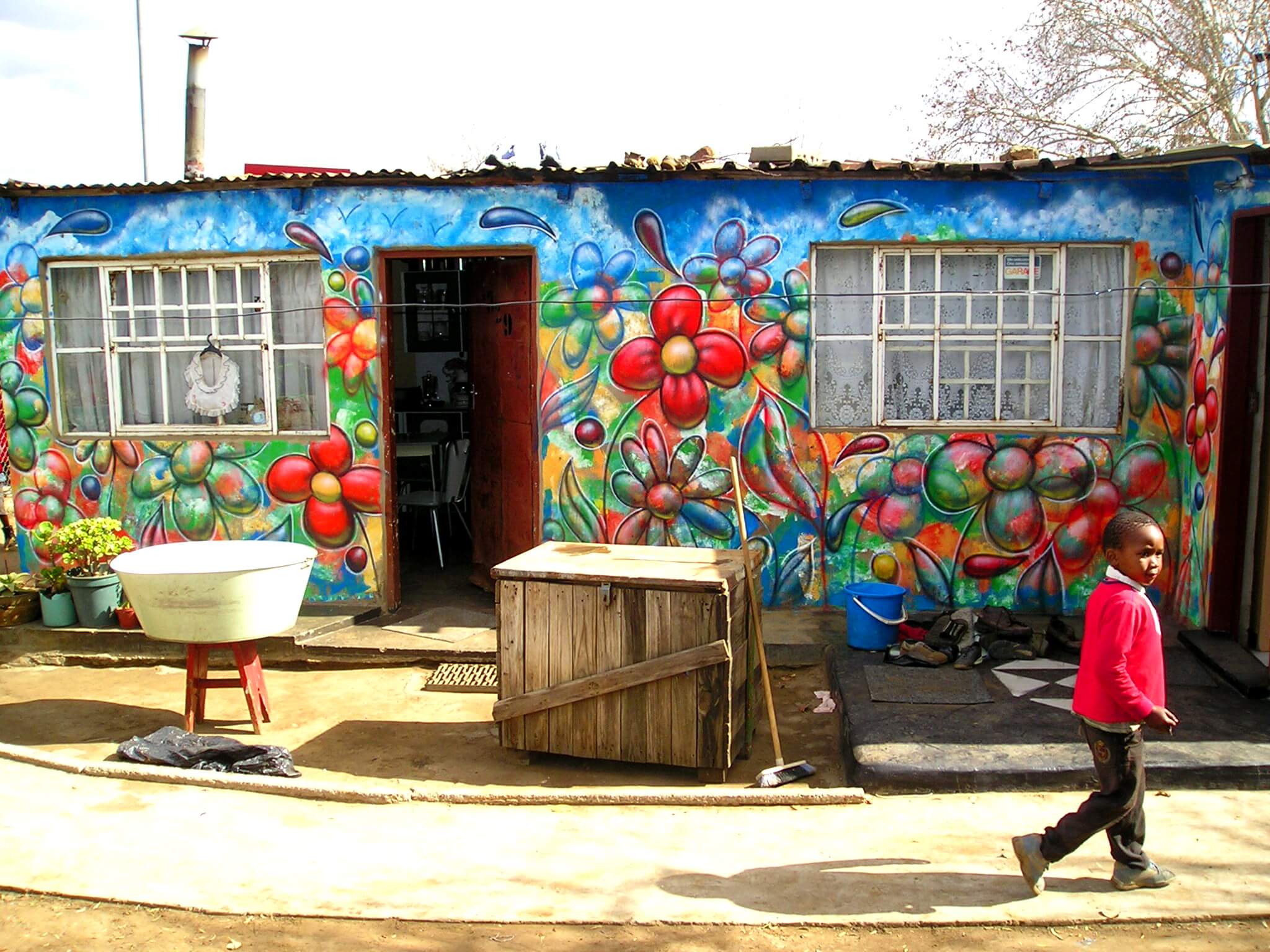
Uncover South Africa’s history, culture and spirit by visiting the booming Soweto township, Image Credit: Nowart Rabier
2. Zimbabwe – Victoria Falls Batonka Bliss
As dawn broke, Brian and Maggie jetted off to Zimbabwe to get but a taste of the wild and wonderful world of natural splendours of Africa. Here, they would stay at Batonka Guest Lodge, a tranquil haven away from the bustle of town but just a stone’s throw away from the main attraction and UNESCO World Heritage Site, the mighty Victoria Falls.
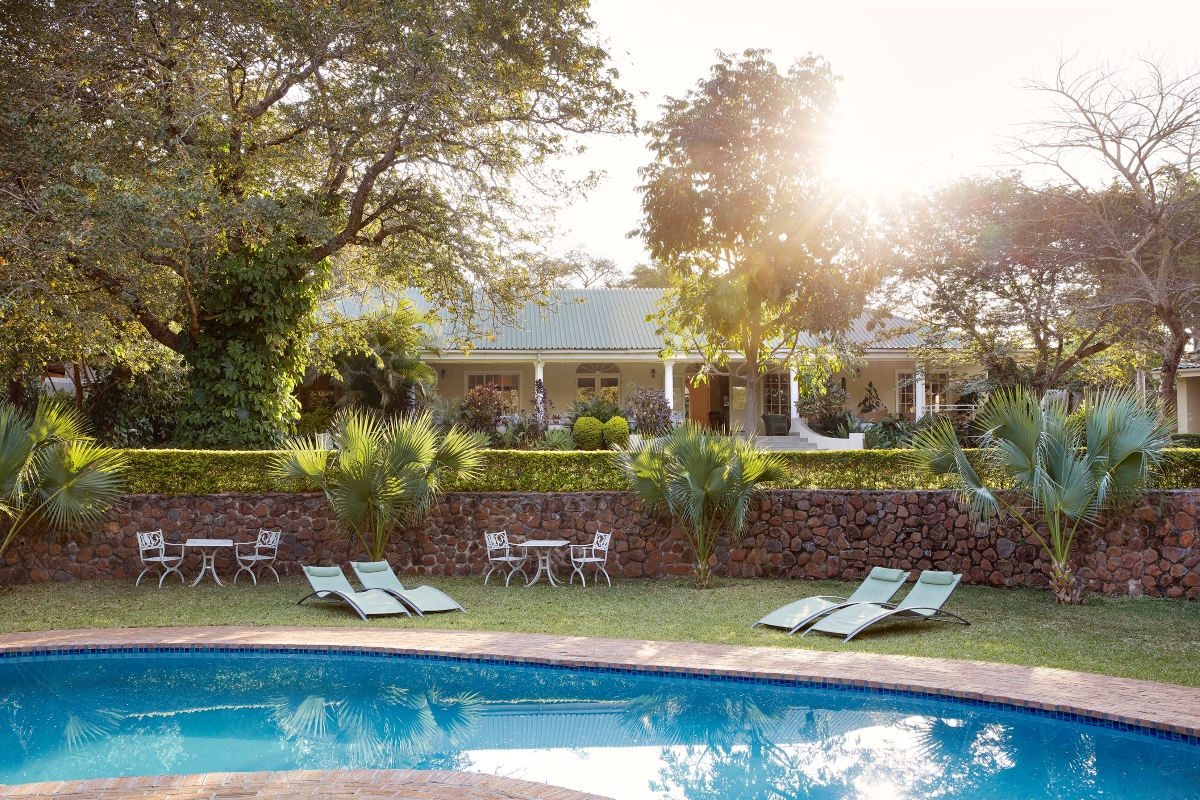
Batonka evokes the calm, laid-back lifestyle of a bygone era, Image Credit: Batonka Guest Lodge
The couple’s eyes sparkled with excitement as they soared above the breathtaking expanse of Victoria Falls. Their helicopter ride offered a remarkable perspective, unveiling the falls’ grandeur from the skies. But this thrilling aerial view was just the beginning…
“We started our stay in Vic Falls with a quick heli flight over the falls. What an incredible sight, a must for any trip to the falls.” – Brian.

Victoria Falls presents a powerful display of the raw majesty of the Zambezi River, Image Credit: Brian Jones
A Feast for the Eyes
The following morning, they embarked on a journey by foot, venturing into the heart of a lush rainforest. Here, they drew closer to the falls, feeling its mist gently kiss their faces. The path wound through vibrant greenery, each step bringing them nearer to the thundering cascade.
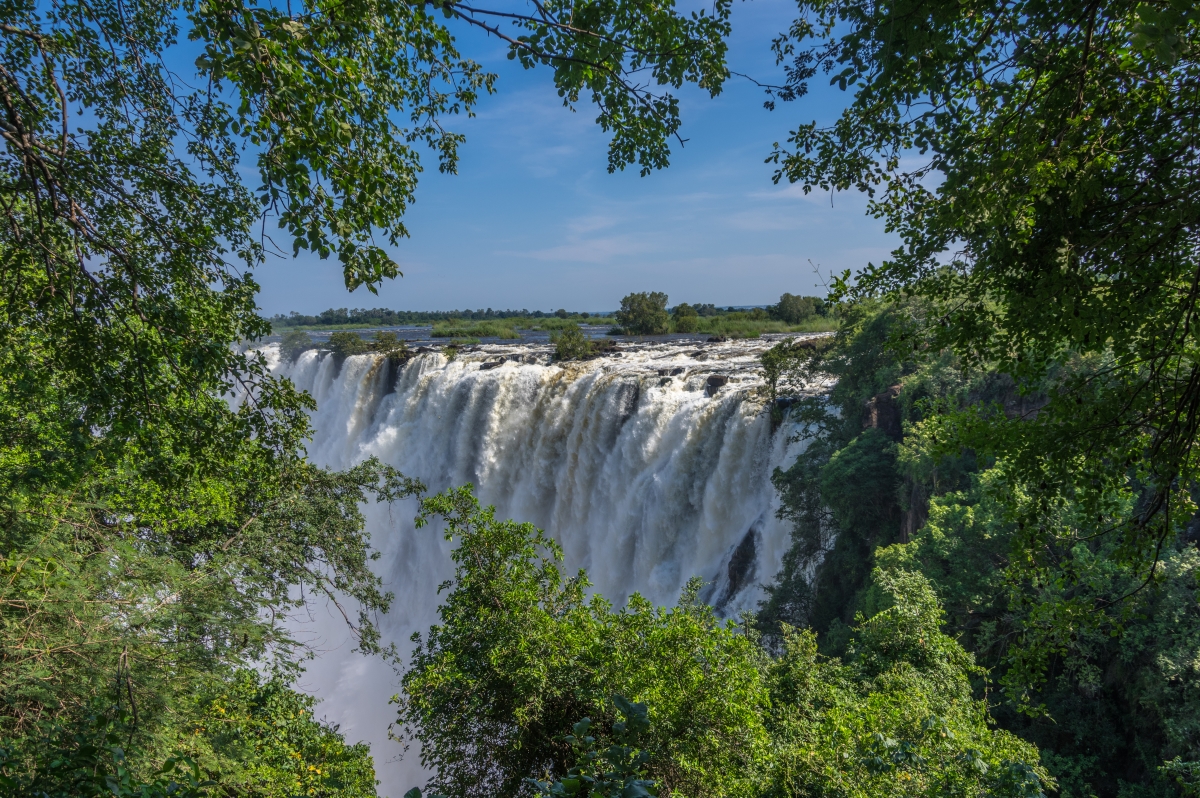
Feel the spray of the Falls on a guided walking tour through the beautiful rainforest
Lunchtime found them at the bustling Lookout Café, an eatery perched to overlook panoramic views. As they indulged in a sumptuous meal, their gaze was drawn to the brave souls leaping into the gorge, their figures silhouetted against the vast chasm as they took on bungee and canyon swings.

The best restaurant views in Victoria Falls, Image Credit: The Lookout Café
Gin, Tonics, and Twilight
Their day of wonders was far from over. As the sun began its descent, painting the sky in hues of orange and pink, they boarded a small, intimate boat for a sunset cruise. This vessel, reminiscent of the original river boats, offered a cosy and personal experience.
“Our sunset cruise on a smaller boat allowed us to get in closer to the hippos instead of the larger tour boats – a great way to see the Zambezi River!” – Maggie.

A Zambezi cruise is a superb way to relax and enjoy the spectacular beauty of the river, Image Credit: Brian Jones
While Brian and Maggie sipped on refreshing gin and tonics, their guide navigated the waters of the Zambezi River, drawing closer to the basking hippos than the larger tour boats could ever venture. This cruise along the river’s gentle currents was a serene counterpoint to the day’s earlier exhilarations. Could anything surpass the grandeur of Victoria Falls?

The Zambezi River’s peaceful shores attract a host of wildlife
3. Namibia – A Wild Welcome
The next chapter of their journey unfolded in Namibia’s Chobe Savanna Lodge. Departing Zimbabwe, their path wound through Botswana by road and river, leading them to an unexpected waterborne safari. The Chobe River was a corridor of wildlife where they marvelled at impalas, monkeys, hippos, and crocodiles.
“During our transfer from Botswana into Namibia, we were looked after all the way through the border crossings by our guides.” – Brian.
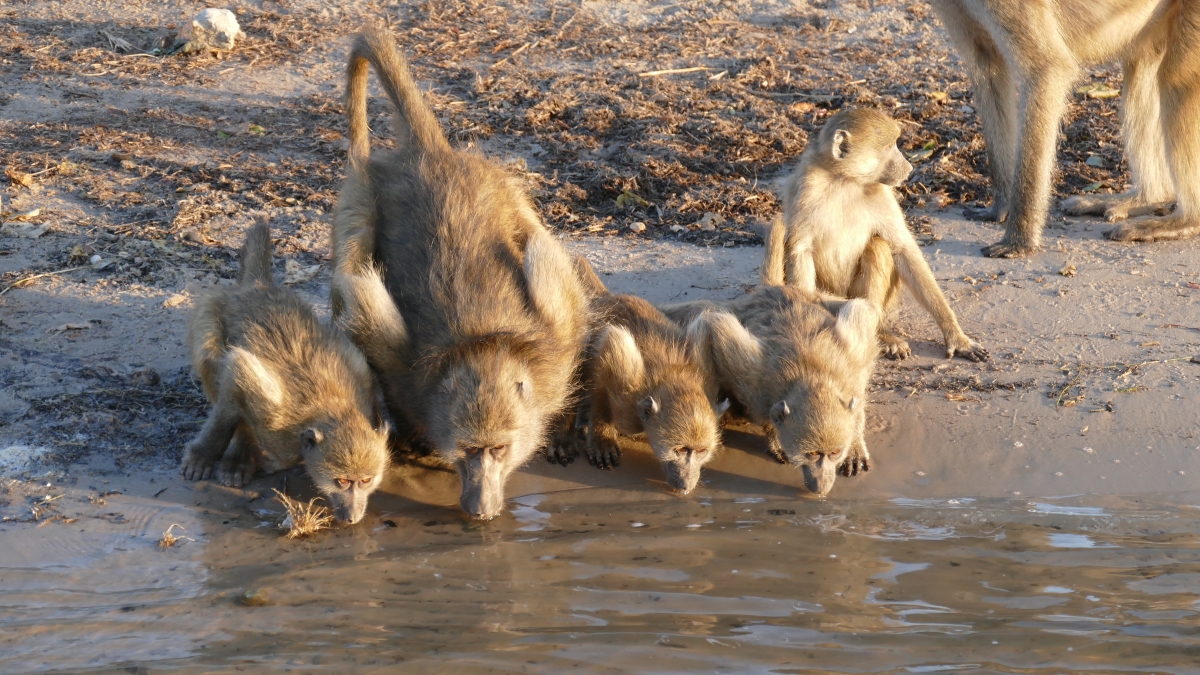
Close-up wildlife encounters along the river’s edge, Image Credit: Brian Jones
But the most magical moment was the welcoming committee of elephants before even reaching the lodge, a dream come true for Maggie. Their adventure had already been brimming with enchanting experiences, leaving them to wonder what marvels the lodge itself would hold.

The Chobe River is renowned for attracting a steady flow of elephants, Image Credit: Chobe Savanna Lodge
Parade of Pachyderms and More
Settled on the northern banks of the Chobe River, deep in the Caprivi Strip, Chobe Savanna Lodge peered out over the floodplains of the Chobe National Park’s Puku Flats. Here, at sunrise and sunset, a bevy of beasts comes to drink just a short boat ride from the lodge.
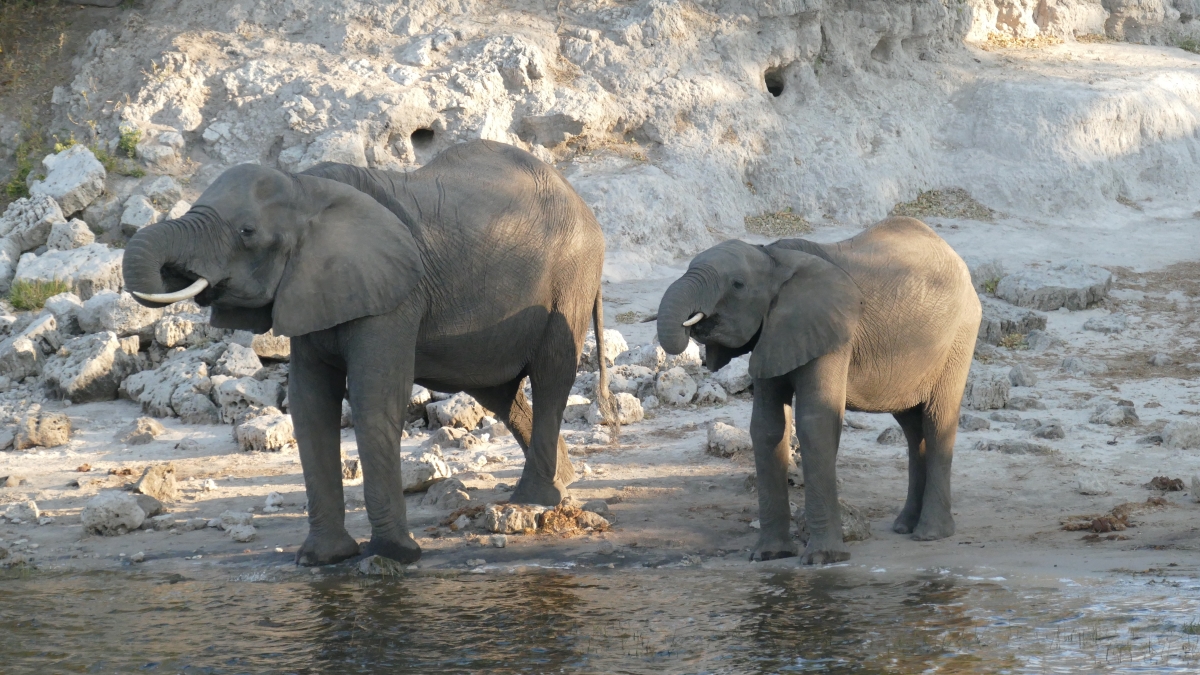
This is big-game country, where large herds of elephants and buffalo make their way to the river to drink, Image Credit: Brian Jones
The river offered Brian and Maggie an exceptional safari opportunity, allowing them to indulge in their fascination with elephants from a uniquely intimate vantage point. Their experience was enriched by sightings of herds of giraffes, zebras, and, as ever, the omnipresent pods of hippos and crocodile floats.
“We wanted to see the elephants, and using the river for the safari allowed us to get closer than we had ever hoped for.” – Maggie.
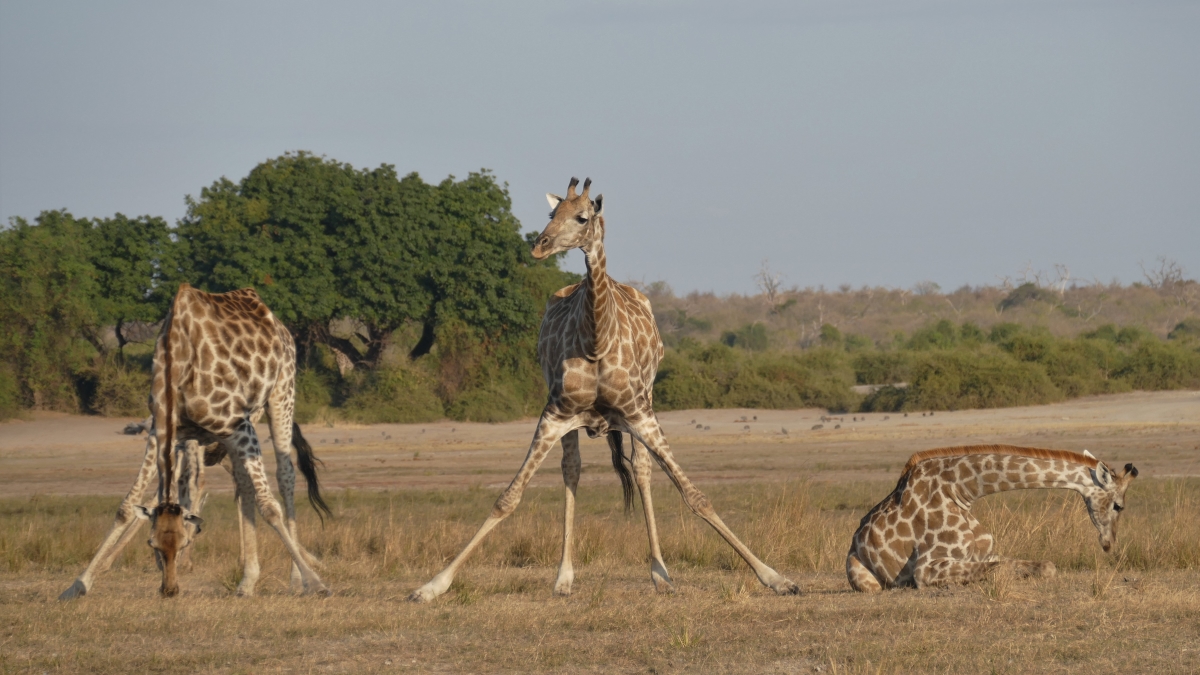
The region is home to a variety of species, big, small and tall, Image Credit: Brian Jones
4. Botswana – Delta Dreams
Their journey took a thrilling turn as Brian and Maggie boarded the light aircraft destined for Camp Xakanaxa’s private airstrip, marking the beginning of a new chapter in their wilderness adventure. The allure of the Okavango Delta – a labyrinth of lagoons, channels, and islands – could not be resisted.

Enjoy a year-round Moremi Game Reserve land and water safari experience, Image Credit: Camp Xakanaxa
Nestled on the edge of the Xakanaxa Lagoon and the Khwai River, within the embrace of Moremi Game Reserve, Camp Xakanaxa (pronounced “ka-kan-a-ka”), stood as a gateway to a world where land and water met, offering a unique safari experience combining aquatic journeys and land explorations.
“We thought our thatched chalets in Chobe were good (and they were!), but the canvas tents at Xakanaxa were next level.” – Maggie.

Main areas extend over the Khwai River and are set on raised platforms to maximise views, Image Credit: Camp Xakanaxa
A Boat, Birdsong, and Hippo’s Greeting
Their first evening unfolded gracefully with a sunset boat ride along the serene delta waterways. As the sun dipped below the horizon, they were enchanted by the mirror-like reflections on the water and the symphony of birdlife.
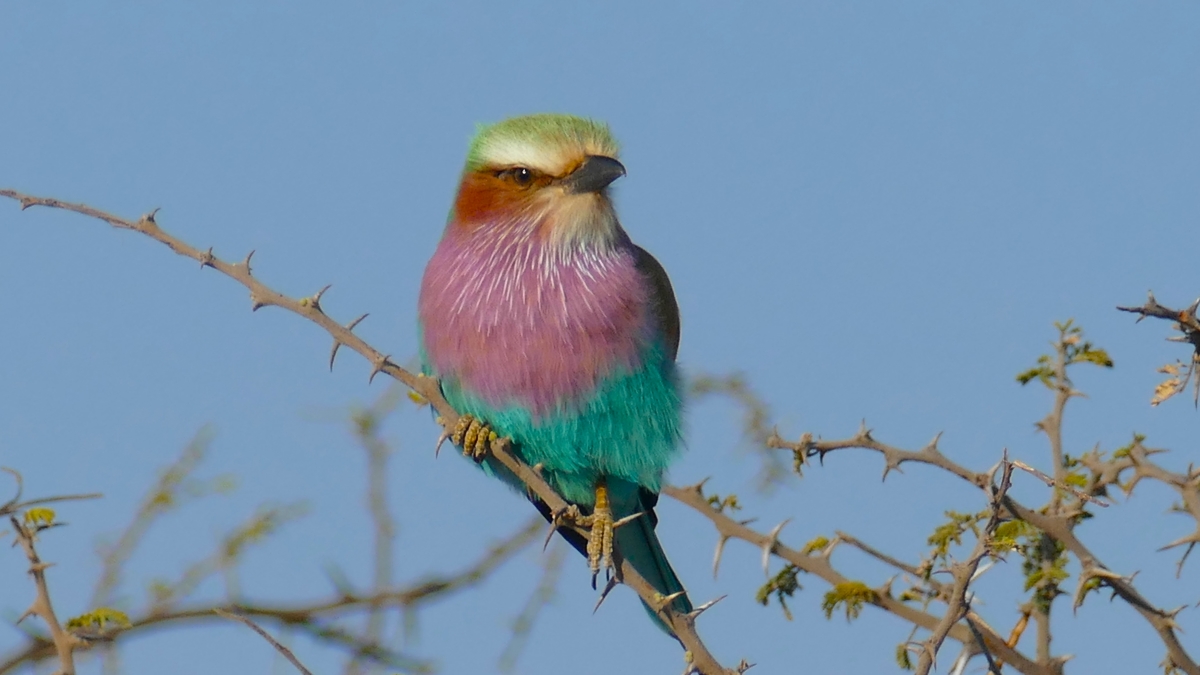
The Delta presents spectacular birdwatching opportunities, Image Credit: Brian Jones
An unexpected introduction with Oscar, the camp’s resident hippo, added a touch of whimsy to their stroll back to the tent, escorted safely by their guide through the twilight.
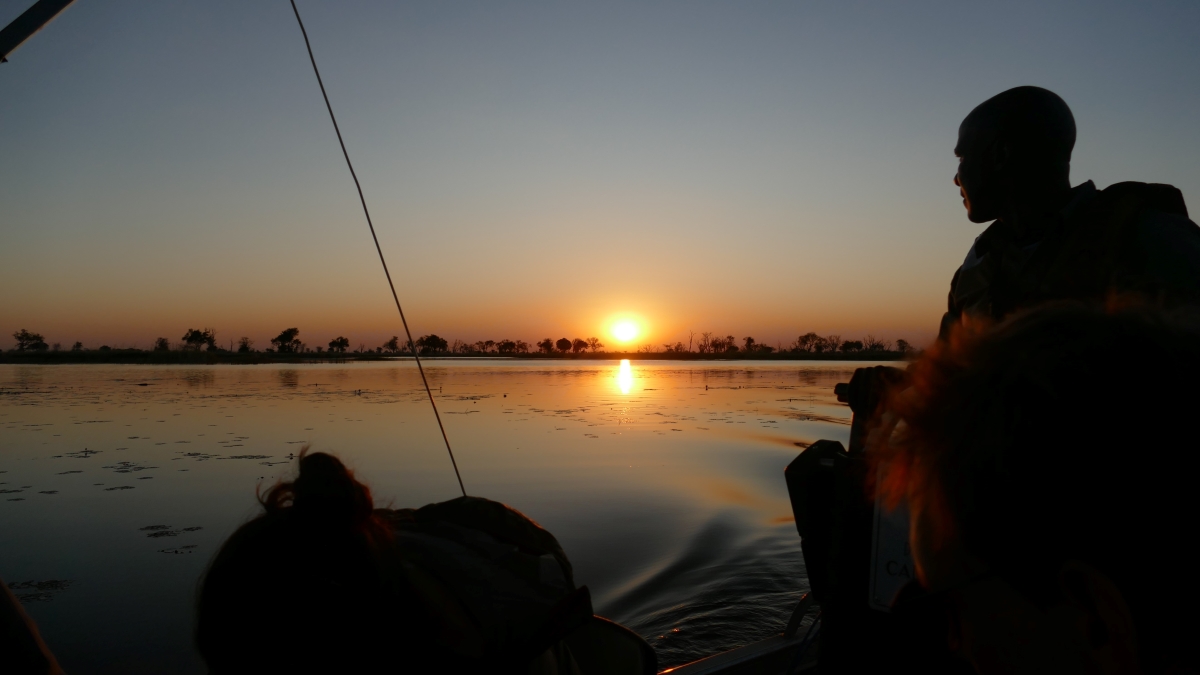
Xakanaxa’s guides are expertly trained, highly knowledgeable and always eager to impart their knowledge, Image Credit: Brian Jones
Roars at Dawn
The next morning, their game drive was a heart-racing encounter with the rawness of nature. A mere five metres away, a pride of lions feasted on a giraffe, their roars vibrating through the air, calling to their kin.
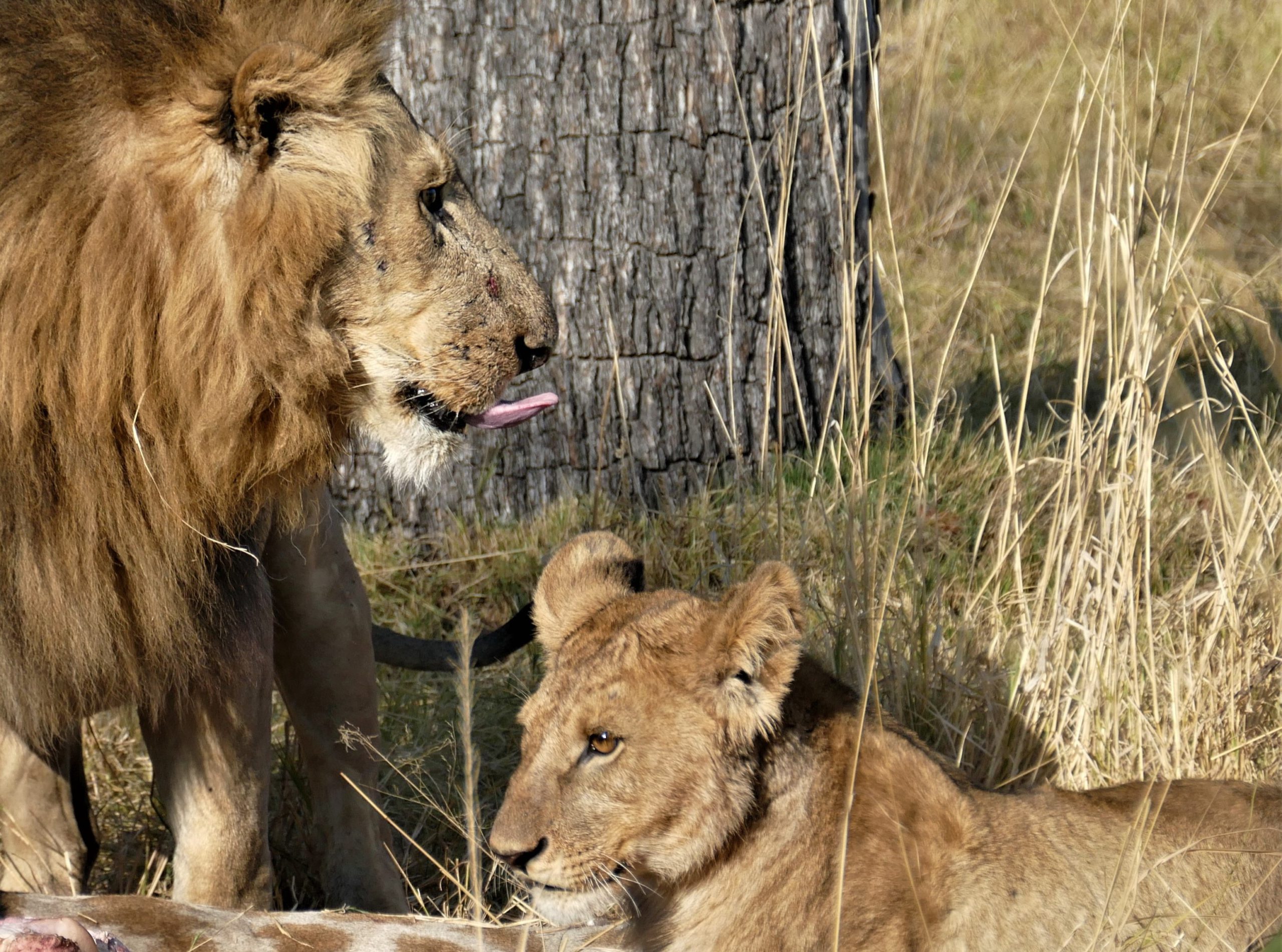
Lion family feasting on their kill, Image Credit: Brian Jones
This remarkable sight, coupled with the imposing presence of a 200-strong herd of Cape buffalo, captivated Brian and Maggie. The lions, satiated and uninterested in a buffalo breakfast, offered a rare moment of peaceful coexistence in the wild.
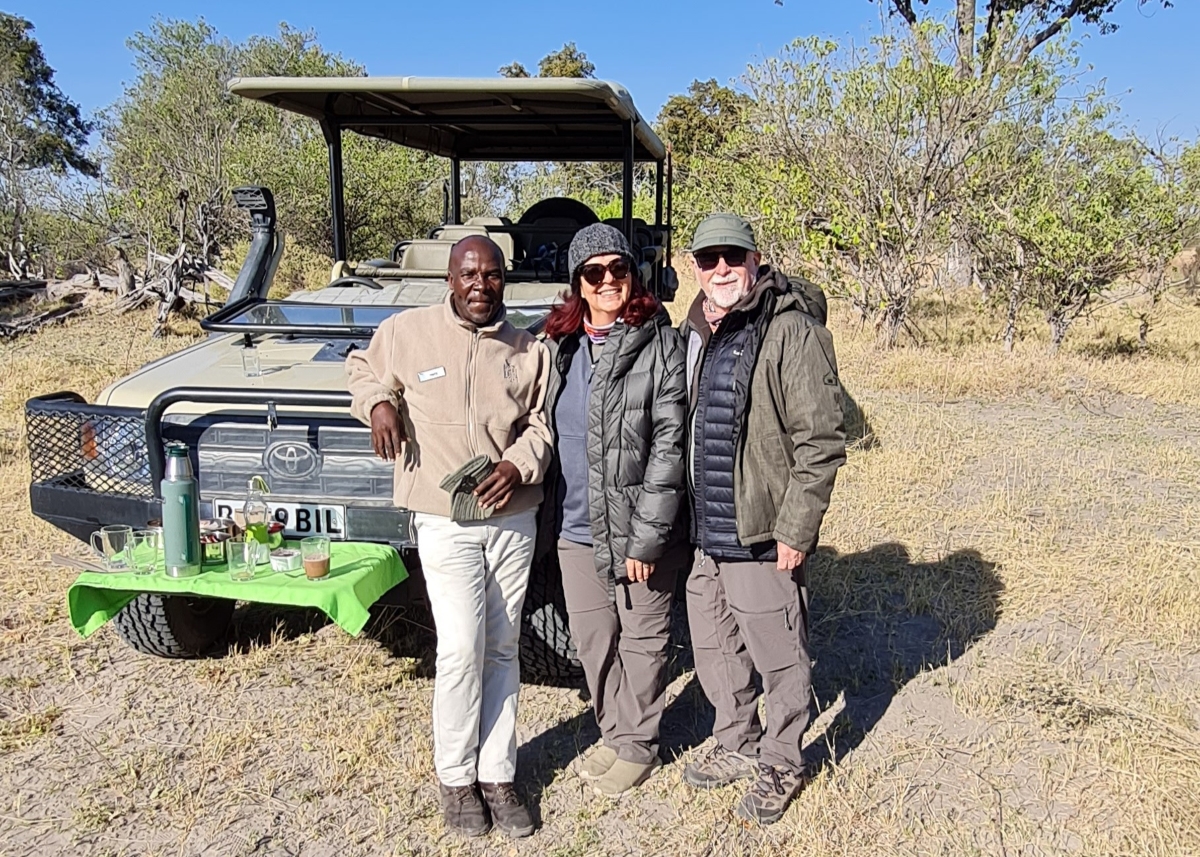
Maggie and Brian enjoying a bush coffee with their Guide, Harry, Image Credit: Brian Jones
A Thrilling Turn
Their return to camp was interrupted by an exciting detour. Harry, their seasoned guide, had received word of a leopard sighting nearby. As they navigated the gravel roads, an elephant, guardian of its berry tree, mock-charged their vehicle in a display of wild defiance. It was a heart-pounding reminder of their place in this untamed world.

Don’t come between an elephant and its berry tree
The Lion’s Goodbye
Their departure was as dramatic as their stay. En route to the airstrip, three young male lions asserted their dominance, reminding them that in the African wilderness, animals reign supreme. With two lions passing within metres of their vehicle, Brian and Maggie’s safari in Botswana concluded with an everlasting memory.
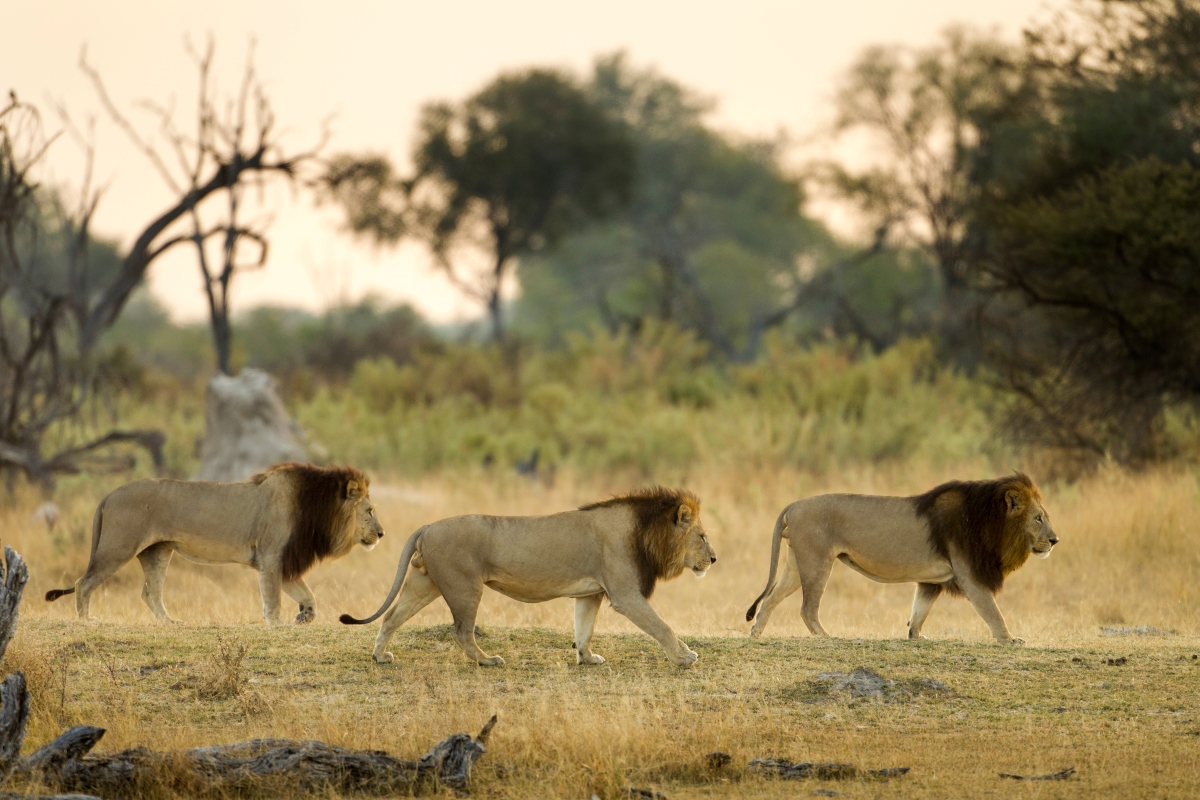
Never forget, in the wild, lions have the right of way
Cape Town – From Peak to Port
Their journey came full circle with a return flight to South Africa, ready to explore the colourful metropolis of Cape Town. Villa Zest Boutique Hotel would be their stylish home for the following three days.
From the awe-inspiring Table Mountain and bustling V&A Waterfront to the serene Kirstenbosch Botanical Gardens were among the daily discoveries. But how would this urban exploration compare to the final leg of their journey?
“Lunch and a walk around V&A waterfront is a must, and the African Trading Port with wooden sculptures shouldn’t be missed!” – Brian.

With Table Mountain as your backdrop, the V&A Waterfront pulses with energy, Image Credit: Brian Jones
The Greater Kruger – Land of the Big 5
In the vast expanses of the Kruger National Park, the captivating Chitwa Chitwa Game Lodge stood as the high point of their African expedition. The densely vegetated Sabi Sand Game Reserve was markedly different from their previous experiences.
“It just kept getting better, Chitwa Chitwa was the next level, absolutely fantastic!” – Brian.

Chitwa Chitwa is your luxury escape surrounded by nature, Image Credit: Chitwa Chitwa Game Lodge
Their first safari drive in this new setting was a spectacle of wildlife, with the sighting of rhinos and leopards completing their Big 5 checklist. The reserve buzzed with diverse wildlife like elephants, lions, kudus, zebras, the ubiquitous impalas, and hyenas, including a playful baby hyena.

Enjoy spell-binding sightings of our abundant wildlife on game drives, Image Credit: Brian Jones
Leopard Spotting
The thick brush of this terrain presented a challenging task for tracking, but the expertise of their guide, Daniel, and tracker, Beth, shone through, revealing the hidden wonders of this wild land. This area, particularly favourable for leopards, offered them repeated sightings of these majestic big cats.
“This was the place for leopards – again and again, we saw them on multiple drives.” – Maggie.

Sabi Sand Game Reserve has carved out legendary status amid 160,000 acres of leopard-rich land
Moonlit Mischief
As the evening unfolded, the walks back to their lodging transformed into thrilling encounters, not with hippos as before, but with prowling hyenas active around the lodge. The wild was at their doorstep, yet the reassuring presence of their guides ensured safe passage in the dark.
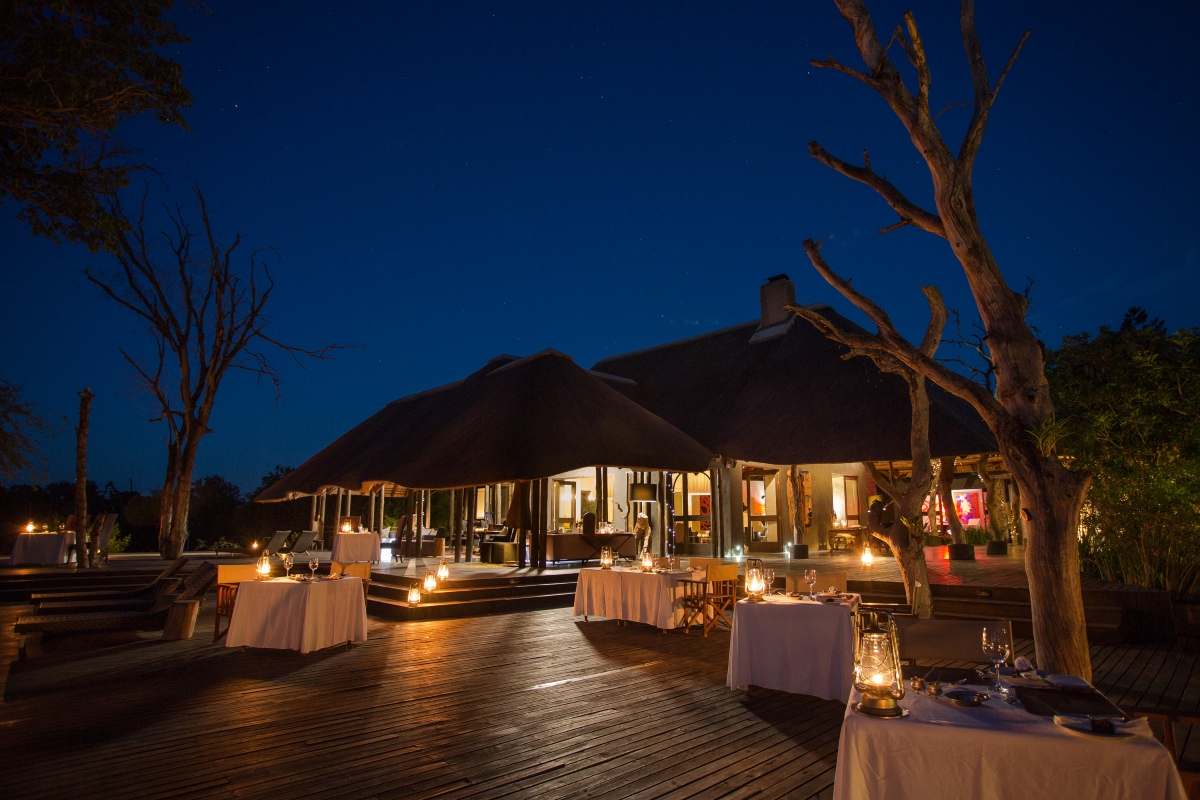
With your own private deck, you can view animals from the comfort of your room, Image Credit: Chitwa Chitwa Game Lodge
Clash of the Canids
Their guide, Daniel, inquiring about their specific interests, heard their eagerness to see African wild dogs, known for their scarcity. Setting expectations, he mentioned their rare sightings. However, the next morning, in a stroke of luck amidst the early mist, they encountered a pack of wild dogs, an experience that left them astounded.
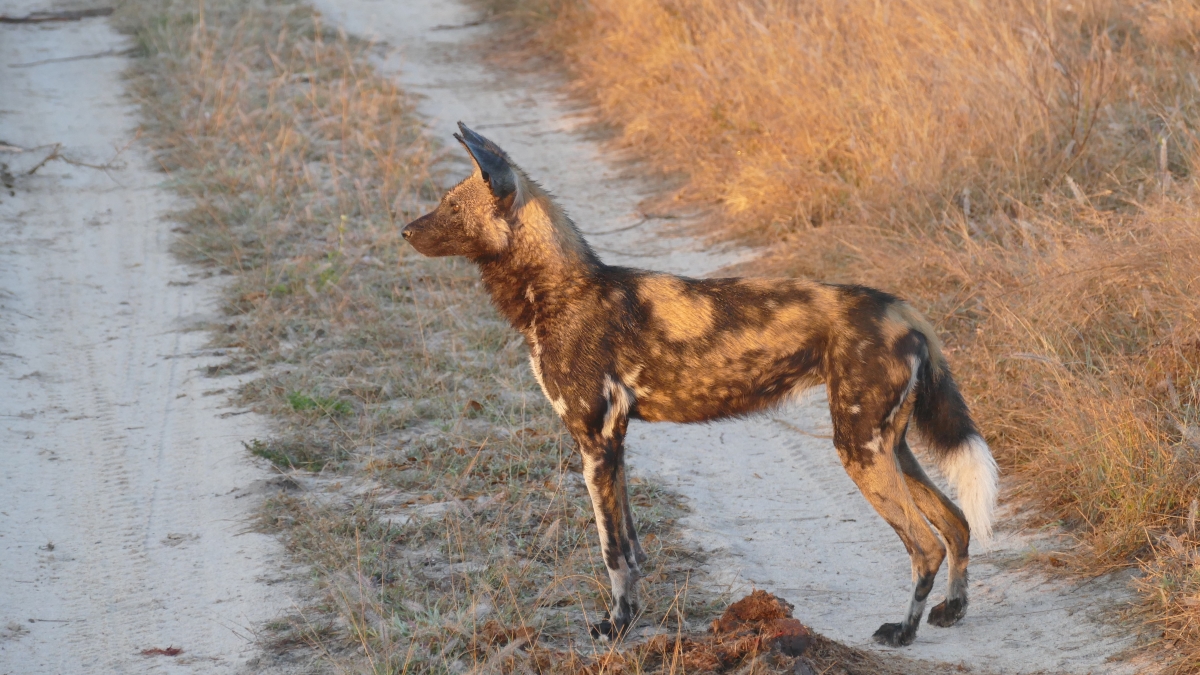
As one of the world’s most endangered mammals, the African wild dog is a sight to see, Image Credit: Brian Jones
Their tracker, Beth, with his deep knowledge of the land, led a thrilling chase through the bush. The journey was no longer a gentle drive but an exhilarating pursuit, culminating in a dramatic scene.
A pack of hyenas, cunning and opportunistic, had trailed the wild dogs, hoping to usurp their kill. Suddenly, they found themselves amidst a fierce clash between the wild dogs and hyenas. The wild dogs, with their remarkable agility and speed, soon sent the hyenas fleeing.

A lone hyena is no match against a pack of wild dogs, Image Credit: Brian Jones
Precision Meets Passion
Reflecting on their journey, the meticulous planning of their Travel Expert, Janine, became evident. Each destination had elegantly built upon the last, leading to a series of climactic experiences. Their African journey, packed with suspense, beauty, and unexpected delights, was a narrative they would cherish for years.
“When we look back at our adventure, it seems that Janine chose accommodation and experiences in a very specific way… and built up to the best for last! It was the perfect order. We were so impressed with everything.” – Brian.
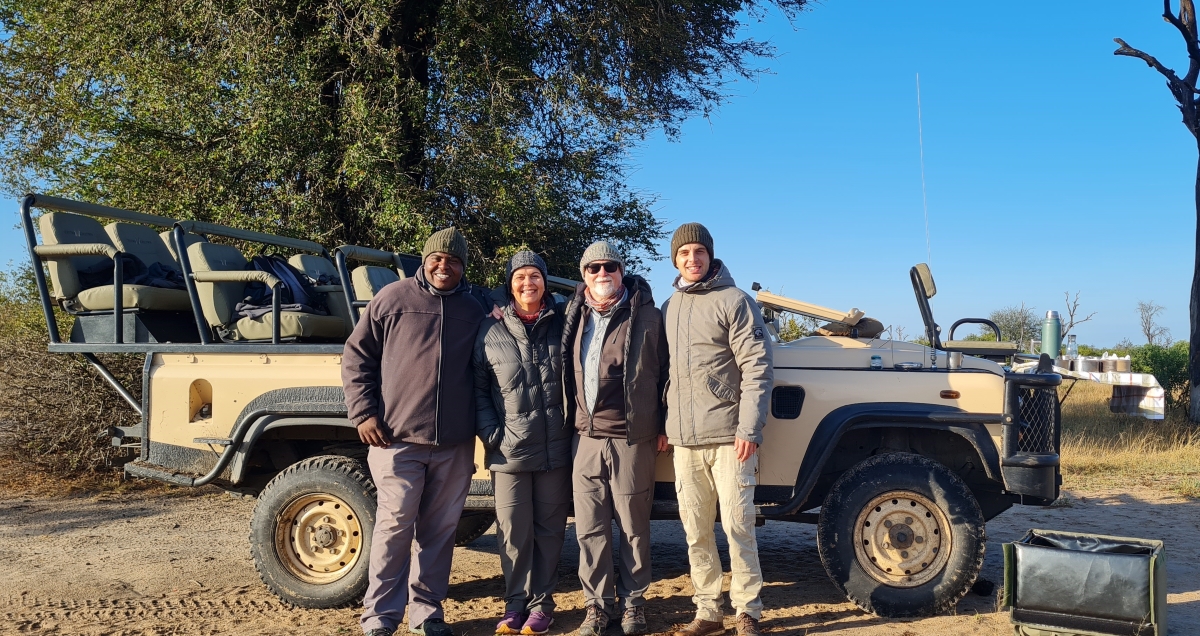
Maggie and Brian with Tracker, Beth (left), and Guide, Daniel (right), having another drink stop in the bush, Image Credit: Brian Jones
“The excitement and joy that we both felt throughout this whole trip is undeniable!
We can’t thank you enough for this once-in-a-lifetime dream come true! Thank you, thank you, thank you!!!” – Maggie.
Your Invitation to Adventure
Are you excited to delve into the wonders of Africa, to embark on a journey filled with discovery and awe?
Allow us at Rhino Africa, alongside our Travel Experts like Janine, to craft your own journey into the thrilling unknown, where every turn is a captivating new chapter in your African adventure.
Featured Image: Brian Jones
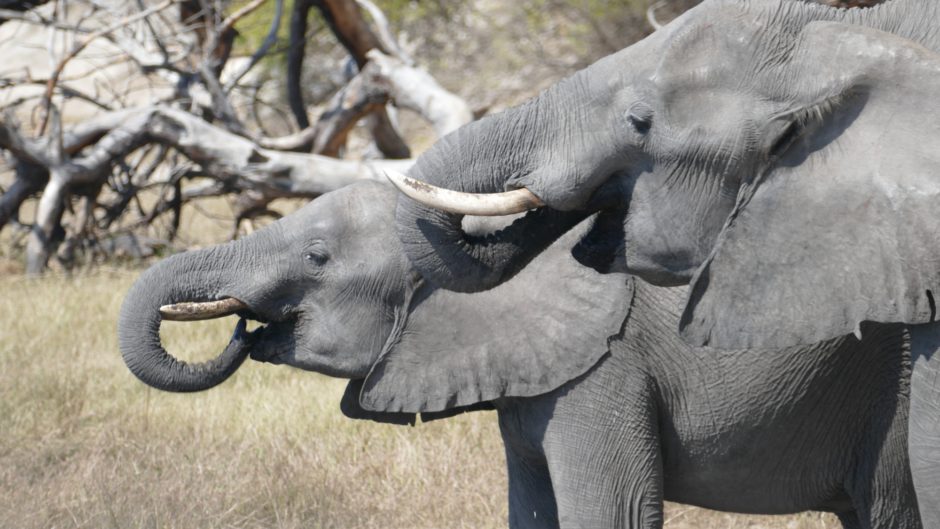
Wondering where to stay in Seminyak? Seminyak is one of the most popular areas to stay in Bali. Overflowing with delicious restaurants, beach clubs, boutique shops, and beaches, it’s easy to see why. All this brings the crowds, so on the other side expect lots of people and busy streets. That’s not to say that you can’t find your little piece of tranquillity in Seminyak, and one of the best ways to do this is through the Seminyak accommodation that you choose. In our accommodation guide, you will find the best places to stay in Seminyak, including our favourite resorts, luxury hotels, boutique hotels and villas, along with the best locations.
Contents
- The Best Locations To Stay In Seminyak
- How Many Days Do You Need?
- Booking Accommodation
- Accommodation Guide: The Best Places To Stay In Seminyak
- Splurge: Luxury Accommodation In Seminyak
- Luxury Hotels For Less
- Hotels For Under $200/night (AUD)
- Hotels For Under $100/night (AUD)
Where To Stay In Seminyak? Best Areas.

Here is a quick guide to help you decide what is the best area of Seminyak for you.
Seminyak is relatively close to Ngurah Rai International Airport, making it a great first or last stop on your Bali Itinerary.
It sits between Legian (in the south) and Canggu (in the north).
So you can get a better idea of the different areas of Seminyak, we will start in the southern end and work our way north. There are four main areas of Seminyak, including the area around Jalan Camplung Tanduk, Seminyak Beach/Jalan Kayu Aya, Petitenget and Batu Belig.
Jalan Camplung Tanduk
The southern area of Seminyak directly borders Legian, around the area of La Plancha beach bar, Double Six Beach and the street Jalan Camplung Tanduk. This area expectedly has slightly more of a ‘Legian’ vibe than other parts of Seminyak, which isn’t a bad thing, just different.
If travelling by taxi around Seminyak, it can mean you are more likely to get stuck in traffic and it will take longer to get around.
There are some beautiful hotels in this area, we loved our stays at Hotel Indigo Bali and Courtyard By Marriott Bali. A lot of accommodation options here are either on the beach or within walking distance.
Seminyak Beach & Jalan Kayu Aya
I would consider Seminyak Beach and Jalan Kayu Aya to be the main area of Seminyak.
Jalan Kayu Aya (otherwise known as Laksmana or Eat Street) is the main street in Seminyak. The busiest part of this street is located more inland and is lined with restaurants, cafes, boutique shops, and Seminyak Square.
The street then continues around near Seminyak beach, but this part of the street is quieter and home to some of the best luxury hotels in Seminyak like The Oberoi Beach Resort and The Legian. By the beach, you will also find Ku De Ta Beach Club and some cafes and restaurants like Sea Circus and Kim Soo.
The street Jalan Kayu Aya is what we would consider the heart of Seminyak. This is one of the best areas to stay if shopping is a priority, or you want easy access to lots of restaurants. This area can be quite busy with both people and traffic, but it also has a lot within walking distance. As it is quite central, you can also easily reach other areas of Seminyak.
This area is also one of the best places to stay in Seminyak for families.
Petitenget
Petitenget is an area located in the north of Seminyak and has some great restaurants and boutique shops. It is also where you will find Petitenget Temple. We really like the vibe of this area, it still has a lot to offer but it feels a little more spread out and relaxed.
This is the area where you will find Petitenget Beach, Potato Head Beach Club and 5-star hotels like Alila and W Hotel. Petitenget is a great area if you want to stay close to the beach as well as near shops and restaurants.
Petitenget is also one of the best places to stay in Seminyak for couples.
Batu Belig
In the northernmost part of Seminyak, you will find the area of Batu Belig (along the street Jalan Batu Belig). This is the closest area to Canggu.
It’s away from the busiest areas, more chill, yet still has some dining options and Batu Belig Beach. It’s also the most remote if only getting around by foot or relying on taxis, but can still be an enjoyable area to stay in if that’s the case.
We would recommend staying in this area if you either have a scooter or don’t mind a lot of walking/getting taxis and are looking for something a little more laid-back and removed from central Seminyak.
So What Is The Best Area Overall?
It’s really a personal preference, but for us, we think Petitinget is the best area to stay in Seminyak as it has a nice mix of boutique shops, delicious restaurants, the beach, beach clubs and beautiful hotels. We love the vibe of this area and it can feel more tranquil than other parts, although full disclosure, it is still very busy.
Otherwise, staying on Seminyak Beach is another great option, particularly if you want most things within a short walk. See our accommodation guide below for some of the best places to stay in Seminyak on the beach.
Having said that, each area has its pros and cons and we have enjoyed staying in every area of Seminyak.
Is It Better To Stay In Seminyak Or Legian?
Seminyak is a great place to stay in Bali and is my personal preference over Legian. Both are great options but for different reasons.
Seminyak has a more sophisticated vibe, with boutique shops, beach clubs and many incredible dining options.
Legian is a great option if you want to get good value accommodation and a laid-back atmosphere.
Both options are family-friendly.
If you want to experience both, you can stay around the Jalan Camplung Tanduk area, which borders the two.
How Long To Stay In Seminyak?
Some people come to Bali and only visit one destination, but we’d definitely recommend staying in at least two different areas to get to know Bali a little better.
With that being said, how long to stay in Seminyak really depends on the length of your Bali holiday. But as a guide, we would say staying two to three days is a good minimum.
If you choose to use Seminyak as a base to explore Bali, or just want to relax in one place, then we would recommend staying for one week. There are also plenty of great things to do in Seminyak to keep you busy.
Booking Accommodation
Booking.com
We love using Booking.com, it’s one of our favourite ways to book accommodation and it has a great range of luxury resorts, boutique hotels and villas.
Seminyak Accommodation Guide
We have been lucky enough to experience lots of amazing hotels in Seminyak. Our picks for the best places to stay in Seminyak below are based on our favourites that we have stayed in, knowledge of the best hotels and their specific locations, lots of research, reading reviews, hearing from you and putting this all together with our own experience.
So here are our picks for the best places to stay in Seminyak including luxury hotels, boutique hotels, villas and guesthouses.
Please note: Prices are per night in AUD and were accurate at the time of this post.
Splurge: The Best Luxury Accommodation In Seminyak
Alila Seminyak | $398 AUD | Check Prices
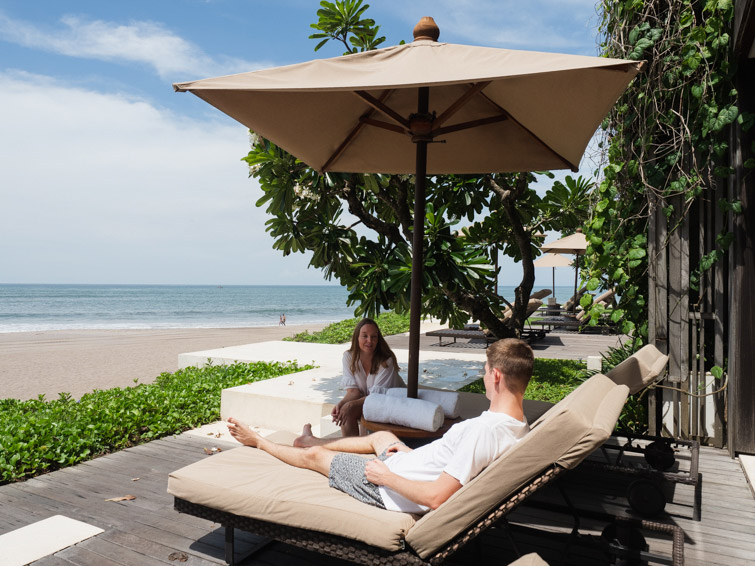
We are always blown away by how simply beautiful Alila hotels are, and we have loved staying with Alila in Ubud and Manggis. So, it came as no surprise to us that we absolutely fell in love with Alila Seminyak on a recent trip to Bali.
Alila is one of the best luxury hotels in Seminyak, located right on the beach. It’s the perfect place to stay for couples and families. It’s extremely relaxing, the rooms feel luxurious but simple and cosy at the same time, and we could spend all day in their beautiful infinity pools. We love that the hotel was designed and built to minimise the environmental impact.
Whether you stay here or somewhere else, Alila Seminyak is home to one of our favourite restaurants in Seminyak, Seasalt.
Read more about our stay at Alila Seminyak here.
Peppers Seminyak | $524 AUD | Check Prices
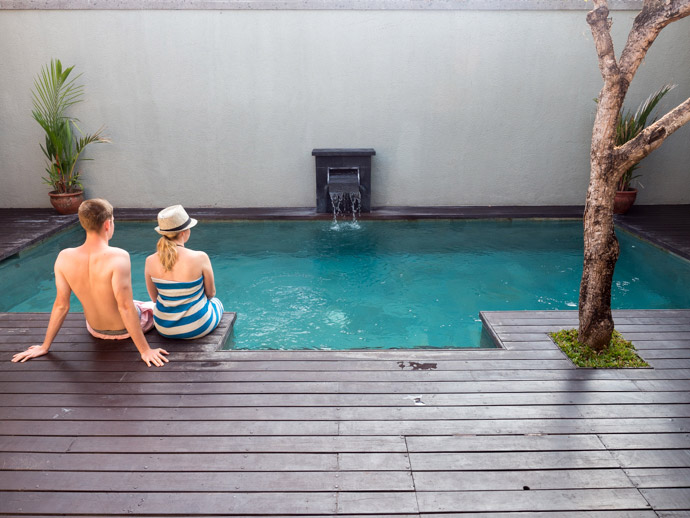
Peppers Seminyak is a villa/hotel hybrid, combining the best of both worlds. Here they have 48 private villas ranging from one to five bedrooms. On top of this, you also have access to their resort facilities such as a restaurant, gym, spa and outdoor pool (all villas have their own pool too).
We were blown away when we arrived and walked into our villa. We also loved having the privacy of our villa combined with the community feel of the resort facilities.
Read more about our stay here.
W Hotel | $605 AUD | Check Prices

W Bali – Seminyak is a hotel we have yet to stay in, but an obvious pick to recommend. This luxurious resort is beautiful with a large pool area, bars, restaurants, uniquely designed rooms and great dining.
The Legian Seminyak | $817 AUD | Check Prices

A member of the Leading Hotels of the World, The Legian is an iconic hotel. But don’t be fooled by the name, it’s actually in Seminyak. And it’s in a great location, right on the beach and also near shops, restaurants and beach clubs.
This 5-star resort has a stunning infinity pool by the beach and beautiful grounds. You can choose to stay in their luxurious suites or private pool villas. One of the best places to stay for couples.
The Samaya | $630 AUD | Check Prices
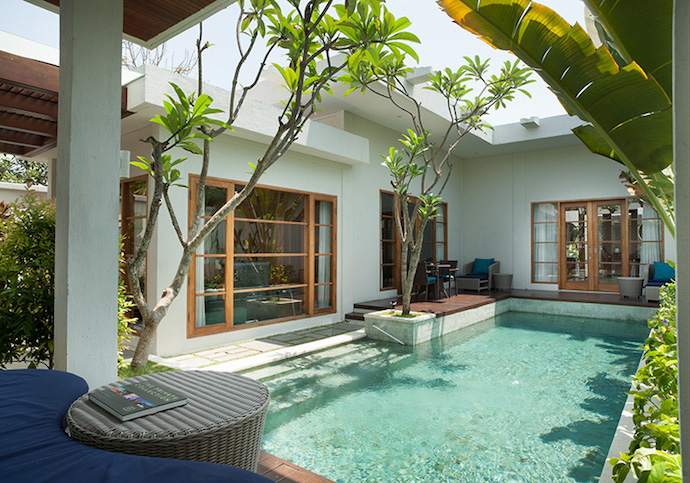
The Samaya is another 5-star hotel right on Seminyak Beach with shops, restaurants and beach clubs within walking distance. The Samaya is unique in that they only have private pool villas. They also have a great restaurant where you can sit almost on the beach.
The Seminyak Beach Resort & Spa | $368 AUD | Check Prices
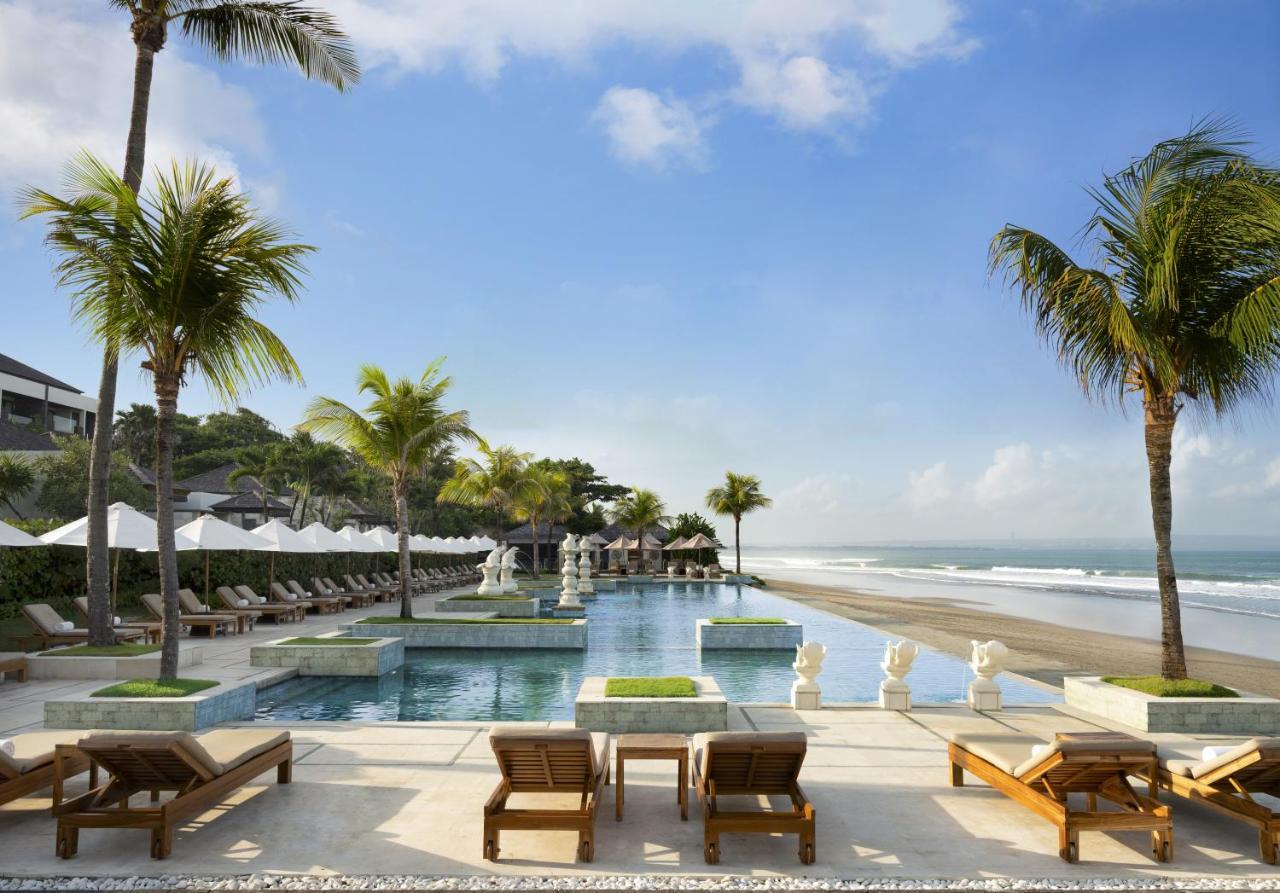
A beautiful beachfront resort, in a central location. Here you have the option of spacious rooms, suites and one-bedroom private pool villas with ocean views.
Standout features include the stunning infinity pool right on the beach, beachfront dining options and the beautiful greenery.
The Oberoi Beach Resort | $489 AUD | Check Prices
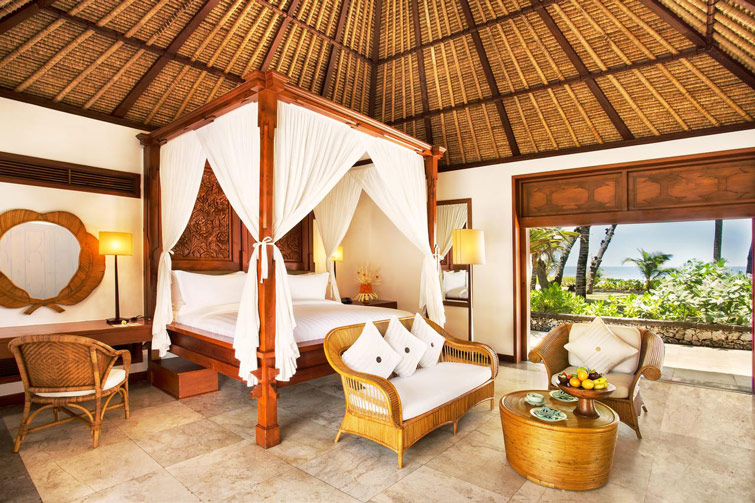
The Oberoi Beach Resort, is, as the name suggests, located right on Seminyak Beach. The grounds here are filled with beautiful lush tropical gardens and an outdoor pool overlooking the beach. It’s the perfect place for a relaxing stay.
Here you can choose to stay in thatched roof rooms or your own private villa. The traditional Balinese architecture throughout the resort is also a beautiful addition to your Balinese experience.
Luxury Hotels For Less
Hotel Indigo Bali Seminyak Beach | from $283 AUD | Check Prices
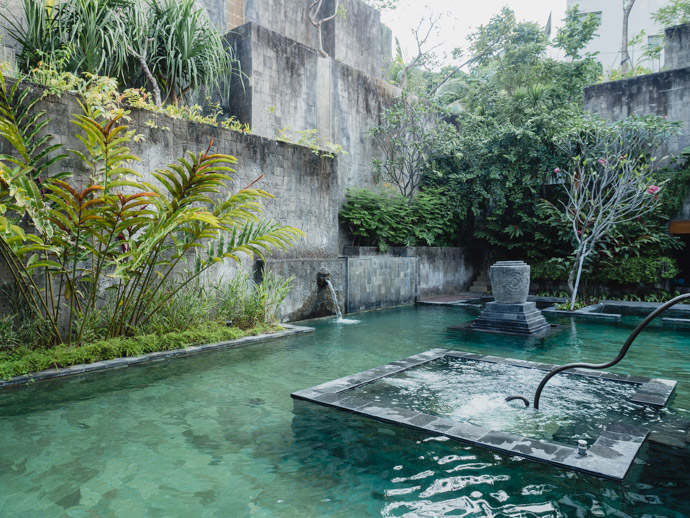
We loved our stay at Hotel Indigo Bali. This beautiful hotel manages to feel both grand and like your own secret little escape all at the same time. The design is stunning.
The rooms start at 50 SQM, with a private balcony, seating areas and unique design touches throughout. There are also one and two-bedroom private pool villas available.
We continued to find beautiful areas walking around the grounds throughout our stay, the secret garden pool is a favourite. The friendly staff were also a highlight of our stay.
Read more about our stay here.
Potato Head Suites & Studios | from $288 AUD | Check Prices
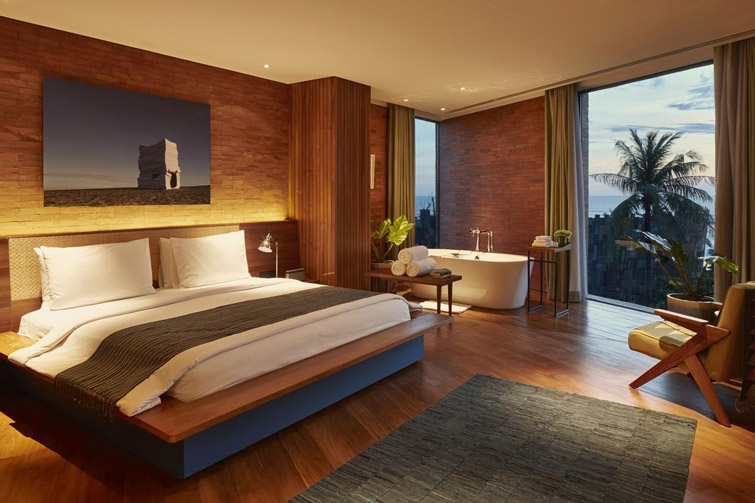
Potato Head Suites & Studios (Katamama Suites rebranded) is located on the same grounds as one of Bali’s best beach clubs, Potato Head Beach Club.
Here you will find a beautiful design and an eco-friendly approach. The location is in one of the most convenient areas in Seminyak, close to everything you need and want.
Maca Villas & Spa | from $315 AUD | Check Prices
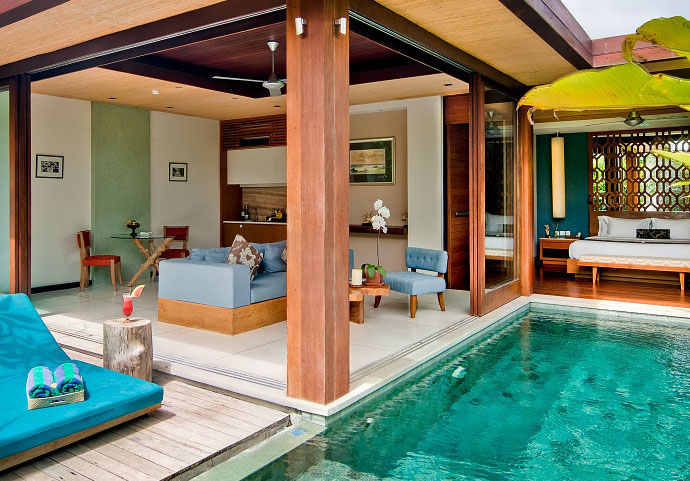
We first discovered Maca Villas & Spa by visiting Ippolito Speciality Coffee which is located within the Mase Kitchen Restaurant, the restaurant linked to the Maca Villas & Spa. We loved our breakfast and coffee here, so that would be a nice addition to the beautiful villas. There is also a communal pool by the restaurant.
Here you can stay in a one or two-bedroom private pool villa. You will have access to in-villa dining, a private butler service, a wellness centre and a free shuttle service within Seminyak.
Best Hotels In Seminyak For Under $200/night
Courtyard By Marriott Bali | from $198 AUD | Check Prices
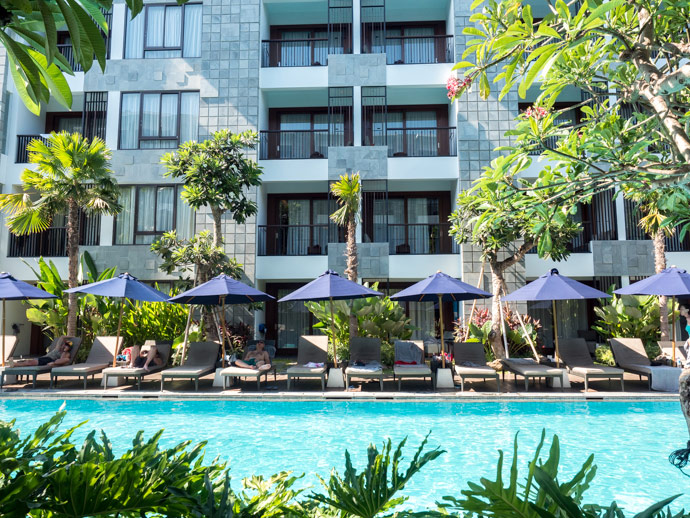
Courtyard By Marriott Seminyak is a great hotel for groups of friends, young couples and families. It’s a really inviting and fun hotel, with a great pool area. Its location is within walking distance of the beach, and also to the main road where you will find many shops.
Read more about our stay here.
Cross Paasha | from $159 AUD | Check Prices
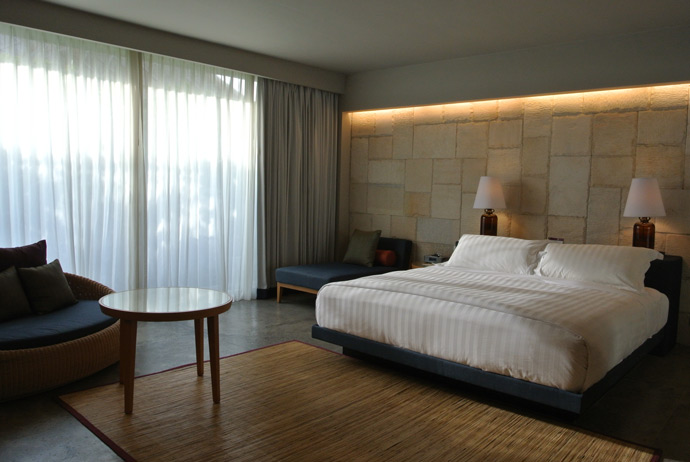
We loved our stay at U Paasha, with a central location on Jalan Kayu Aya. The room felt open and spacious and there was a great rooftop pool.
We also thought their idea of 24-hour check-in/check-out times meant you could really get the most out of your stay. Basically, if you check in at 6 pm you can check out at 6 pm.
Montigo Resorts Seminyak | from $165 AUD | Check Prices

Located near Potato Head Beach Club, Montigo Resorts is a nicely designed hotel in a convenient location.
Kanvaz Village Resort Seminyak | from $189 AUD | Check Prices
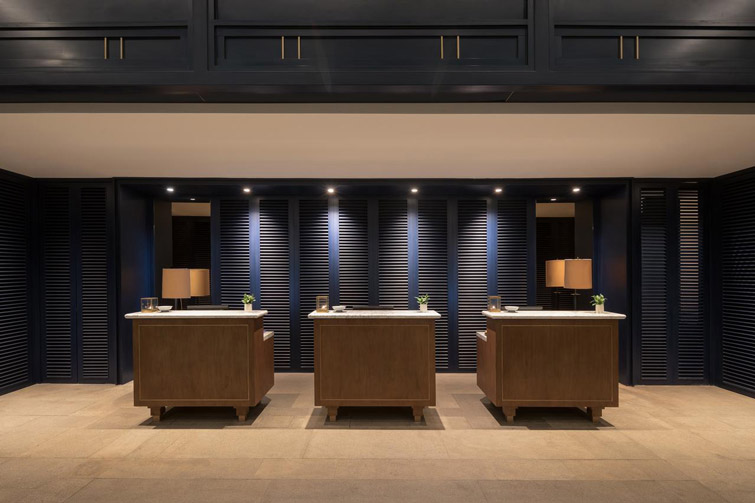
This 4-star hotel is in a central location in Petitenget and comes well-reviewed. Here you will find an onsite restaurant, fitness centre and an outdoor swimming pool.
Kayumas Seminyak Resort | from $153 AUD | Check Prices
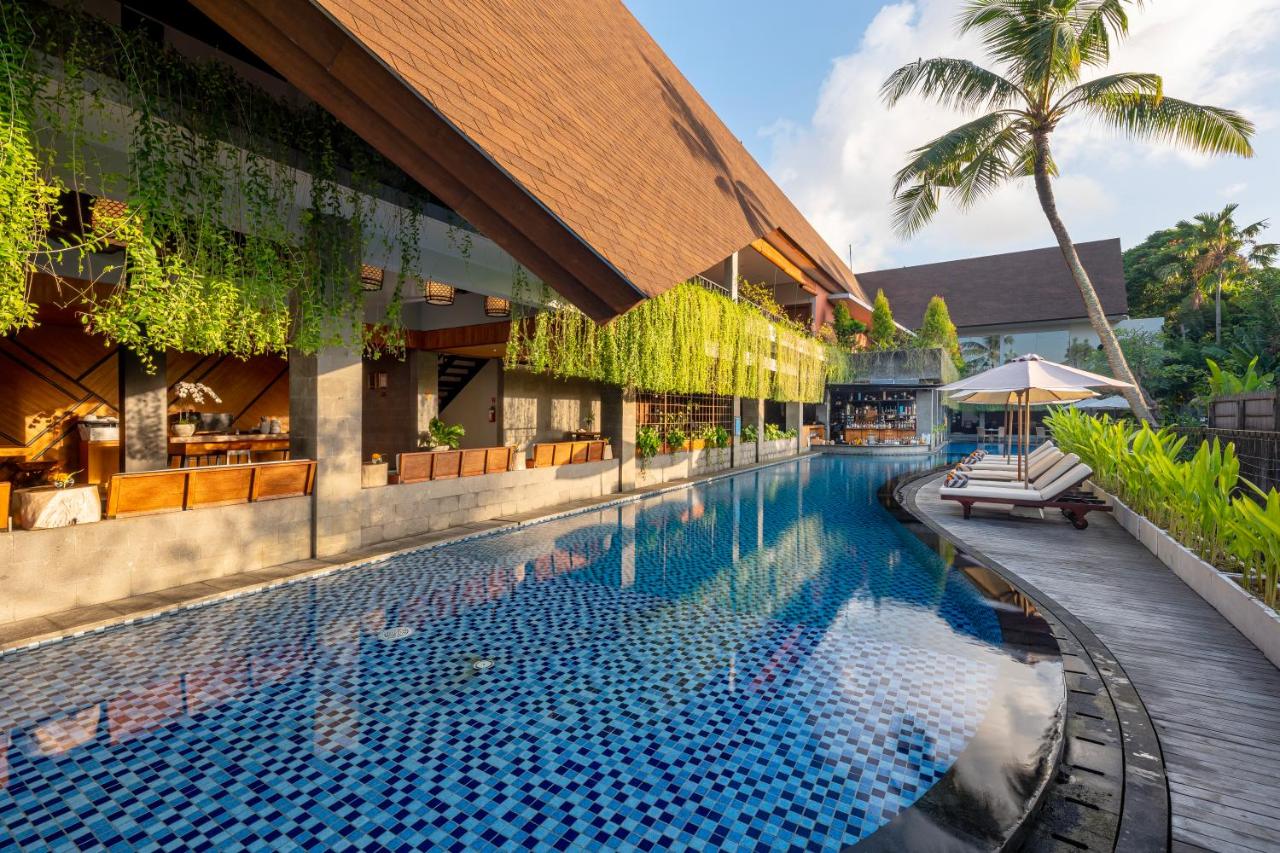
Kayumas is a great hotel in a central location, with one, two and four-bedroom suites. Here you will also have access to an outdoor swimming pool, fitness centre, garden and a restaurant onsite.
Aloft Bali Seminyak | from $142 AUD | Check Prices
Aloft is located a short walk from Batu Belig Beach. This 4-star hotel has a rooftop pool, room service and a restaurant onsite.
Grand Mercure Bali Seminyak | from $159 AUD | Check Prices
The recently opened Grand Mercure Bali is located at the southern end of Seminyak, near Double-Six Beach. It offers great value for money for a 5-star hotel. Facilities include an outdoor pool, fitness centre and kids club.
IZE Seminyak | from $146 AUD | Check Prices
IZE has a simple modern design and is in a great location, particularly for restaurants and shops.
Four Points by Sheraton Bali Seminyak | from $125 AUD | Check Prices
Located in a quieter area. A nicely designed hotel and rooms.
Amadea Resort & Villas | from $136 AUD | Check Prices
Although the rooms are quite simple, the location is great, particularly for access to food and shopping. It also comes quite well-reviewed.
The Salila Beach Resort | from $108 AUD | Check Prices
Located along Jalan Batu Belig, a little more removed from the central area, but within walking distance of Batu Belig Beach. This boutique hotel has a pool and an on-site restaurant.
Rama Residence Petitenget | from $103 AUD | Check Prices
Rama Residence is a 4-star hotel located in the Petitenget area. It has an outdoor pool, an onsite restaurant, and a spa. Here you can choose between rooms, one-bedroom suites, a two-bedroom villa and family rooms.
Hotels For Under $100/night
The Akasha Boutique Hotel | from $99 AUD | Check Prices
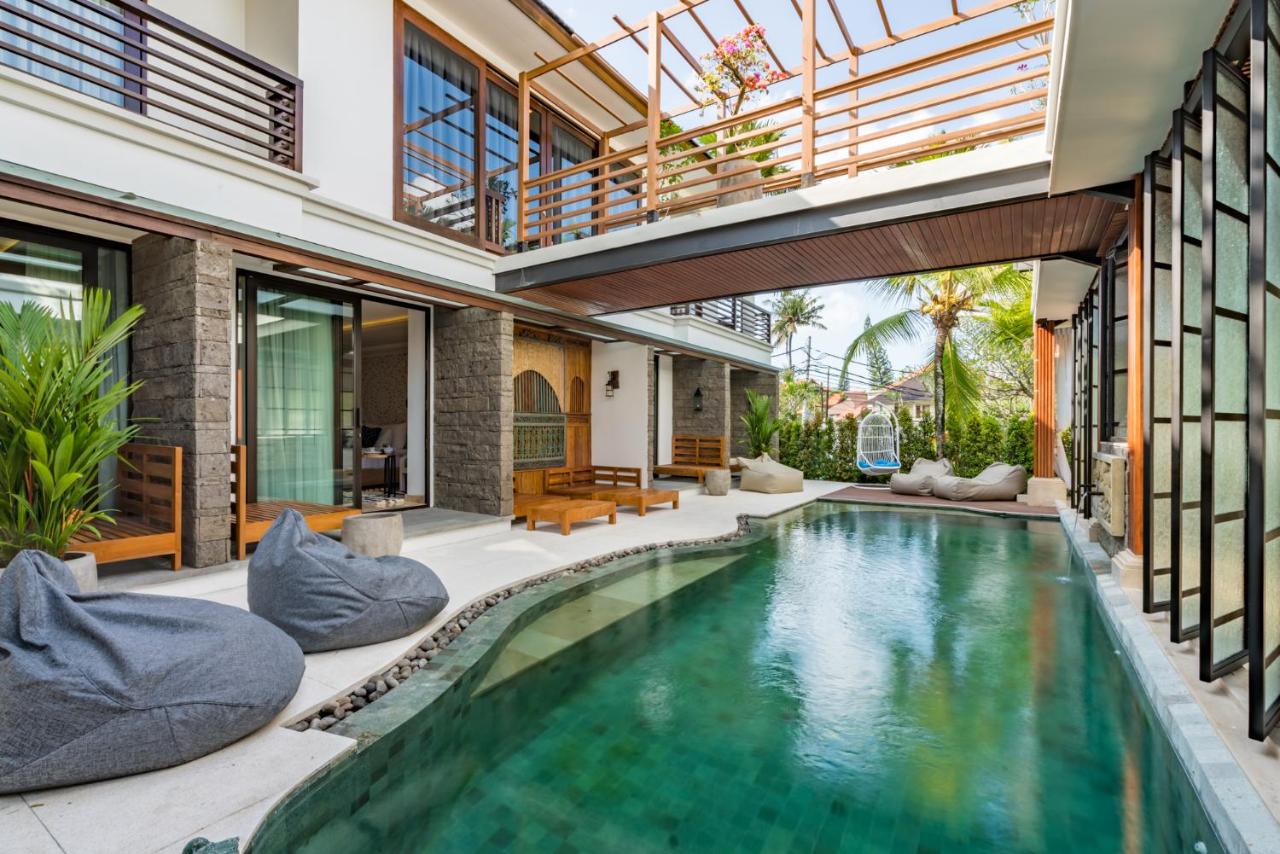
This 4-star hotel has a sun terrace and swimming pool and is within walking distance of Batu Belig beach.
Blu-Zea Resort By Double-Six | from $92 AUD | Check Prices
Blu-Zea Resort has an outdoor pool, an onsite restaurant, room service, and a spa. It’s located in the southern end and offers great value for money.
Tijili Seminyak | from $68 AUD | Check Prices
Located towards the southern end, Tijili has a pool and an on-site restaurant. It is also within walking distance of Double-Six beach.
Amerta Seminyak | from $83 AUD | Check Prices
Amerta is located in a central location near Seminyak Beach. Here you will find simple rooms, a swimming pool and breakfast available on-site.
Grandmas Plus Hotel Seminyak | from $47 AUD | Check Prices
A super affordable hotel, with clean simple rooms in a convenient location.
We will continue to update this post with any new places we stay and love, to make sure we are recommending the best accommodation.
Seminyak Field Guide
Once you’ve found the perfect place to stay, take a look at our Seminyak Field Guide for some more inspiration. Our Field Guide has everything you need to hit the ground running, including our favourite food, culture, shops, things to see + do and day trips. We’ve also put all of our favourites onto our own map so you can just take it out with you and no research or planning is required.
Read More On Seminyak:
The Best Things To Do In Seminyak, Bali: Our Favourites
Where To Find The Best Breakfast
Our Favourite Restaurants In Seminyak, Bali
Where To Find The Best Coffee In Seminyak
Our Stay At Courtyard By Marriott
Read More Bali Accommodation Guides:
Where To Stay In Bali: Our Favourite Areas, Hotels & Tips
The Best Places To Stay In Ubud Bali
The Best Hotels In Uluwatu Bali
Our Favourite Hotels & Areas In Nusa Lembongan
The Best Places To Stay In Gili Air
The Best Places To Stay In Sanur
Our Favourite Hotels In Jimbaran Bay
Where To Stay In East Bali: Favourite Locations & Hotels
What are your picks for the best places to stay in Seminyak? Let us know if you have any questions in the comments below…
This post was originally posted on July 28th, 2016 and last updated in 2024.
Please note that some of the links above are affiliate links, which means that at no extra cost to you, we may make a small commission if you decide to book a hotel.
The post Seminyak Accommodation Guide: Where To Stay In Seminyak Bali appeared first on Almost Landing – Bali.
Wondering where to stay in Uluwatu? Uluwatu has stunning white sand beaches, clifftop views, breezy cafes and some of Bali’s best beach clubs. It even has incredible cultural sights like Uluwatu Temple. But its contagiously laid-back attitude is perhaps one of its best traits. You can’t help but feel relaxed here. Not to mention that Uluwatu has some of the most amazing accommodations in the world, from cliff-edge resorts to beachside hotels. In our accommodation guide, you will find the best places to stay in Uluwatu, including our favourite luxury resorts, hotels, and villas, along with the best locations.
Contents
-
- The Best Areas To Stay In Uluwatu
- How Long To Stay
- Is It Worth Staying In Uluwatu?
- Booking Accommodation
- Accommodation Guide: The Best Places To Stay In Uluwatu
- Splurge: Luxury Hotels In Uluwatu
- Luxury Hotels For Less
- Best Hotels Under $200/night
- Best Hotels Under $100/night
Where To Stay In Uluwatu? Best Locations.

Uluwatu is a large spread-out area in the south of Bali. Although it’s a great place to stay in Bali, the main thing to keep in mind is that you may be fairly isolated in some areas. You will either have a long walk or need some form of transportation to get to a cafe, beach or beach club.
The main areas of Uluwatu and the Bukit Peninsula are Padang Padang, Uluwatu Beach/Suluban Beach, Bingin Beach, Balangan Beach/Dreamland Beach, Nyang Nyang and Ungasan/Melasti Beach.
So which side of Uluwatu is best to stay in?
Padang Padang
If you don’t have your own transport, then the best area to stay in Uluwatu is in Padang Padang. More specifically, in accommodation located along or near the main road of Jalan Labuan Sait, preferably around the middle or closer to the beach end of the street. Keep in mind, this is a long, hilly road, so obviously, the closer the accommodation is to the beach end, the easier it is to walk to the beach if you don’t have transport.
This area is home to some of our favourite cafes and restaurants, as well as stunning beaches. Some of our favourite places to eat are Drifter Cafe and The Loft.
You can walk to Padang Padang Beach, which is known for surfing and can be good for swimming as well. Thomas Beach is nearby but you would need to organise transport to get here, as a bonus one of the best cafes in Uluwautu, Suka Espresso is near Thomas Beach so you could do both at the same time. You can also walk to Bingin Beach in about 20 – 30 minutes from Padang Padang, depending on exactly where your accommodation is.
So as you can see, you have quite a lot of walkable options in Padang Padang. And you can arrange a driver for when you want to visit other areas, restaurants, beaches or beach clubs.
Bingin Beach & Suluban Beach
If you do have your own transport, then the best location to stay in Uluwatu is Bingin Beach or the area around Suluban Beach/Uluwatu Beach. Again, these areas have amazing places to eat, beautiful beaches and a great laid-back vibe.
Bingin Beach feels like a cosy little beachy community. You can have a casual dinner on the beach at one of the seafood warungs. There are some great places to eat like The Cashew Tree, Gooseberry, Banana Lounge, and Kellys Warung. It’s one of our favourite areas in Uluwatu.
The area around Suluban Beach (also known as Blue Point Beach) & Uluwatu Beach feels a little more spacious. It’s home to a great beach club with incredible food, Ulu Cliffhouse. Another restaurant we absolutely loved in the area is Mana Uluwatu. And of course, this is where you will find the iconic clifftop bar, Single Fin, one of the best spots for sunset views. In the area, you can also visit Uluwatu Temple and see the Kecack fire dance.
Ungasan & Melasti Beach
Ungasan and Melasti Beach area can be quite isolated, so we would mostly recommend staying in this area if you’re staying in a luxury resort that has most of what you will need for your stay.
The area is also home to some of the best beaches in Bali along with many beach clubs where you can spend the day, like Sundays Beach Club, Karma Beach Club & Palmilla Beach Club.
Balangan Beach & Dreamland Beach
This area is home to some beautiful beaches, but perhaps slightly more isolated in terms of what else is in the area. If you have transport and don’t mind using it to get to most cafes and other things to do in Uluwatu, then Balangan Beach and Dreamland Beach might be great picks.
If you don’t have your own transport, I would give these areas a miss, unless you’re staying at a luxury resort.
Nyang Nyang
The area surrounding Nyang Nyang Beach can also be quite isolated. Although the hard-to-get-to beach is beautiful, we think Nyang Nyang is best if you’re staying in a 5-star hotel and planning on spending a lot of your time there.
Which Area To Stay In Uluwatu For A First-Time Visit?
For a first-time visit to Uluwatu, the best areas to stay are Padang Padang or Bingin Beach. Both of these areas are in a prime location with plenty of dining options and are near some of the most popular beaches. They have a great vibe and you will get a nice introduction to Uluwatu.
Beach Or Inland?
Even within each area mentioned above, the areas can be quite spread out. We would recommend staying close to the beaches rather than more inland, as often the inland options can still be quite remote in terms of what’s surrounding them.
Some hotels in Uluwatu have access to their own private beach, some are near beautiful public beaches, and some are clifftop hotels with ocean views, which you may still need to get transport to a beach.
So when deciding on Uluwatu accommodation, for easy access to beautiful public beaches, the best areas would be those near Bingin, Balangan and Padang Padang Beach. For access to beautiful private beaches or beach clubs, our pick would be the Ungasan area, and hotels like Alila Villas Uluwatu, Ungasan Clifftop Resort and Bulgari Resort Bali.
How Many Days Do You Need In Uluwatu?
We would recommend at least 2 – 4 nights, but you could also spend much longer and have a really laid-back holiday. The beauty of Uluwatu is how relaxed it is, and you can’t really experience that in just one night.
Two nights is ok if that’s all you have time for, or if you just want to see what it’s like. But four nights is a great way to spend your days at the beautiful beaches in this area, eating your way through the delicious cafes, spending the day at a beach club and exploring the area. When deciding how long to stay in Uluwatu, keep in mind you will either need your own transportation or to arrange private transportation when needed.
Is It Worth Staying In Uluwatu?
It’s absolutely worth staying in Uluwatu. Although you can take a day trip here and still enjoy some of the beautiful beaches, laid-back cafes, and beach clubs, the real beauty of Uluwatu lives in being able to slowly soak up the laid-back atmosphere and let each day unravel. Uluwatu is best enjoyed over time, not rushed.
Not to mention the incredible accommodation options in the area, from clifftop resorts to luxury villas and thoughtfully designed beach shacks.
Booking Accommodation
Booking.com
We love using Booking.com, it’s one of our favourite ways to book Uluwatu accommodation and they have a great range of options, from luxury hotels, boutique hotels, villas and homestays.
Uluwatu Accommodation Guide
We have had the opportunity to stay in some incredible hotels in Uluwatu, and have spent quite a bit of time in the area as it’s one of our favourite places in Bali.
We believe where you stay can have a huge impact on your holiday, whether you stay in 5-star hotels with incredible views, boutique hotels with an unforgettable design or more affordable places to stay that are clean, friendly and in a great location.
Our picks for the best places to stay in Uluwatu below are based on our favourites that we have stayed in, knowledge of the best hotels and their specific locations, lots of research, reading reviews, hearing from you and putting this all together with our own experience.
So here are our favourite picks for where to stay in Uluwatu Bali…
Please note: Prices are per night in AUD and were accurate at the time of this post.
Splurge: Luxury Accommodation In Uluwatu
Alila Villas Uluwatu | from $1336 | Check Prices
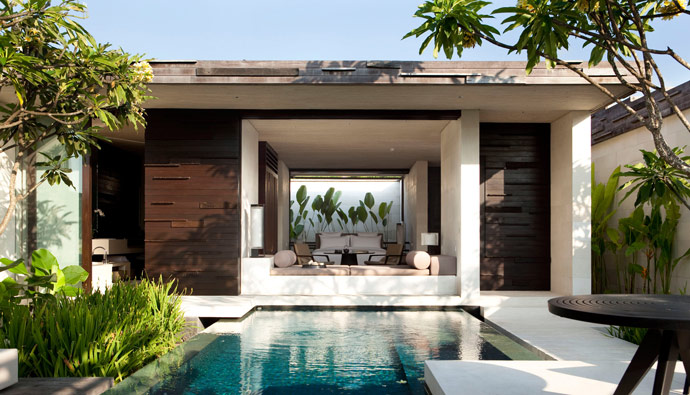
The Ungasan Clifftop Resort | from $784 | Check Prices
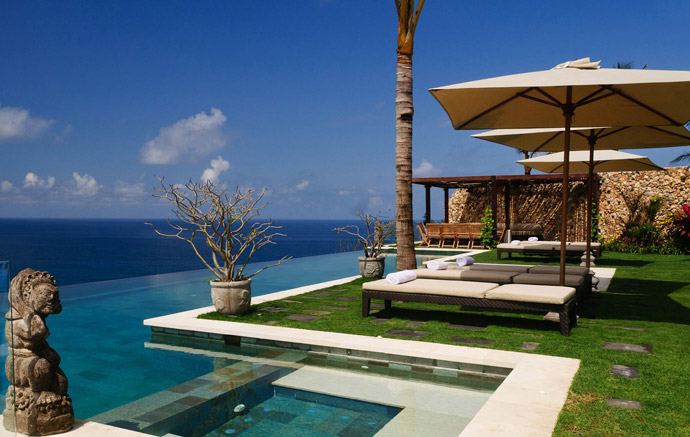
Bulgari Resort Bali | from $2371 | Check Prices
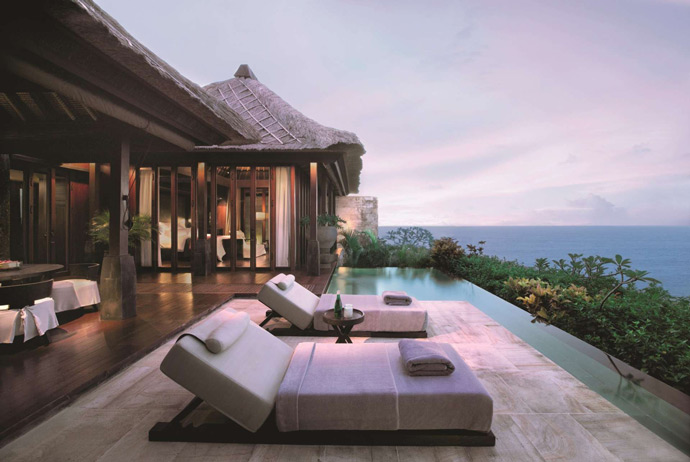
Jumeirah Bali | from $1145 | Check Prices
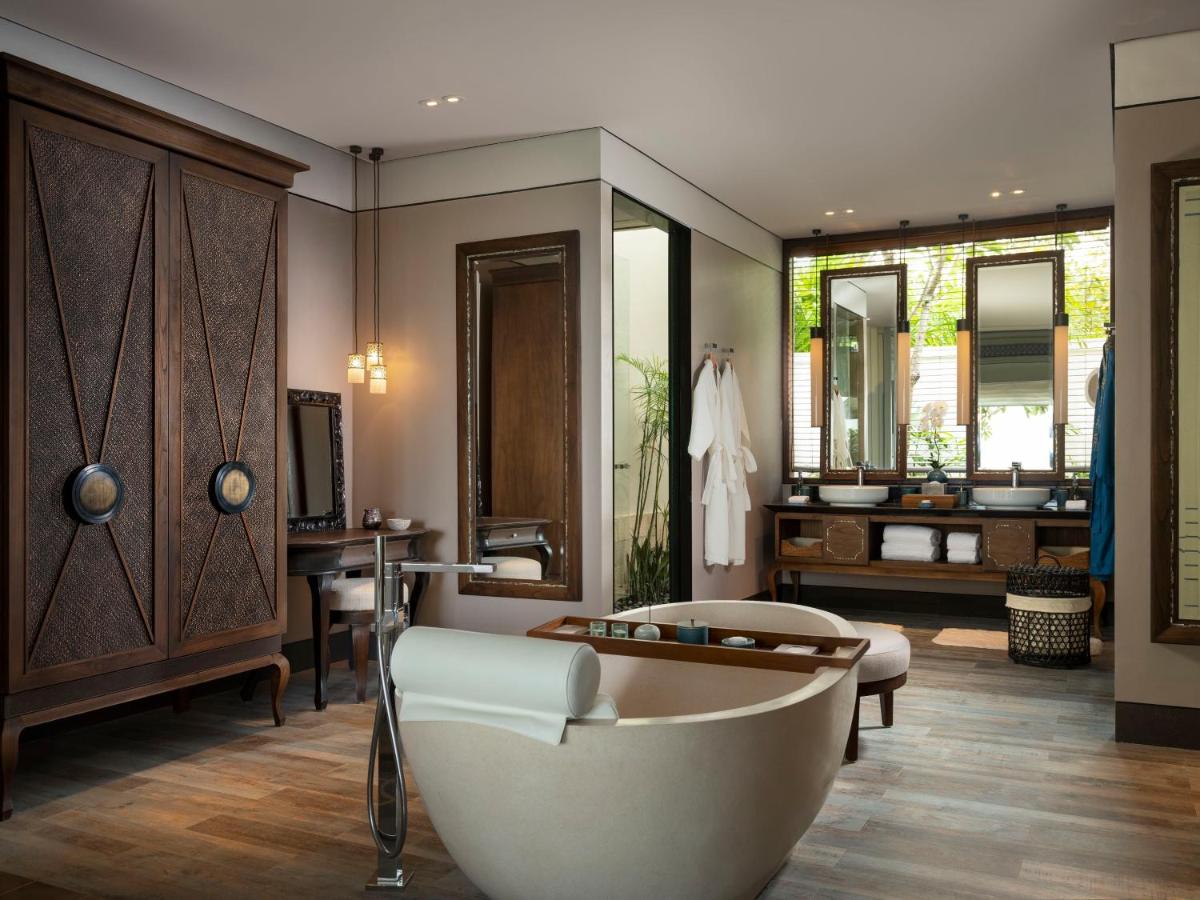
The Asa Maia | from $637 | Check Prices
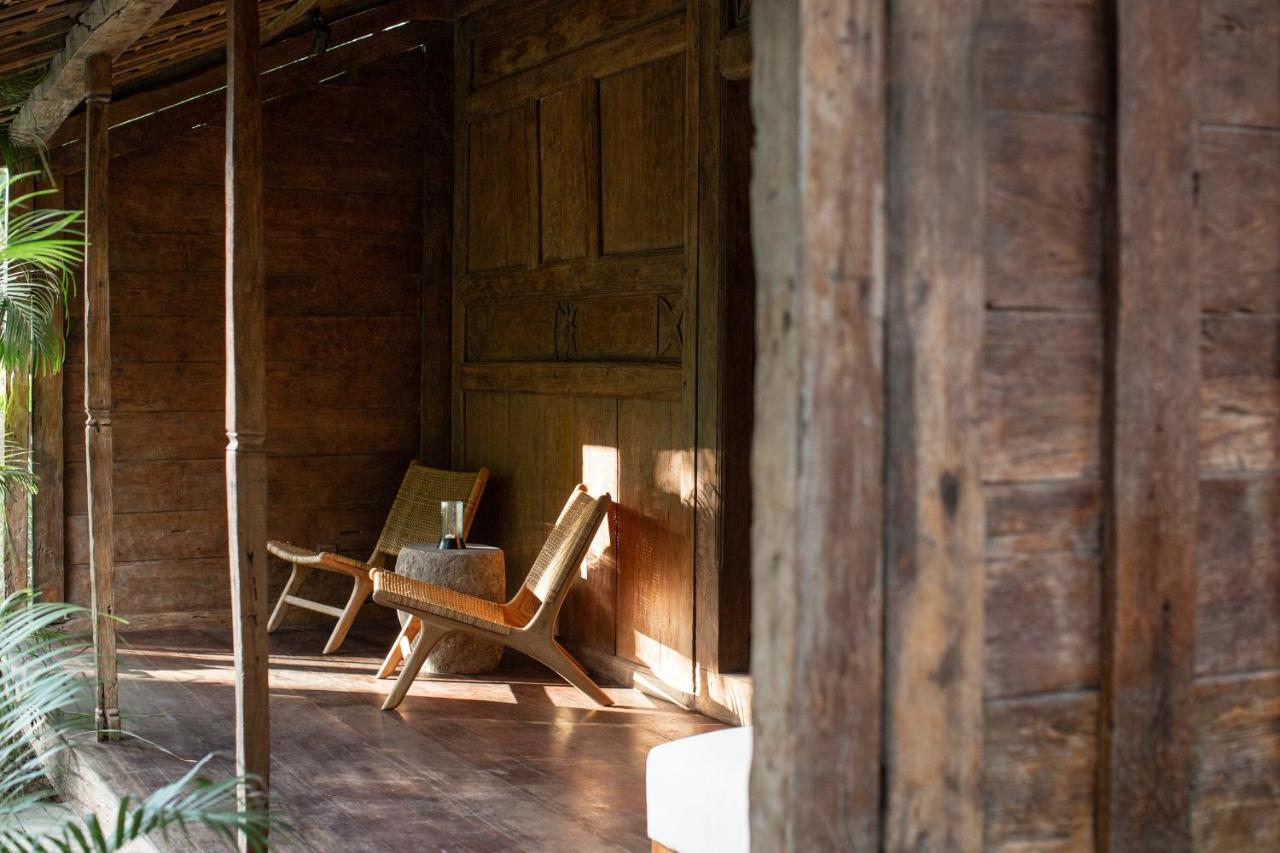
Six Senses Uluwatu | from $1097 | Check Prices
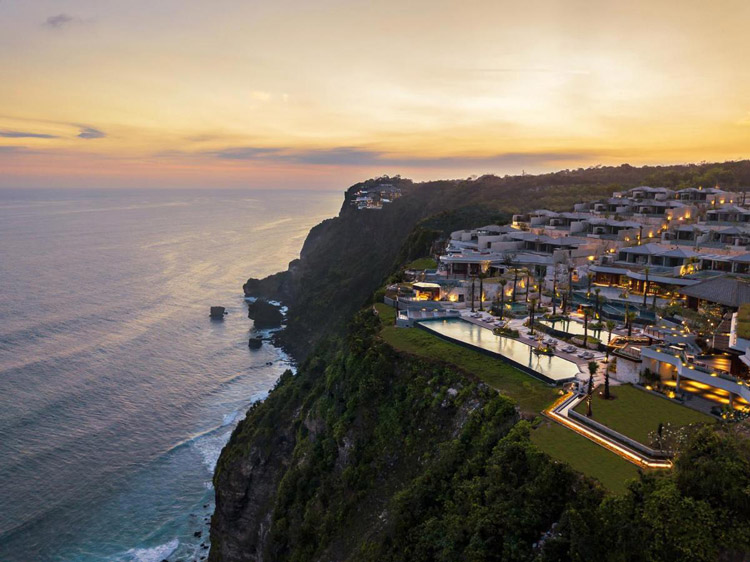
Luxury Hotels For Less
Suarga Padang Padang | from $317 | Check Prices

Anantara Uluwatu | from $490 | Check Prices (read our review here)

Renaissance Bali Uluwatu Resort & Spa | from $249 | Check Prices (read our review here)

Radisson Blu Bali Uluwatu | from $329 | Check Prices

Legends Beachfront Resort | from $212 | Click Here (accommodation on the beach)

Aloha Beach House Bingin | from $274 | Check Prices
Village Bali | from $204 | Check Prices
Santana Villas Bingin | From $220 | Check Prices
Jellyfish Villas Bingin Beach | from $330 | Check Prices
Gypsea Bali | from $255 | Check Prices
Hotels In Uluwatu Under $200/night
Gravity | from $140 | Check Prices
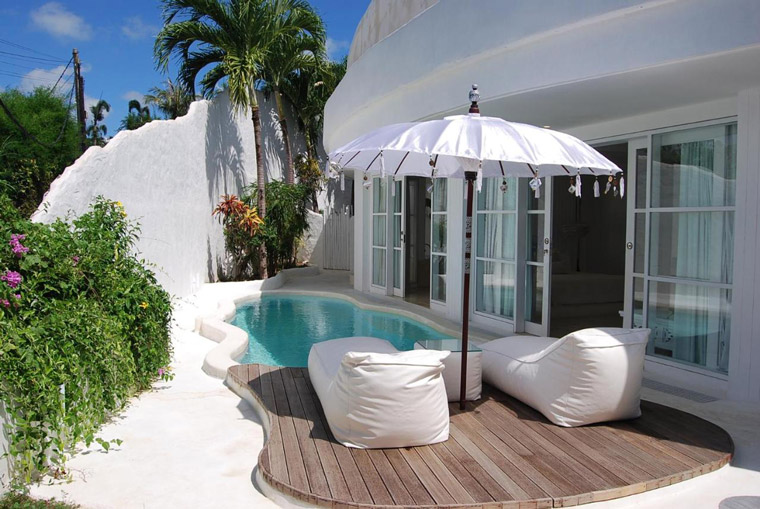
Hari Indah Boutique Hotel & Spa | from $198 | Check Prices
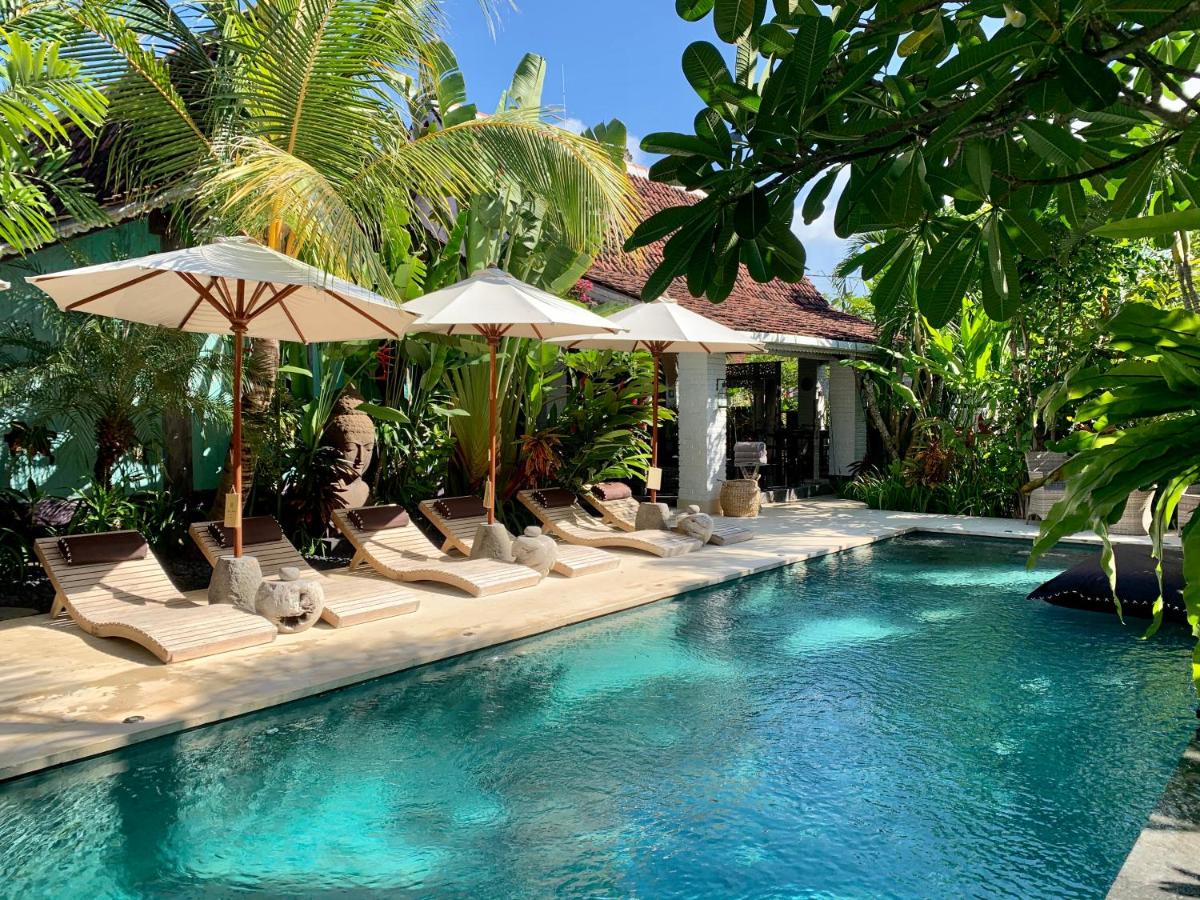
Sal Secret Spot | from $156 | Check Prices

Amara Uluwatu | from $192 | Check Prices
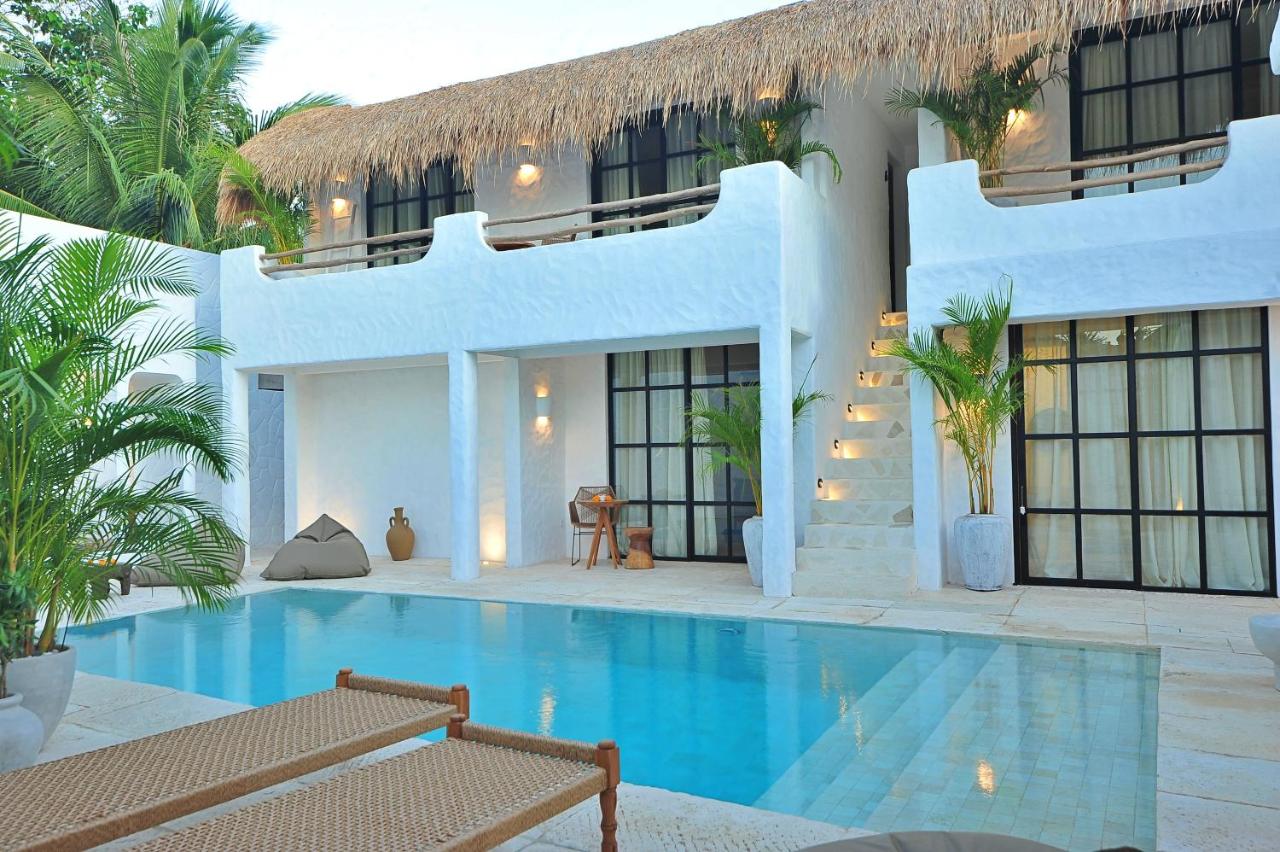
Sal Central | from $190 | Check Prices
Canang Villas Bingin | from $172 | Check Prices
Terra Cottages Bali | from $184 | Check Prices
Green Escape Eco Resort | from $164 | Check Prices
Mule Malu Tropical Stay | from $182 | Check Prices
Kalia Bingin | from $181 | Check Prices
Uluwatu Cottages | from $186 | Check Prices
The Room Padang-Padang | from $150 | Check Prices
Oceanna | from $134 | Check Prices
Wira Homestay & Spa | from $108 | Check Prices
Hotels Under $100/night
Pink Coco Uluwatu | from $78 | Check Prices
Padang Padang Inn | from $57 | Check Prices
Lala Homestay Bingin | from $49 | Check Prices
We will be continually updating this post with any new places we stay and love. Find out more about Uluwatu in our Uluwatu Travel Guide.
Read More:
Thomas Beach Bali: How To Get There & What To Expect
The Best Places To Stay In Bali: Our Favourite Areas, Hotels & Tips
Seminyak Accommodation & Area Guide
The Best Places To Stay In Ubud
Where To Stay In Canggu: Our Favourite Areas & Hotels
Our Favourite Hotels & Areas In Nusa Lembongan
The Best Places To Stay In Gili Air
What are your picks for the best places to stay in Uluwatu and why? Let us know if you have any questions in the comments below…
This article was first published on May 3rd, 2017, and last updated in 2024.
The post Where To Stay In Uluwatu: Our Uluwatu Accommodation Guide appeared first on Almost Landing – Bali.
From a scenic flight above to the churning gorge below, Victoria Falls boasts a multitude of perspectives, each more awe-inspiring than the last. Yet, for a view that defies convention, nothing rivals a plunge into Devil’s Pool. Perched precariously at the precipice of Victoria Falls, this small, tranquil basin is a contrast to the thunderous waters nearby, offering a swim on the very cusp of one of nature’s greatest wonders.
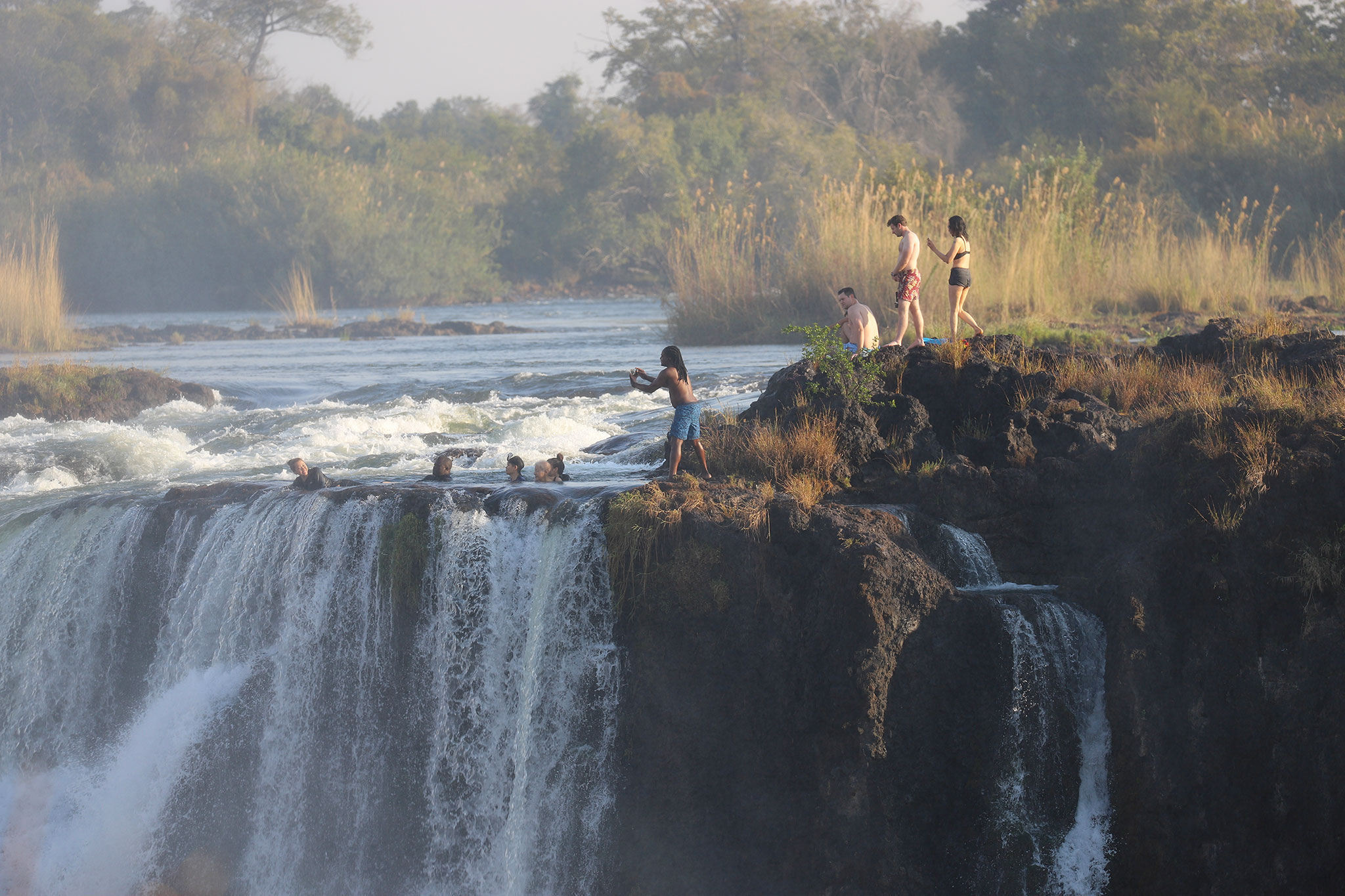
Devil’s Pool in Victoria Falls is a must for adventure-seeking travellers!
Where is Devil’s Pool?
Set within the larger spectacle of Victoria Falls – bordering Zambia and Zimbabwe – Devil’s Pool is positioned on the Zambian side of the falls adjacent to the famous Livingstone Island. It’s here, at the summit of the cascade, where the Zambezi River gently pools before its dramatic descent, offering intrepid swimmers a once-in-a-lifetime dip.
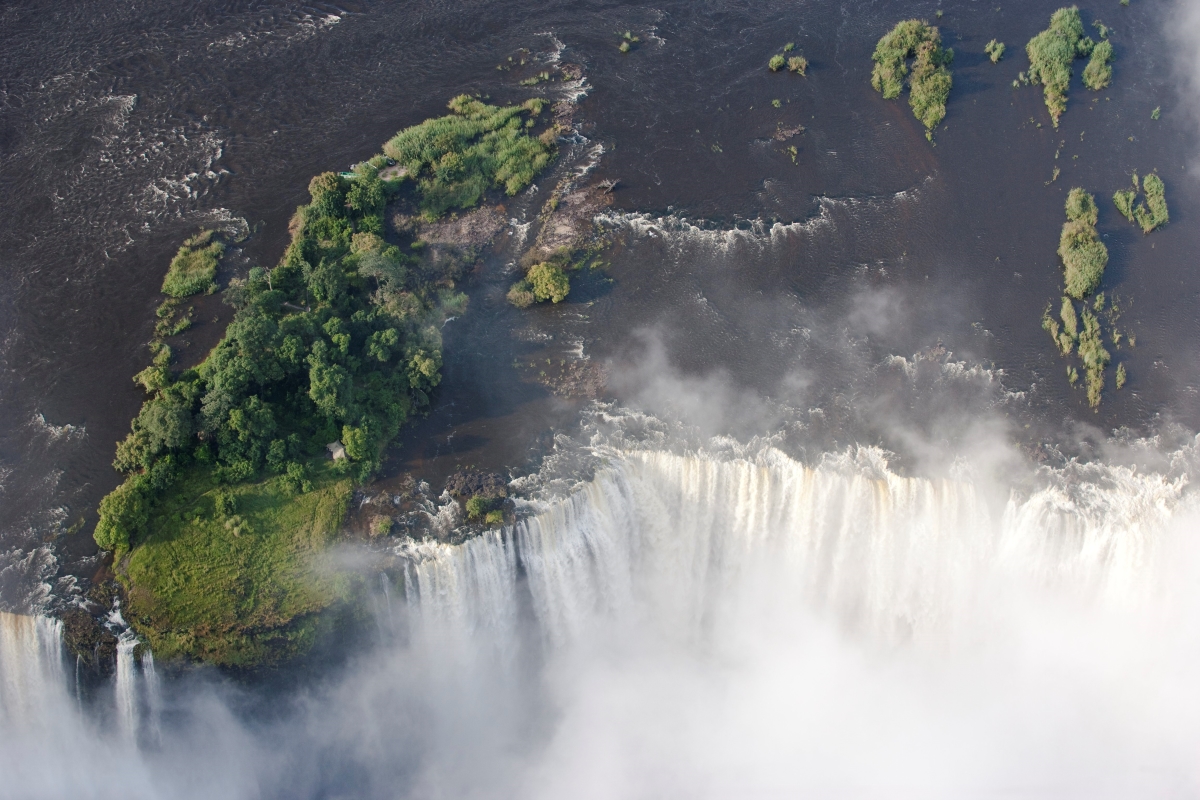
Devil’s Pool is accessible from Livingstone Island, a short boat ride from the mainland, Image Credit: Livingstone Island
Why is it Called Devil’s Pool?
The moniker “Devil’s Pool” might conjure images of a forbidden aquatic playground, yet the reality is far more enthralling than menacing. The name reflects the audacious positioning of this natural “infinity” pool.
It’s situated on the brink of a 108-metre drop, presenting a thrilling juxtaposition of calm water a mere stone’s throw from the roaring cascade. And the audacity of swimming in such a place perhaps earned it the devilish title – a cheeky nod to those with the nerve to dare its waters!

Swim right on the edge, high above Victoria Falls, Image Credit: Livingstone Island
What’s Special About Devil’s Pool?
What sets Devil’s Pool apart isn’t just its remarkable location. Instead, it’s the singular sensation of floating at the frontier between serenity and the sublime. It’s an unfiltered communion with nature, where the power of Victoria Falls can be witnessed from an unrivalled vantage point, feeling the force of the Zambezi River right at your fingertips.
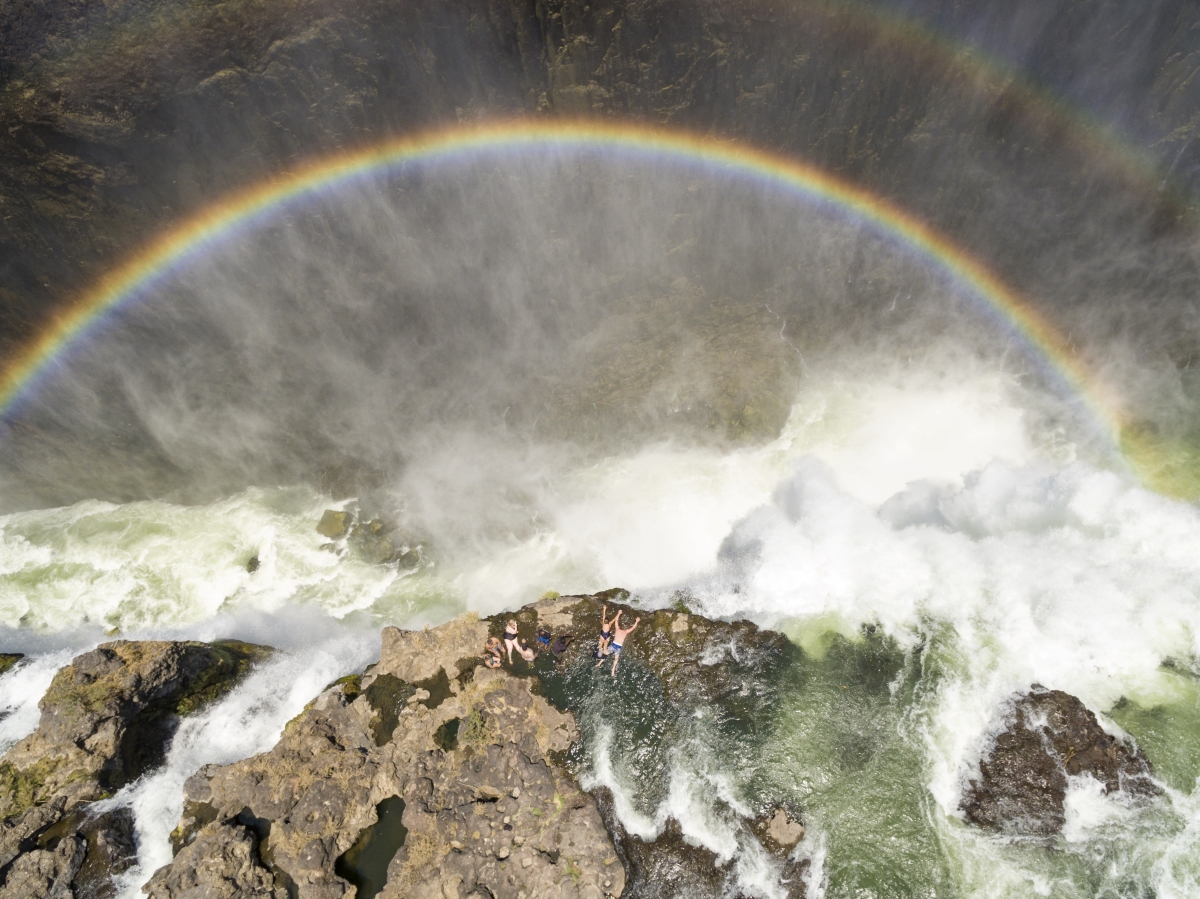
The allure of Devil’s Pool lies in its unique location, Image Credit: Livingstone Island
Is it Safe to Swim in Devil’s Pool?
Safety is naturally a paramount concern when swimming at the edge of one of the world’s largest waterfalls. With us, you can rest assured that safety is a top priority.
Access to Devil’s Pool is only permitted when water levels are sufficiently low – typically from mid-August to mid-January. During this time, the natural rock barrier comes into its own, allowing for a safe and exhilarating swim under the guidance of experienced local guides.
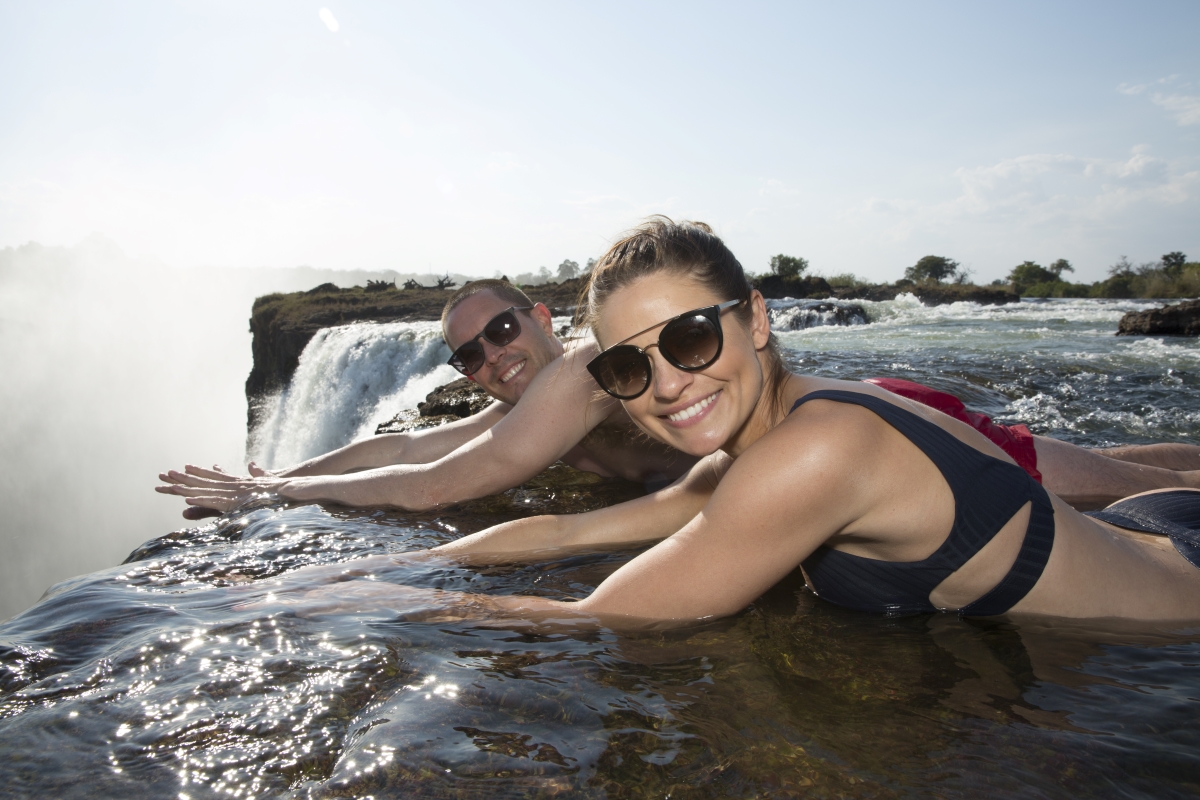
Water levels are monitored, ensuring every plunge is as safe as it’s thrilling, Image Credit: Livingstone Island
What Are the Best Months to Visit Devil’s Pool?
Timing is everything when it comes to visiting Devil’s Pool. The optimum months stretch from September to December, when the dry season curtails the river flow, rendering the pool accessible and swim-friendly.
These months strike the perfect balance between accessibility and the sheer spectacle of the falls, which still boast plenty of thunderous might.

Bird’s-eye view of Victoria Falls in all its grandeur
Can You Visit Devil’s Pool From the Zimbabwe Side?
While Devil’s Pool itself is located on the Zambian side, it’s entirely possible to embark on a day trip from Zimbabwe. A short journey – comprising a border crossing and a guided tour – transports you from one nation to the other, ensuring no one misses out on this bucket-list experience due to geographic constraints.

Take a selfie in calm waters resting on the cusp of a ferocious drop, Image Credit: Livingstone Island
What Else Is There to See at Devil’s Pool?
A visit to Devil’s Pool often includes a mini-tour of Livingstone Island, where Dr David Livingstone first set eyes on the falls. You’ll also experience a unique panorama of the Main Falls, see the Rainbow Falls (the highest of the Falls), and the Boiling Pot (the launching site of white water rafting trips), capturing the multifaceted beauty of this majestic natural feature.

The water levels need to be low enough to expose the rock barrier and allow for safe swimming
Where to Stay
After the day’s escapades, retreat to an array of lodgings that cater to every taste. From the colonial grandeur of the Royal Livingstone Hotel, where zebras roam the grounds, to the tranquil island sanctuary of Sindabezi Island, there’s an accommodation option to suit your desire for comfort, luxury, or rustic charm.
You’re spoiled for choice! Take a look at our curated list of accommodation options at Victoria Falls.

We can recommend a range of exquisite lodges and hotels in the vicinity, Image Credit: Royal Livingstone
Live Life on the Edge!
Taking a dip in Devil’s Pool at Victoria Falls is a heady mix of natural splendour, memorable moments, and respite that only Africa’s wild spaces can offer. With us at Rhino Africa, you’re not just witnessing nature’s marvels; you’re living them.
So, are you ready to take the plunge? Start planning your adventure today!
Featured Image: Livingstone Island
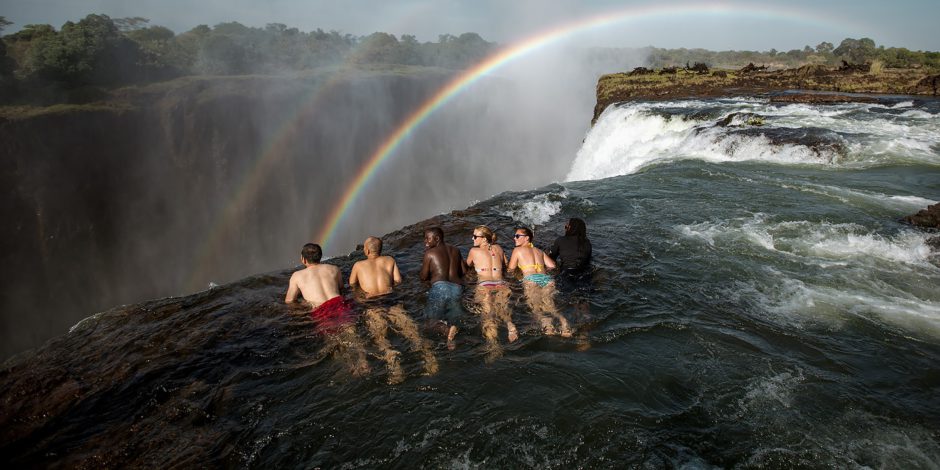
When mentioning the Zambezi River, most think of Victoria Falls, where this colossal river asserts its might by plunging a staggering 354 feet to the churning chasm below. However, we’re here to tell you that the Zambezi’s claim to fame isn’t solely this world-famous waterfall but also its vibrant ecosystem and the amazing adventures it hosts.

Discover the Zambezi River’s multifaceted allure that goes beyond Victoria Falls, Image Credit: Royal Zambezi Lodge
Where is The Zambezi River?
Winding its way through six countries, the Zambezi River unfolds across 2,574 dazzling kilometres, with Zambia and Zimbabwe serving as its most iconic hosts. Amidst its mighty currents and serene stretches, the river breathes life into spectacular landscapes and nurtures an array of wildlife, offering an irresistible invitation to intrepid travellers.
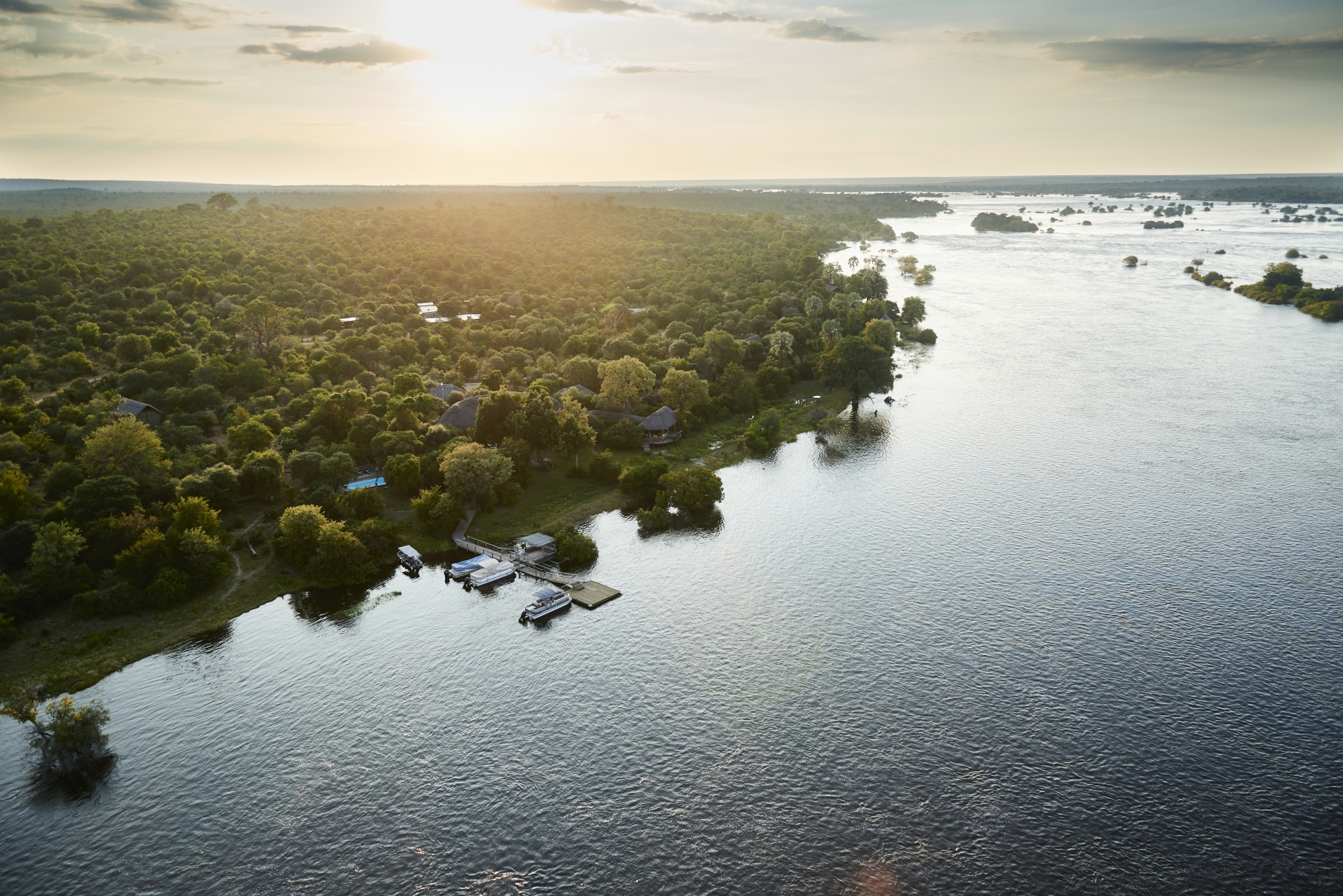
The Zambezi River is the fourth-longest river in Africa, Image Credit: Victoria Falls River Lodge
Activities on the Zambezi River
With its sprawling waters and thriving wildlife, the Zambezi River offers a myriad of activities to enchant thrill-seekers and leisure lovers alike. So, without further ado, join us as we take a look at some of our top experiences…

Hippos wallowing in the Zambezi River, Image Credit: Time+Tide Chongwe House
1. White Water Rafting
If you have a thirst for thrills, Zambezi River rafting is a tall glass of your favourite drink. Trust us when we say it’s not for the faint-hearted, but oh boy, is it fun! Imagine navigating through fierce, frothy waters, with the river’s personality shifting from calm to wild in a heartbeat.
With rapids famously named “The Overland Truck-Eater” and “Gnashing Jaws of Death”, you’re in for a pulse-racing, adrenaline-pumping adventure bound to etch itself into your memory as one of your most exhilarating escapades.

The Zambezi River offers the most exciting and adrenaline-fuelled rafting experience, Image Credit: Shearwater Victoria Falls
2. Soothing Canoe Safari
Is white river rafting too wild for you? No problem. For a milder, more tranquil experience, a canoe safari is your calling. Picture yourself drifting languidly on the gentle currents, the air punctuated with distant animal calls and water lapping against your canoe.
As you glide along, witness a parade of elephants, giraffes, zebras and other wildlife ambling to the water’s edge for a sip. It’s a great way to acquaint yourself with the river’s softer side.
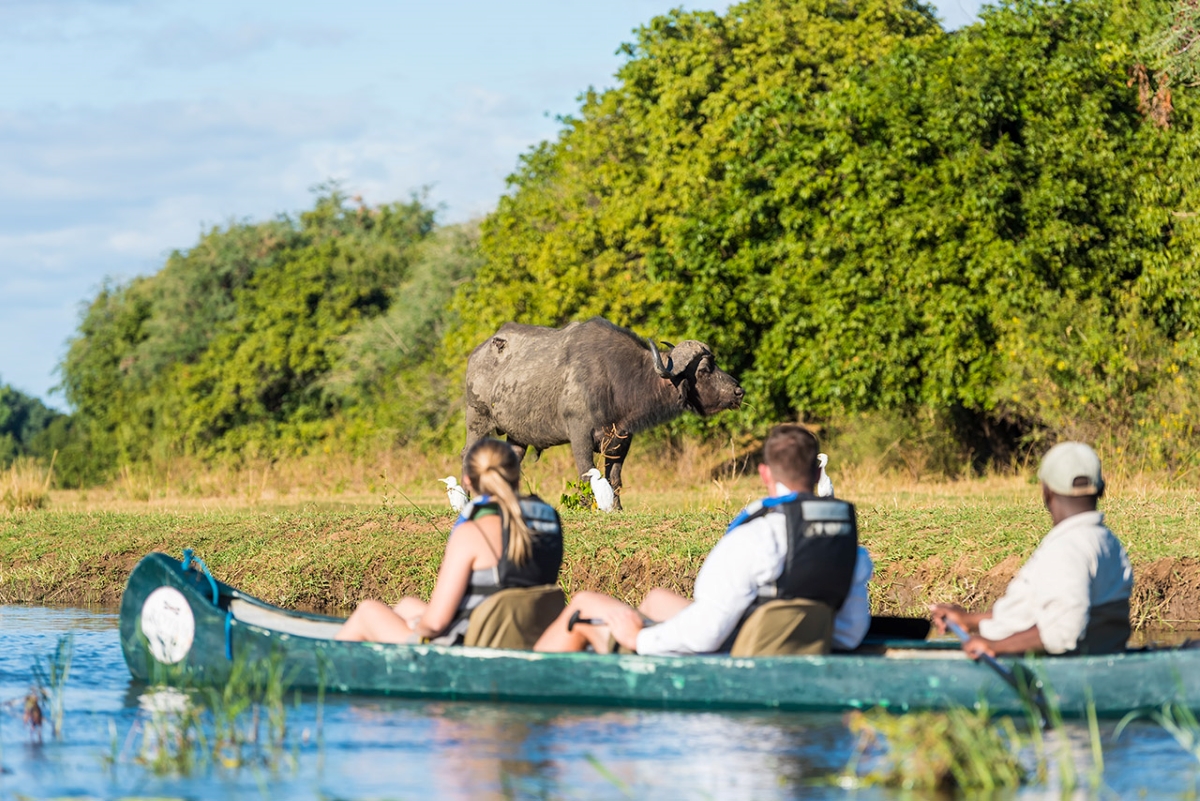
Take your time on a canoe safari gliding along the quiet waters of the Zambezi River, Image Credit: Royal Zambezi Lodge
3. Tigerfish Fishing on The Zambezi River
This next boating experience may require some skill. Angling enthusiasts, prepare for a thrilling tussle with the fierce tigerfish. Whether under the soft morning glow or during a leisurely afternoon, set out for a spirited battle with tigerfish, tilapia bream, elusive barbel, and catfish – all eager to join in the game of tug-of-war.
With kingfishers and herons as your silent supporters, each tug promises a gripping tale of triumph!
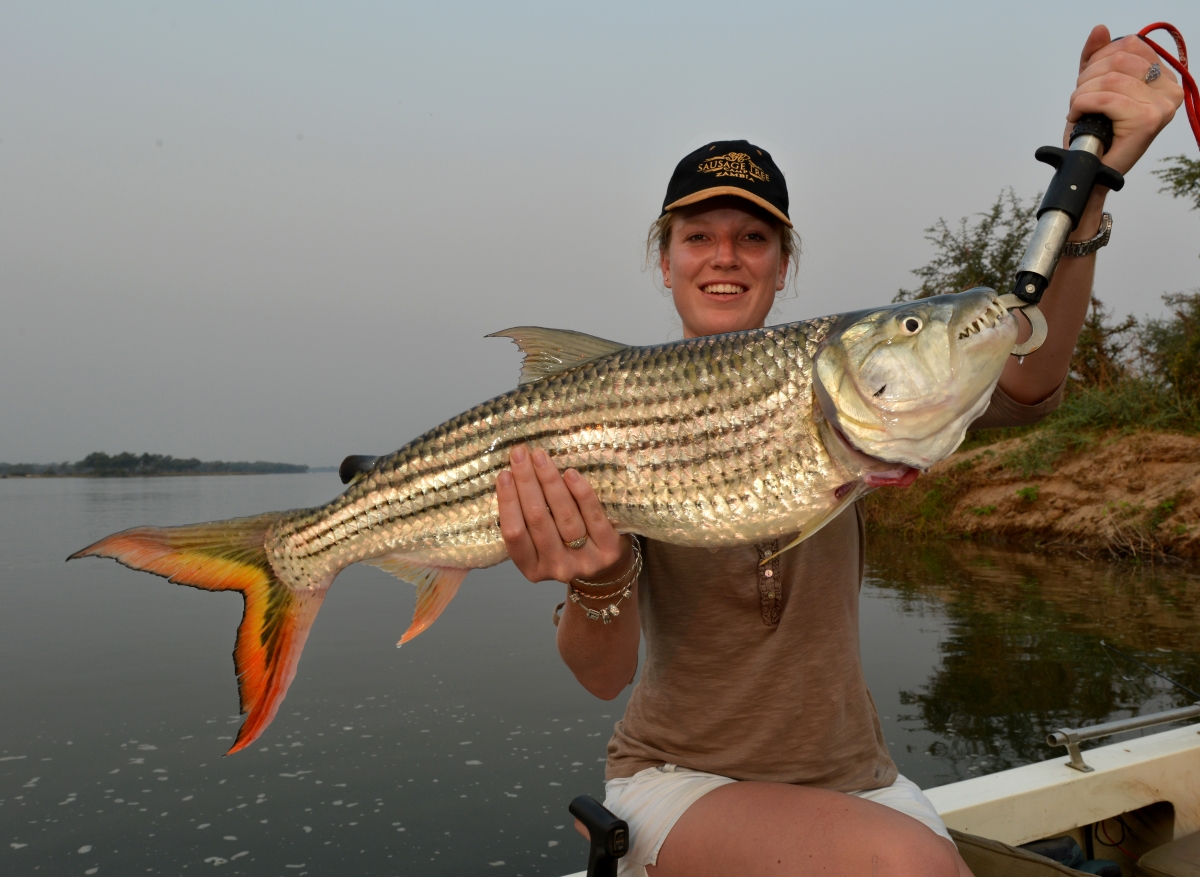
The world-renowned tigerfish is prolific in the Zambezi River, Image Credit: Sausage Tree Camp
4. Zambezi River Cruise
Unlike rafts and canoes, river cruises present a more spacious and comfortable “craft” experience on the Zambezi River – plus, you’ve got plenty of variants to choose from!
Opt for a lunch cruise bathed in the brilliant sunlight where the river sparkles and the sky is impossibly blue. Or perhaps a sunset cruise is more your style, where the horizon is set ablaze with the fiery tones of twilight. For a romantic rendezvous, enjoy a dinner cruise where the stars not only twinkle above but on the water’s surface, too.

Explore the riverbanks, islands and channels on a comfortable river cruise, Image Credit: Chiawa Camp
5. Bird-Watching
The skies, trees, shrubs and shallows that fringe the Zambezi River are adorned with a spectacular array of birdlife, turning the area into a haven for birding enthusiasts. With over 400 species recorded, every dawn brings a symphony of chirps, tweets, and songs from the feathered residents.
With species ranging from crowned cranes, herons and kingfishers to long-toed lapwings, storks and bee-eaters – avid birders as well as casual observers will find the riverbanks utterly captivating.

The riverbanks are bustling with life, creating captivating photographic moments for birders, Image Credit: Royal Zambezi Lodge
Adrenaline Adventures and Serene Moments Await!
So, with anticipation building and adventure calling, are you ready to explore the Zambezi River with the guidance of our seasoned Travel Experts?
At Rhino Africa, we’ve listened to the river’s tales, engaged in its experiences, and are now eager to craft your personal journey that unveils the many faces of the mighty Zambezi! Contact us today, and let’s start planning!
Featured Image: Sausage Tree Camp
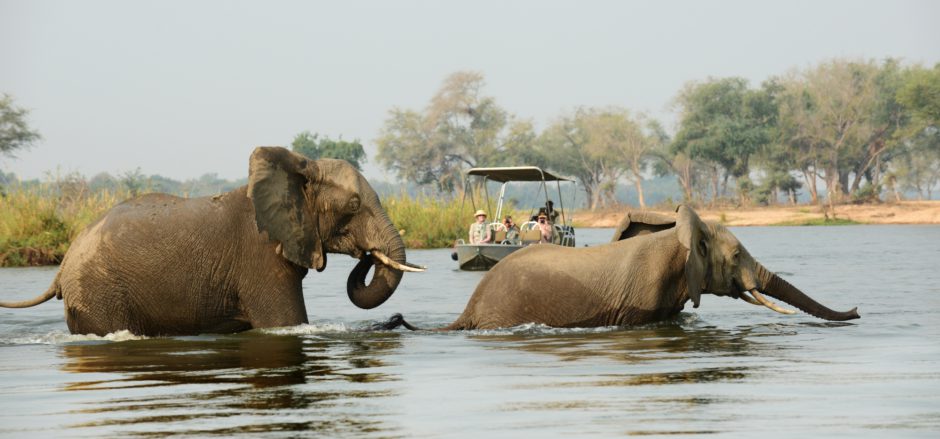
As winter blankets the north, Africa preheats to unveil its signature summer safari. Our beautiful continent – drizzled with summer rains – unfolds like Jamie Oliver’s garden flourishing with fresh herbs. Are you ready to make every bite of your African experience even more delectable? Allow us to share our exclusive summer safari recipe with you…
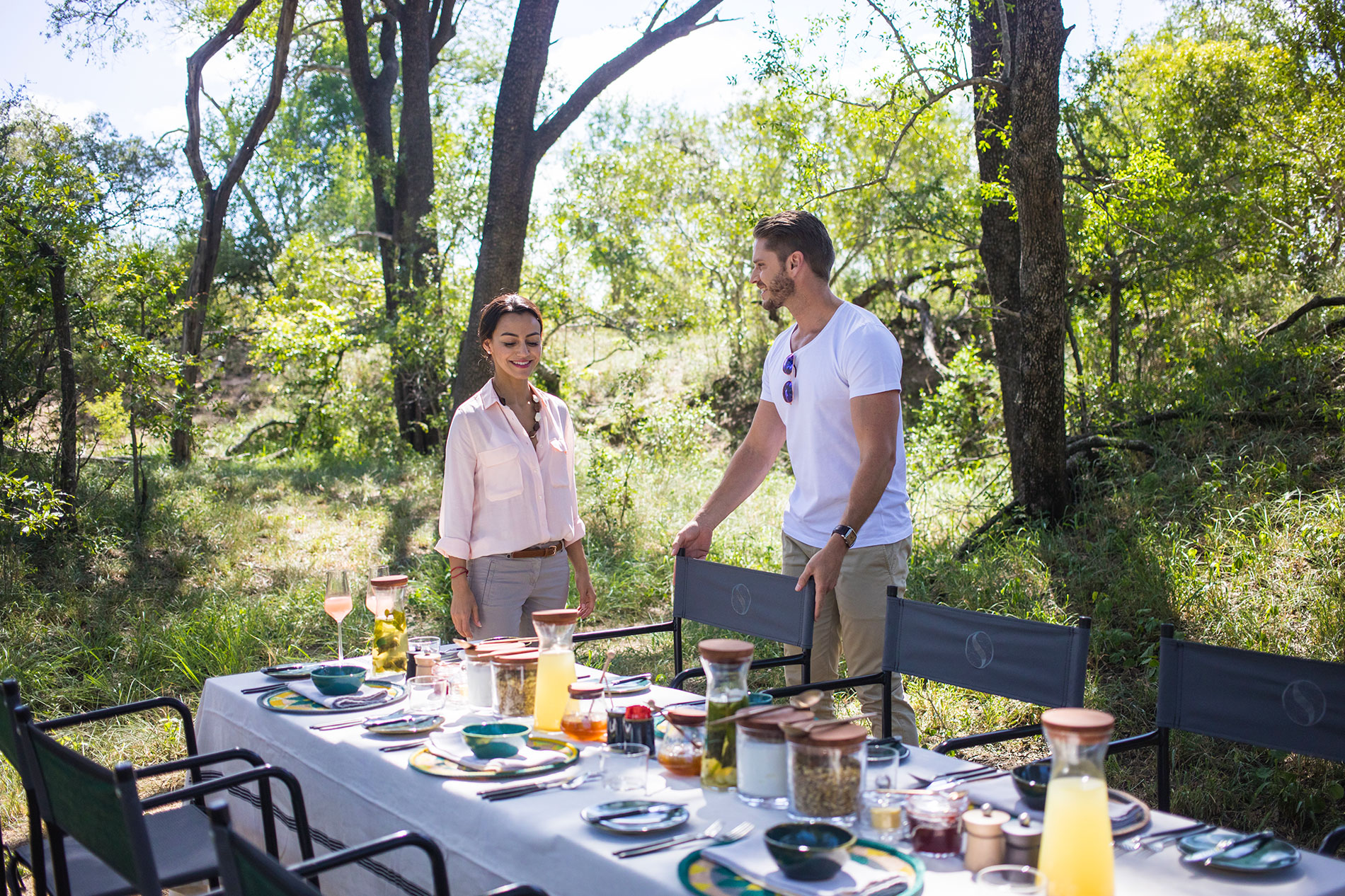
Bush breakfasts are a highlight at Silvan Safari
1. Cape Town – The Appetiser of Every Summer Safari
Your journey begins in Cape Town, South Africa, where Table Mountain stands tall as an iconic centrepiece. This is where your palate is first teased, with the trendy allure of Clifton Beach, the colourful zest of Bo-Kaap, and so many more captivating canapés.
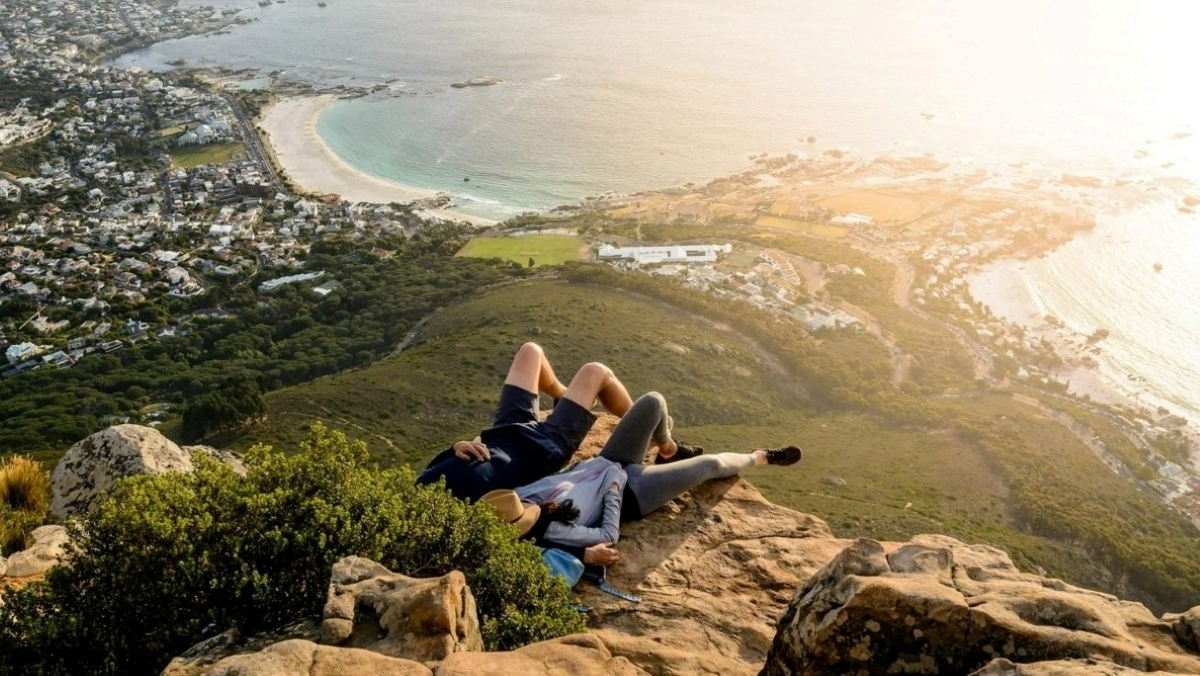
Enjoy mesmerising views from the edge of the Table Mountain National Park
Where to Stay
Garnish your plate with Camissa House if you’re craving panoramic city views. Alternatively, if you prefer a more tangy take on Cape Town living, marinate in the colonial charm of the Cape Grace at the V&A Waterfront.
What to Experience
We suggest adding a private tour of the city and Cape Peninsula to really enhance the ambience of your adventure.

A sensational summer commences at Camissa House
2. Cape Winelands – A Sophisticated Palate Cleanser
As your summer safari simmers, infuse it with the aromatic flavours of the Cape Winelands. A stone’s throw from Cape Town, Stellenbosch and Franschhoek are excellent pairings before diving into Africa’s wildlife-rich landscapes.

The Cape Winelands offers a spectacular array of tastes and sights, Image Credit: Delaire Graff
Where to Stay
Amidst rolling vineyards, you’re spoiled for choice! Savour the scenic beauty of Spier Hotel, indulge in opulence at Delaire Graff Lodge and Spa, or revel in the historic farm setting of Babylonstoren.
What to Experience
In addition to wine tastings, layer your tantalising journey with Spier’s fully-catered picnics, the artistic nuances of Delaire Graff, and the tangy twist of Babylonstoren’s Olive Oil and Balsamic Vinegar Tour.
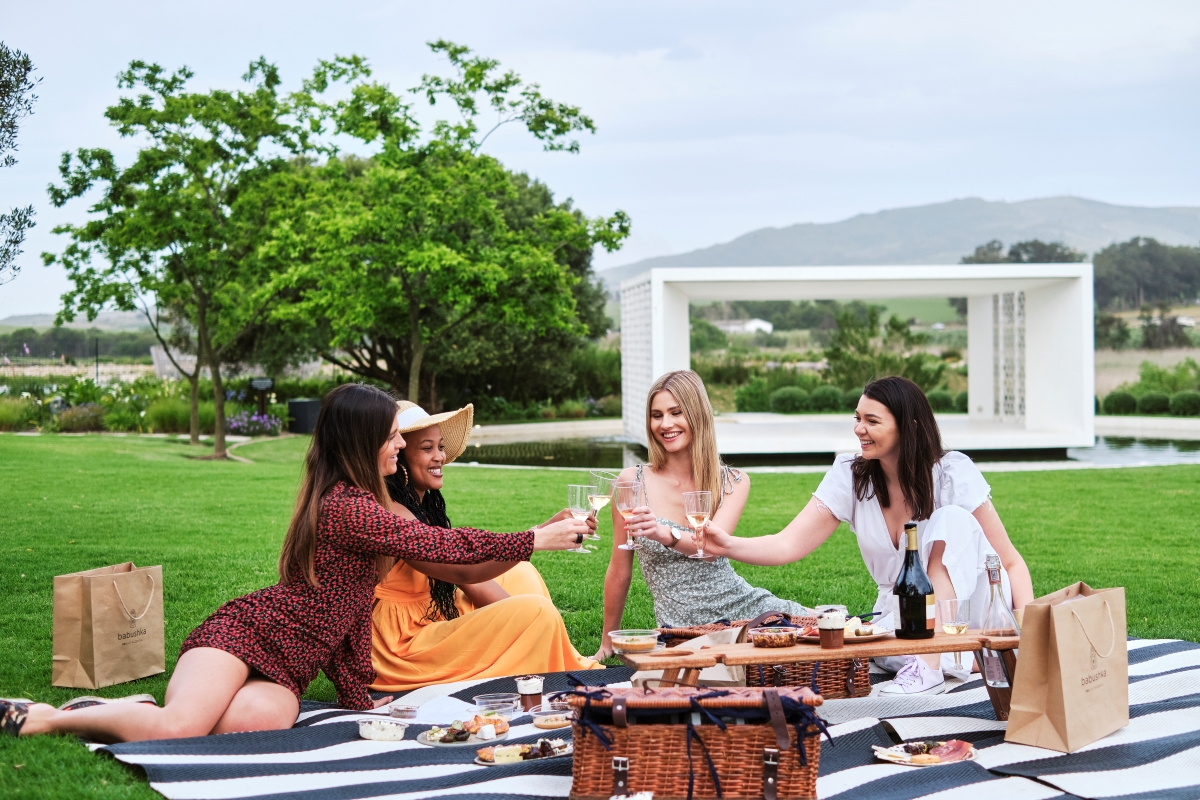
Your summer safari isn’t complete without a picnic, Image Credit: Hazendal
3. Greater Kruger – The Summer Safari Main Course
Roast your summer safari to perfection in the Greater Kruger. With diverse landscapes, various wildlife, including the Big 5, many bird species and luxurious accommodations, Kruger offers a safari experience that’s second to none.
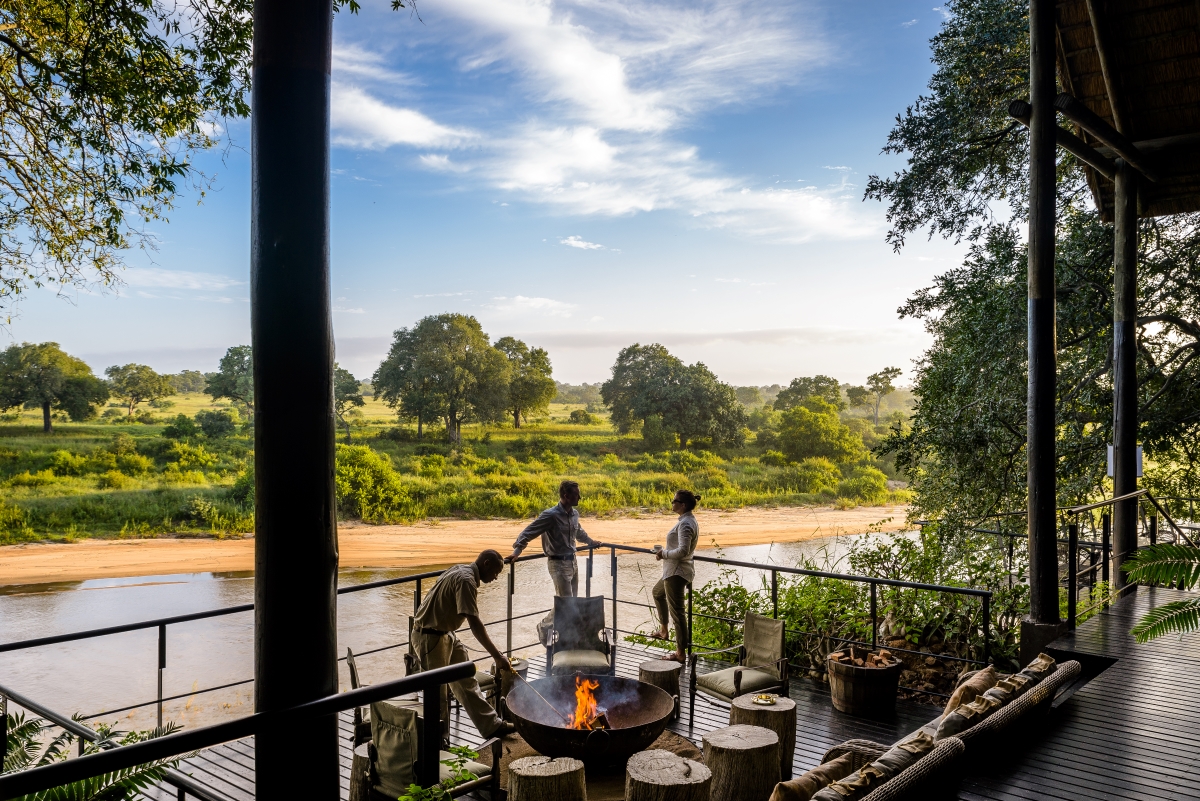
There are a variety of luxury lodges to choose from in Kruger National Park, Image Credit: Singita Ebony Lodge
Where to Stay
Glaze your stay at Kruger with a generous helping of Silvan Safari in Sabi Sand, the cosy tenderness of Saseka Tented Camp in Thornybush, or the wild spice of Senalala Safari Lodge in Klaserie Private Game Reserve.
What to Experience
Pepper your stay with thrilling game drives, the unique Silvan Safari Gin Experience, Thornybush’s enriching community interaction, and an adventurous walking safari at Senalala.
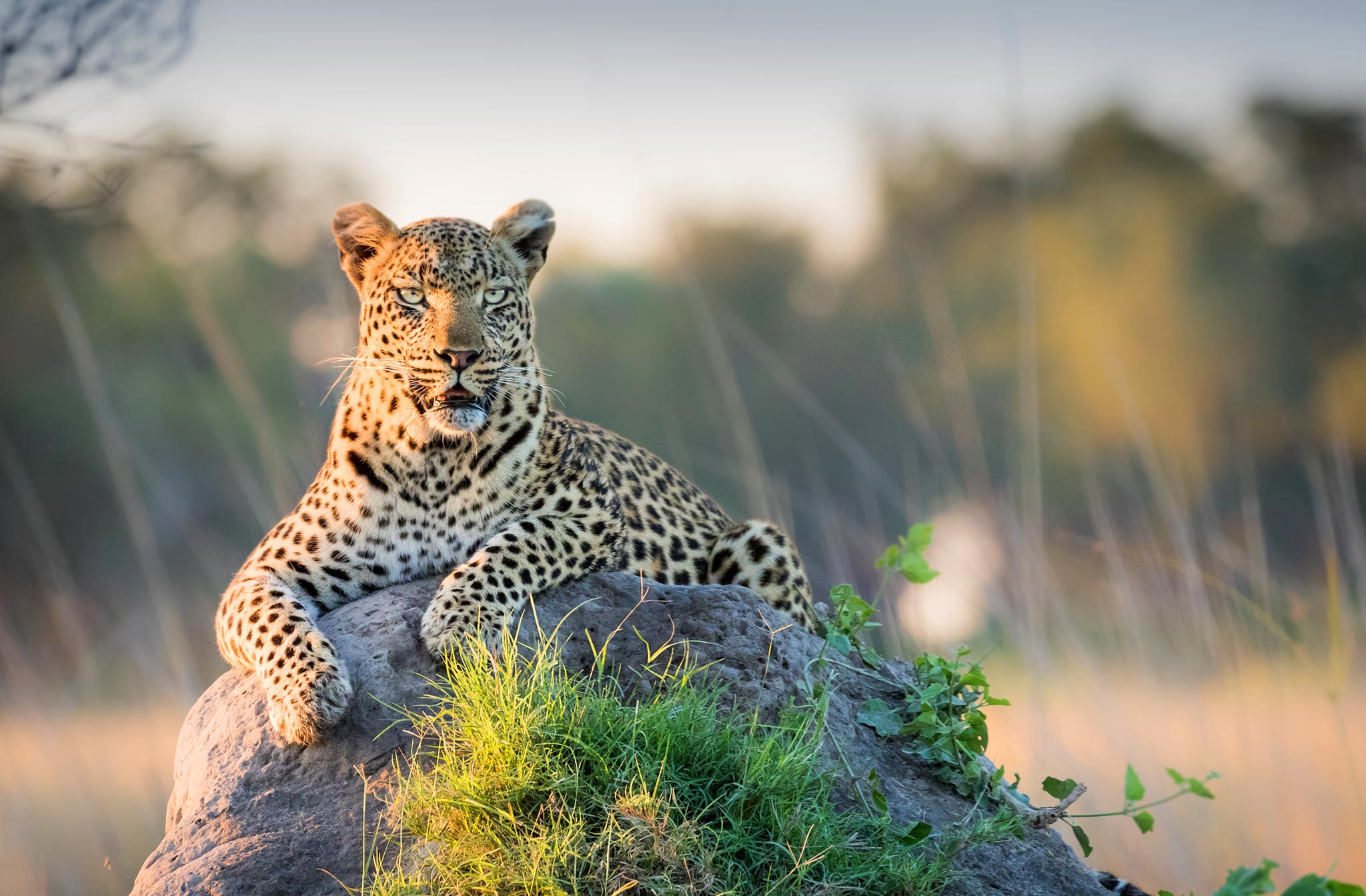
Africa is brimming with all sorts of wildlife surprises
4. Bazaruto Archipelago – The Dessert of Dreams
Conclude your summer safari on a sweet note with the serene beaches of the Bazaruto Archipelago in Mozambique. Think idyllic islands, crystal clear waters and dazzling sunsets. Dreamy right? It’s the perfect backdrop to unwind.
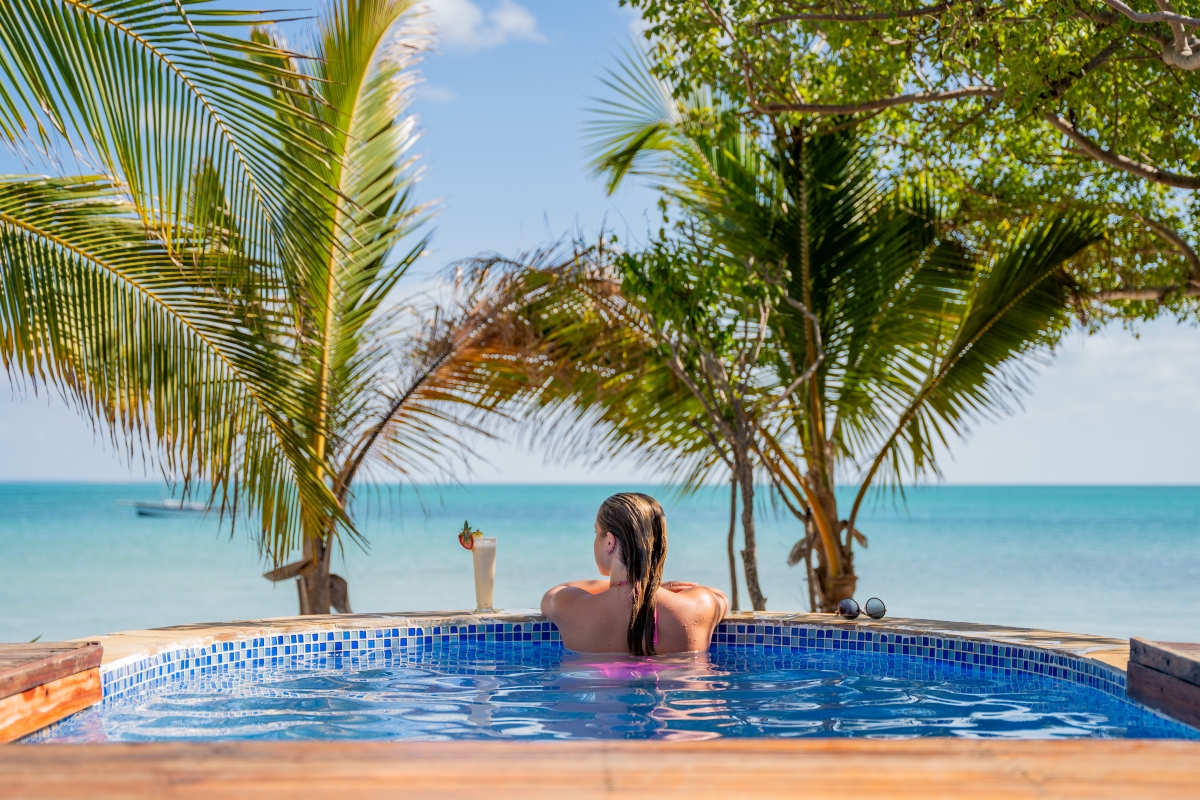
The Bazaruto Archipelago is known as the “Pearl of the Indian Ocean”, Image Credit: Azura Benguerra Island
Where to Stay
Whip up the perfect last serving at Anantara Bazaruto Island Resort and Spa as well as Azura Benguerra Island, complete with heavenly ocean views and a luxurious helping of sumptuous villa toppings.
What to Experience
Add layers to this dessert dish by folding in rich coral reefs, snorkelling, sun-kissed beach days, deep sea diving, horse riding, traditional Dhow sailing, and as many (or as little) watersports as you like!
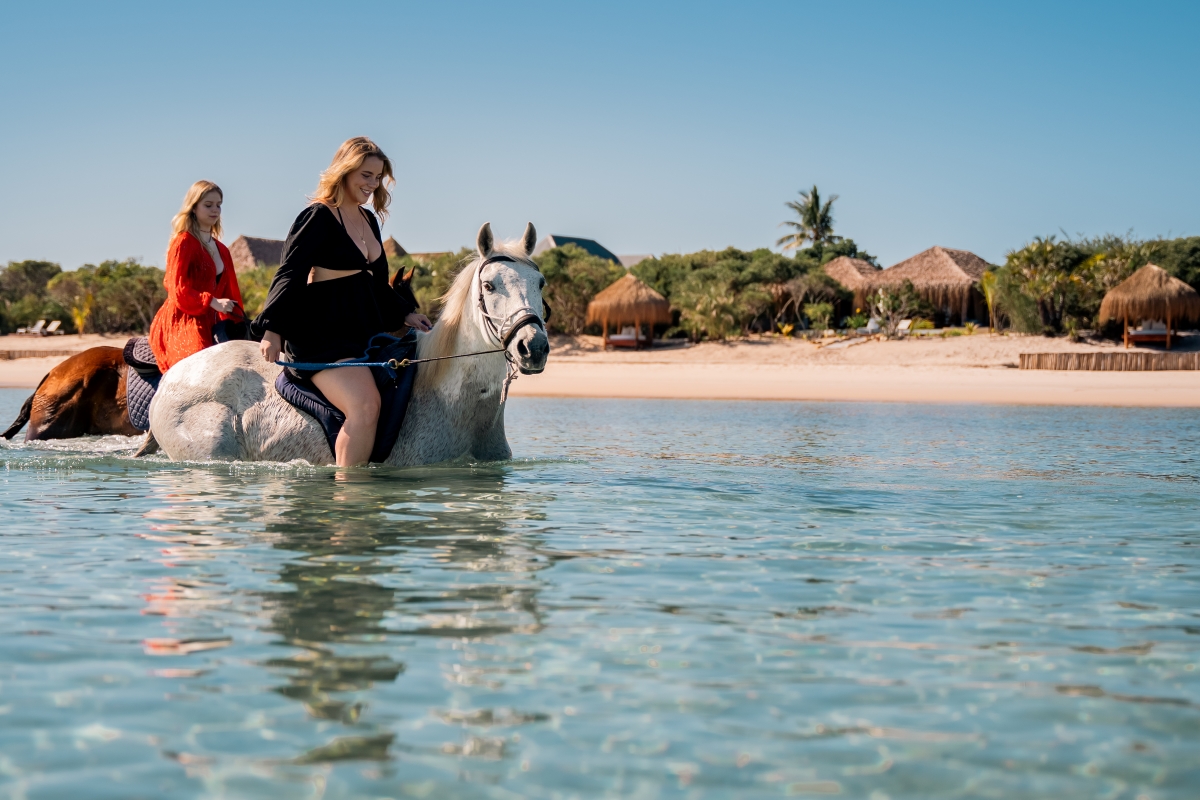
Look forward to an array of island activities, Image Credit: Azura Benguerra Island
A Customised Summer Safari Menu Just for You
And there you have it – our secret recipe for the ultimate summer safari. However, we know that everyone has particular tastes when it comes to preparing their perfect trip.
So, as the gourmet chefs of African travel, we’re here to create a holiday menu just for you! Here are some itinerary options to get you day dreaming…

We have the expertise to tantalise all you travel cravings, Image Credit: Londolozi
It’s Time to Dig In!
Whether you’re craving to squeeze in a sneaky safari in the next couple of months or longing for a wild banquet next year, we’re here to serve the very best. Let’s start planning your summer safari today!
Featured Image Credit: Singita Castleton
